Forums
- Forums
- Duggy's Reference Hangar
- RAF Library
- Hawker Typhoon
Hawker Typhoon
Post a reply
- Go to Previous topic
- Go to Next topic
- Go to Welcome
- Go to Introduce Yourself
- Go to General Discussion
- Go to Screenshots, Images and Videos
- Go to Off topic
- Go to Works in Progress
- Go to Skinning Tips / Tutorials
- Go to Skin Requests
- Go to IJAAF Library
- Go to Luftwaffe Library
- Go to RAF Library
- Go to USAAF / USN Library
- Go to Misc Library
- Go to The Ops Room
- Go to Made in Germany
- Go to Campaigns and Missions
- Go to Works in Progress
- Go to Juri's Air-Raid Shelter
- Go to Campaigns and Missions
- Go to Works in Progress
- Go to Skinpacks
- Go to External Projects Discussion
- Go to Books & Resources
-
12 years agoSat Dec 23 2023, 11:43amDuggy
 Main AdminText by Greg Goebal. (thanks)
Main AdminText by Greg Goebal. (thanks)
The Hawker Typhoon was the result of Air Ministry specification "F.18/37", which reached final form in early 1938 and specified a heavily armed interceptor to destroy heavy long-range escort fighters. The specification called for an armament of twelve 7.7 millimeter (0.303 caliber) Browning machine guns, or preferably four 20 millimeter cannon if development of these weapons then in progress proceeded on course. Such heavy armament meant a heavy aircraft and so a very powerful engine.
The British had three very powerful piston engines in the works. One was the Bristol "Centaurus" sleeve-value air-cooled 18-cylinder two-row radial engine, but prewar air races had biased many in the British air establishment against radials, and engine options felt to be most promising were two 24-cylinder water-cooled inline designs, the Rolls-Royce "Vulture" and the Napier "Sabre". The Vulture and the Sabre were very unconventional engines. The Vulture consisted essentially of two V-12 Peregrine engine cylinder blocks joined top-to-top, with the two blocks driving a common crankshaft. The Sabre consisted of two flat-12 engines sitting on top of each other, with each driving its own crankshaft, and the two crankshafts joined by a common gearbox. Both engines provided about 1,490 kW (2,000 HP).
A design team under the well-known Sydney Camm at Hawker had already been working on designs for powerful interceptors that fit the F.18/37 specification, and quickly sent the Air Ministry proposals. One design was to be powered by the Rolls-Royce Vulture and was known as the "Type R", and the other was to be powered by the Napier Sabre and was known as the "Type N". The Air Ministry quickly accepted the proposals and ordered two of each aircraft. The Vulture-powered Type R was to be named "Tornado", while the Sabre-powered Type N was to be named "Typhoon".
Unsurprisingly, the two aircraft had similar airframes, and in fact they both somewhat resembled a bigger version of the Hawker Hurricane. They were built very strong, had a thick wing, and had tailwheel landing gear, with the main landing gear hinged in the wings and retracting towards the fuselage, giving the aircraft a very wide track. The pilot got in and out of the cockpit through a car-style door.
The first Tornado flew on 6 October 1939 with a 1,313 kW (1,760 HP) Vulture II. The Air Ministry was so enthusiastic about the new Hawker designs that even though they were unproven, an order was placed with Hawker for 1,000 of them, with 500 to be Tornadoes, 250 to be Typhoons, and 250 to be whatever proved to be the better aircraft after evaluation. Since Hawker production was heavily committed at the time, Avro was to build the Tornado and Gloster was to build the Typhoon. Both companies had a relationship with Hawker through the Hawker-Siddeley group.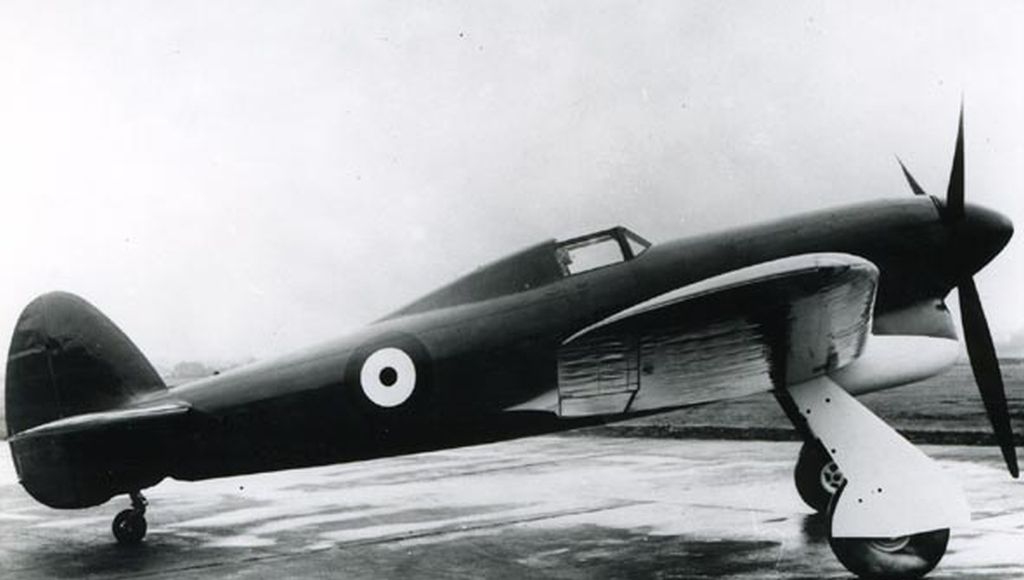
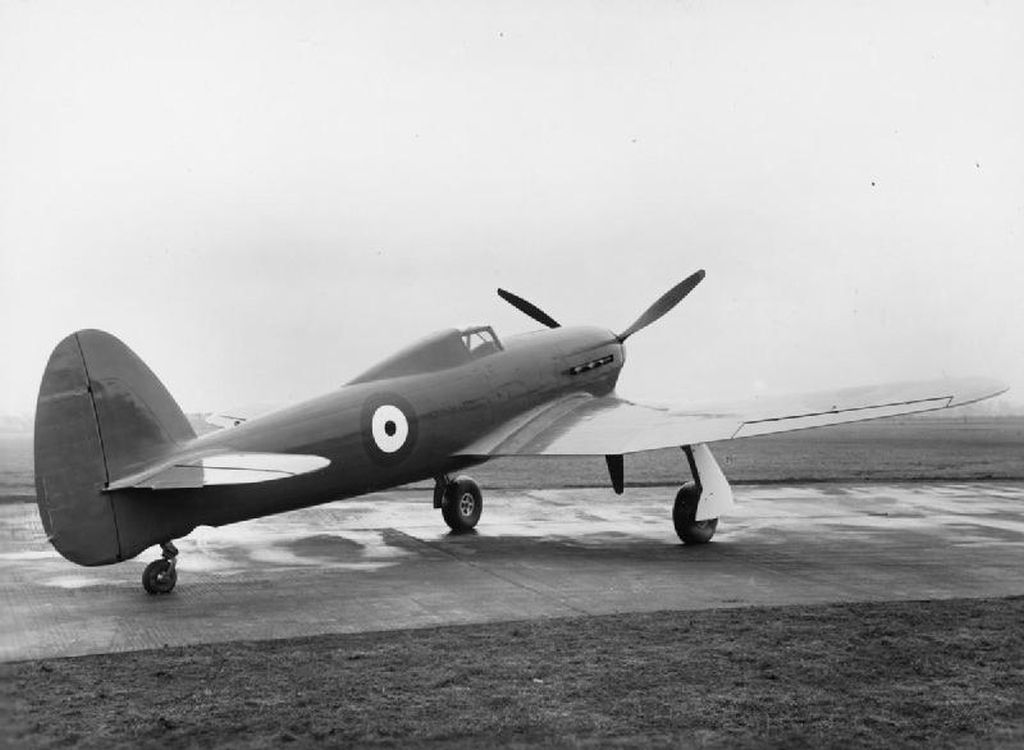
The first prototype Tornado suffered from engine cooling problems and so near the end of 1939 it was fitted with a large chin radiator, giving the aircraft a very distinctive appearance. The second prototype first flew much later, on 5 December 1940.
The first Typhoon prototype flew on 24 February 1940. It looked very much like the updated Tornado, except that the Tornado had two separate rows of exhausts on each side of the engine, while in the Typhoon the sets of exhausts for each engine were merged into what appeared to be a single row. Great things were expected of the Typhoon but the Sabre engine proved unreliable, a taste of things to come. Vibration was a particular problem. On 9 May 1940, the Typhoon prototype suffered a structural failure, breaking aft of the cockpit, with the pilot, Philip G. Lucas, remarkably managing to land the aircraft. The second prototype flew on 3 May 1941.
* The test program proceeded through 1940, and by the summer of 1941 both the Tornado and the Typhoon appeared to be close to production -- except for the fact that the engines, for which so much had been hoped, were proving mechanical nightmares. The Vulture development program was particularly troublesome. The main rationale for Vulture development was to power the Avro Manchester bomber, which was fitted with two of the big engines. The Vulture was so unreliable that one bomber squadron equipped with the Manchester joked that they should be redesignated as infantry. With Vulture development becoming a bottleneck, the decision was made to get rid of the two Vultures and fit the bomber with four Rolls-Royce Merlin inlines, and the result was the superlative Lancaster. That eliminated most of the rationale for the Vulture. Rolls-Royce was heavily committed to Merlin engine production, there was no strong reason to divert resources to work on the Vulture, and so the Vulture was canceled, killing Tornado production in turn. Only one production Tornado ever flew, in August 1940.
Hawker managed to get Air Ministry permission to fit a Bristol Centaurus engine into a Tornado airframe, with this aircraft flying on 23 October 1941. The Centaurus-powered Tornado proved much superior in reliability and performance to either the Vulture-powered Tornado or the Sabre-powered Typhoon. However, although it seemed like a good idea, for whatever reason Air Marshal Wilfrid Freeman, in charge of aircraft procurement, was against it. In his defense it appears he simply didn't want British aircraft development going off in too many directions at one time. The Centaurus was having development problems of its own, and the Centaurus-powered Tornado was set aside for the time being. It was not, however, forgotten.
Below 2nd Sabre engined prototype P5216
Hawker and the RAF were stuck with the Typhoon. Despite the problems, the Typhoon started rolling off the production lines in May 1941, with initial deliveries to RAF squadrons in September 1941. RAF pilots called the big fighter the "Tiffy".
Below Typhoon early production Mk IA's R7614 & R7579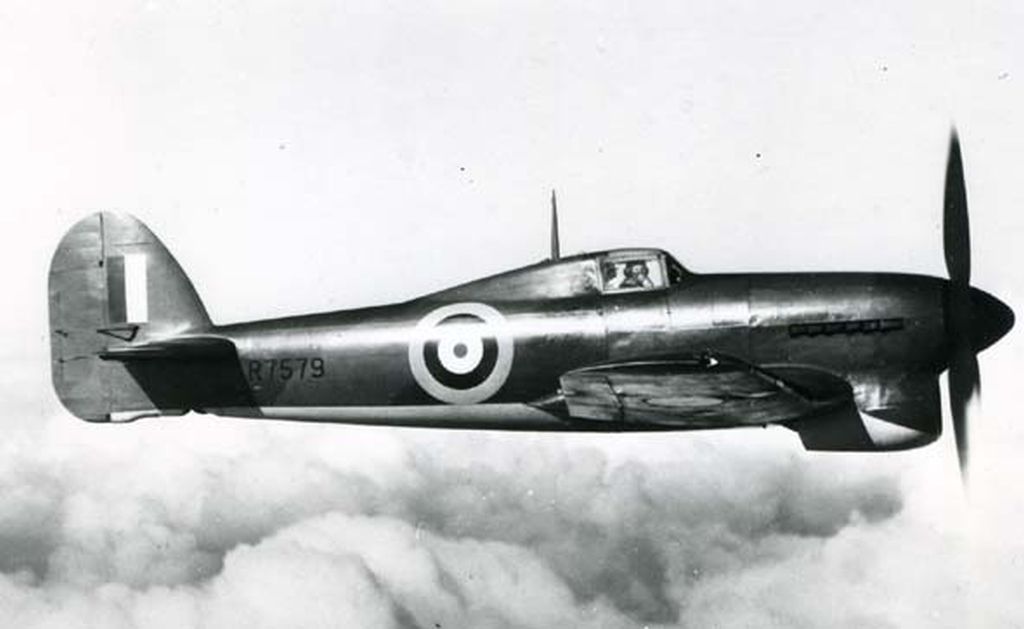
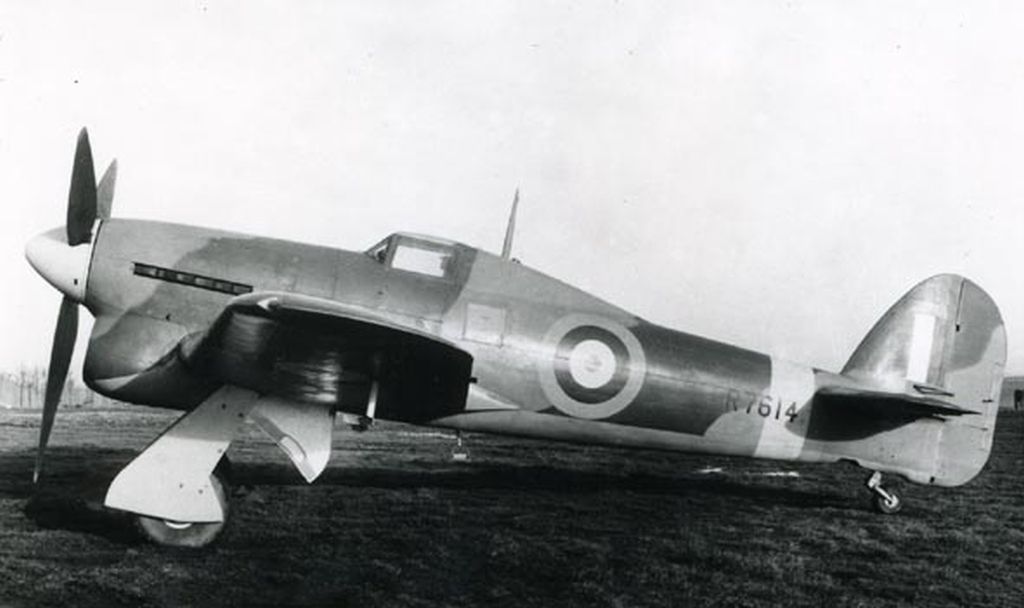
THE TYPHOON MATURES
Early Typhoon production had the twelve 7.7 millimeter machine guns and were known as "Typhoon 1As". 105 were built, but then cannon production began to ramp up, and the twelve machine guns were exchanged for four Hispano Mark II 20 millimeter cannon in all following production. The cannon armament fit had been featured in the second Typhoon prototype.
The Hispano Mark II cannon had been originally designed as a "motorcannon", meaning it was to be mounted between the cylinder banks of an inline engine to fire out the prop hub, dictating a long barrel. As a result, the four cannon extended beyond the leading edge of the wings, giving the aircraft an intimidating appearance. Cannon-armed aircraft were designated "Typhoon IB".
RAF pilots found the aircraft fast and powerful at low altitudes, but it suffered from slow rate of climb and poor high altitude performance. In fact, the Tiffy had more than its share of teething problems. Cockpit visibility was bad; controls were heavy; low speed handling was poor; the Sabre engine tended to catch fire on start-up, and had to be overhauled every 25 flight hours in any case; there were carbon monoxide leaks into the cockpit that required continuous use of oxygen; and the tail section showed a distressing tendency to fall off.
Several test pilots were killed in the Typhoon. Of the first 142 delivered, only seven were not involved in serious non-combat accidents due to engine or airframe failures at one time or another. The tail problems turned out to be due to elevator flutter and were cured by modifying elevator balance, but that didn't happen until very near to the end of the war. Since nobody knew what was causing the trouble before that time, a distinctive row of "fish plates" was attached in a ring around the fuselage just ahead of the tailplane as an interim measure to keep the tail on.
* Unsurprisingly, the Air Staff and Ministry of Aircraft Production wanted to kill the Typhoon. The aircraft was given a reprieve in late 1941 when Luftwaffe Focke-Wulf FW-190 fighter-bombers started making fast low-level "hit and run" attacks in ones and twos on British coastal installations and strategic targets. The Typhoon was the only RAF fighter fast enough to catch the raiders.
The Typhoon's prospects for survival improved in 1942, when it became obvious that the Tiffy's rugged airframe, powerful engine, and heavy armament made it an excellent fighter-bomber. The leading advocate for the type was one of the aircraft's pilots, Roland P. "Bea" Beamont, who flew low-level attack missions to demonstrate the Typhoon's virtues as a strike aircraft, and was energetic in its defense. The Typhoon was evaluated with drop tanks, two 450 kilogram (1,000 pound) bombs, and racks for eight 27 kilogram ("60 pounder") rocket projectiles ("RPs"). Interestingly, during trials a Typhoon firing RPs with inert warheads had them bounce up and punch through the wings of the aircraft in front. Though the pilot was undoubtedly startled, the rockets did no serious damage to his aircraft.
All Typhoons were presently assigned to the new RAF 2nd Tactical Air Force to attack ground targets and coastal shipping. Locomotives were a preferred target, with Typhoons blasting as many as 150 trains per month at the peak of this activity. The straight, tapered wings of the Typhoon were set well forward, and from above or below the fighter had a strong resemblance to a Focke-Wulf FW-190, which led to a number of "friendly fire" losses early on. As a result, the Typhoons were distinctively marked with black and white stripes painted around the wings. By the time of D-Day, 6 June 1944, most Allied aircraft would sport such "invasion stripes".
* While there would never be a "Typhoon 1C", incremental improvements were made to the Tiffy in production. One of the most significant was replacement of the framed canopy and automobile-style doors with a sliding "bubble" canopy. This greatly improved the pilot's field of view. Deletion of the doors was welcome as well, since they tended to either stick or come open on their own during combat maneuvers, and their replacement by fixed cockpit walls meant that various aircraft controls could be more conveniently located. The bubble canopy seemed like such a good idea that the Americans picked it up immediately, implementing it on the North American P-51 Mustang and the Republic P-47 Thunderbolt.
There were less noticeable changes. The exhaust pipes were made longer to reduce the carbon monoxide leakage problems. The de Havilland Hydromatic propeller went from three blades to four. The rigid radio mast on the rear fuselage was replaced by a flexible whip antenna. Pilot armor protection and armor glass were added. Fairings were placed over the four cannon barrels, and improved feed mechanisms were introduced to reduce the jamming problems that plagued them early on. Sighting mechanisms for dropping bombs and firing RPs were improved.
Under the cowling, the Sabre engine was improved as well. The early "Sabre IIA", rated at 1,625 kW (2,180 HP), led to the "Sabre IIB" with 1,640 kW (2,200 HP) and the "Sabre IIC" with 1,685 kW (2,260 HP). Reliability improved significantly after the painful early days, with Bristol engineers methodically adding improvements. However, the Sabre never managed to overcome its tendency to catch on fire on startup. Some sources claim the problems were ultimately mostly due to the failure of engine mechanics to follow factory recommendations on engine service, but whatever the cause it remained a major problem, with 28 Typhoons burned up in this fashion during 1944 and 1945. A well-known painting of a Typhoon in colors worn in the late summer of 1944 features the following text marked on the aircraft's radiator:
IF THIS ENGINE CATCHES FIRE ON STARTING,
DON'T JUST WAVE YOUR ARMS AT THE PILOT --
TRY PUTTING THE BLOODY THING OUT AS WELL.
For better and for worse, the Sabre was a unique engine. Its starter system used what looked like a giant shotgun shell to get the big engine turned over with a loud bang, and once rolling it turned over at fantastic RPM. The Sabre had a distinctive whine that German troops learned to recognize and fear.
TYPHOON IN COMBAT
By the time of D-Day, 6 June 1944, Gloster had built almost 2,000 Typhoons, and they were serving in 26 RAF squadrons. The Tiffies helped pave the way for the invasion by blasting coastal radar stations, and were put to good use as Allied armies advanced, using a "cab rank" system where fighters stood by in the air and awaited calls from ground controllers for targets to destroy. On 17 July 1944, Typhoons attacked a German staff car that turned out to be carrying the commander of German forces opposing the invasion, Field Marshal Erwin Rommel. Rommel was badly wounded and did not return to action, since he was implicated in a plot to assassinate Adolf Hitler and forced to commit suicide.
The high point of the Typhoon's career was the Battle of the Falaise Pocket in the third week of August 1944. German Army divisions, forced by Hitler's obstinate insistence that they stand their ground when they should have withdrawn, were almost completely encircled in the area of the French town of Falaise by the Allied armies. The Germans in the pocket were then crushed by artillery and air strikes. RP-firing Typhoons, or "Rockoons", were significant contributors to the butchery, hitting everything that moved, with Tiffy pilots walking up to a target with cannon fire and then loosing a devastating salvo of RPs. Allied scouts who moved into the area after the shooting died down described it as a "slaughterhouse", with German survivors in numb shock. The Allied victory ended serious German resistance in France.
The Typhoons operated out of hastily built airstrips behind the front lines, flying off pierced-steel planking or steel mesh. That August was as usual hot and dry, and the aircraft's big propeller churned up dust that threatened the Sabre engine. A new dust filter was designed in half a day and put into production the next day; an initial batch was delivered by a Douglas C-47 transport on the third day, and all 500 Typhoons operating from French bases were fitted with the new filter by the fifth day.
On 24 October 1944, massed Typhoons attacked the German 15th Army headquarters at Dodrecht in the Netherlands in a carefully planned assault. The Tiffies struck in three waves, killing two generals and 70 other staff officers.
A total of 3,300 Typhoons was built by Gloster, plus 15 built by Hawker along with the two prototypes. About 60 Typhoons were converted to a photo-reconnaissance configuration designated the "FR.1B", carrying two 20 millimeter cannon and various camera fits.
One Typhoon was experimentally fitted with AI Mark VI radar for use as a night fighter and designated "NF.IB", but this scheme did not go into production. Napier experimented with at least one Typhoon fitted with a annular "ring" radiator that gave it the misleading appearance of a radial-engine fighter, but though the fit was technically very successful and noticeably improved performance, the Air Ministry did not want to disrupt production and nothing came of it. Hawker also experimented with six-cannon armament, but nothing came of that scheme either.
Some Typhoons were used as hacks and target tugs for a short time after the war, but within a few years almost all had been scrapped. The US Army Air Forces received one in 1944 for evaluation at Wright Field, returning it to Britain in 1967. This is the only Typhoon known to have survived to the present.
Despite the fact that the Typhoon became a significant asset to the Allied war effort, the aircraft's teething problems and its limitations could not be ignored. Even when it worked as planned, it was a handful to fly, due to its great weight, high wing loading, and other peculiarities. Not all its pilots loved the machine, and it would be remembered almost as much for its faults as for its virtues.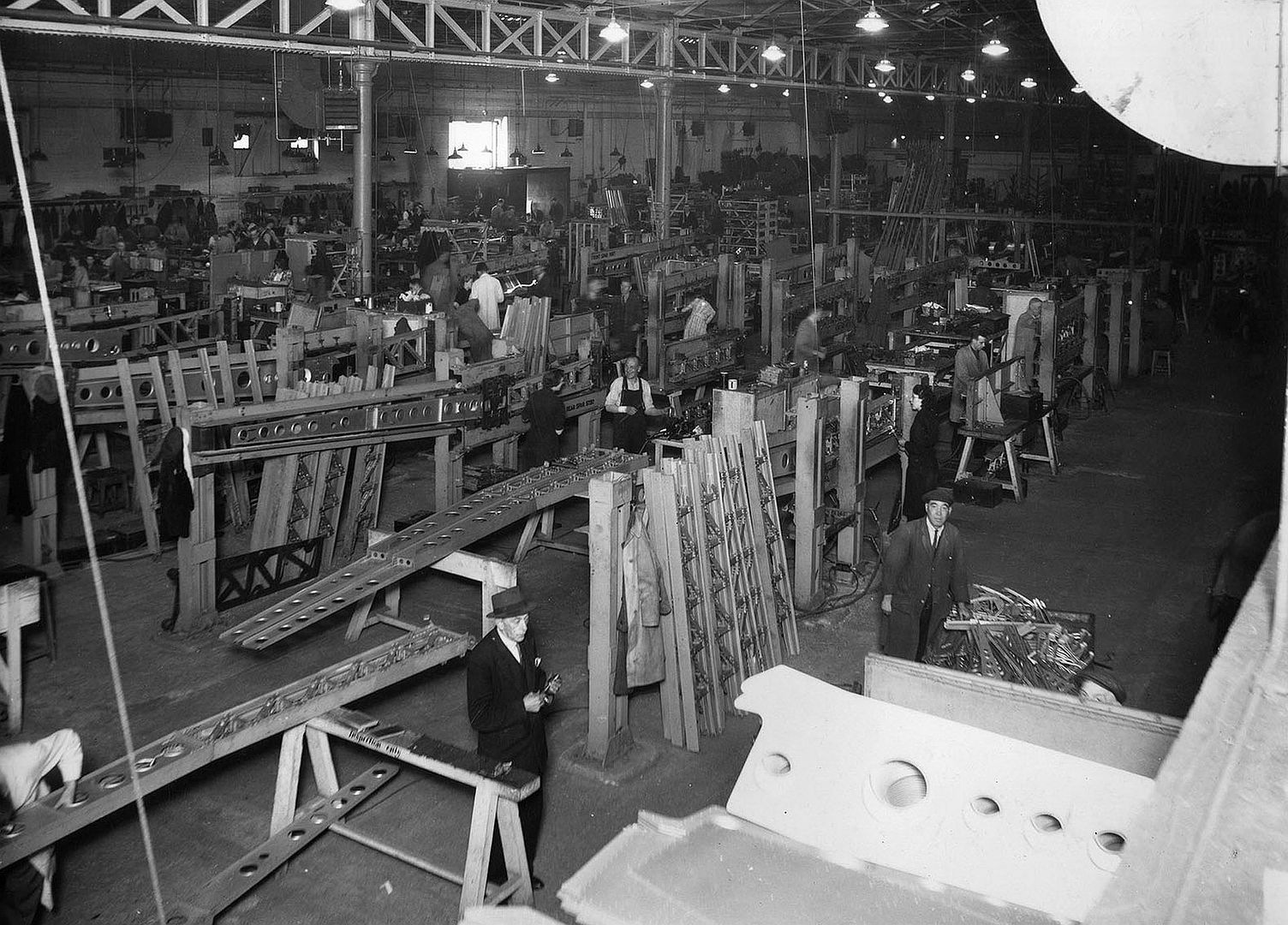
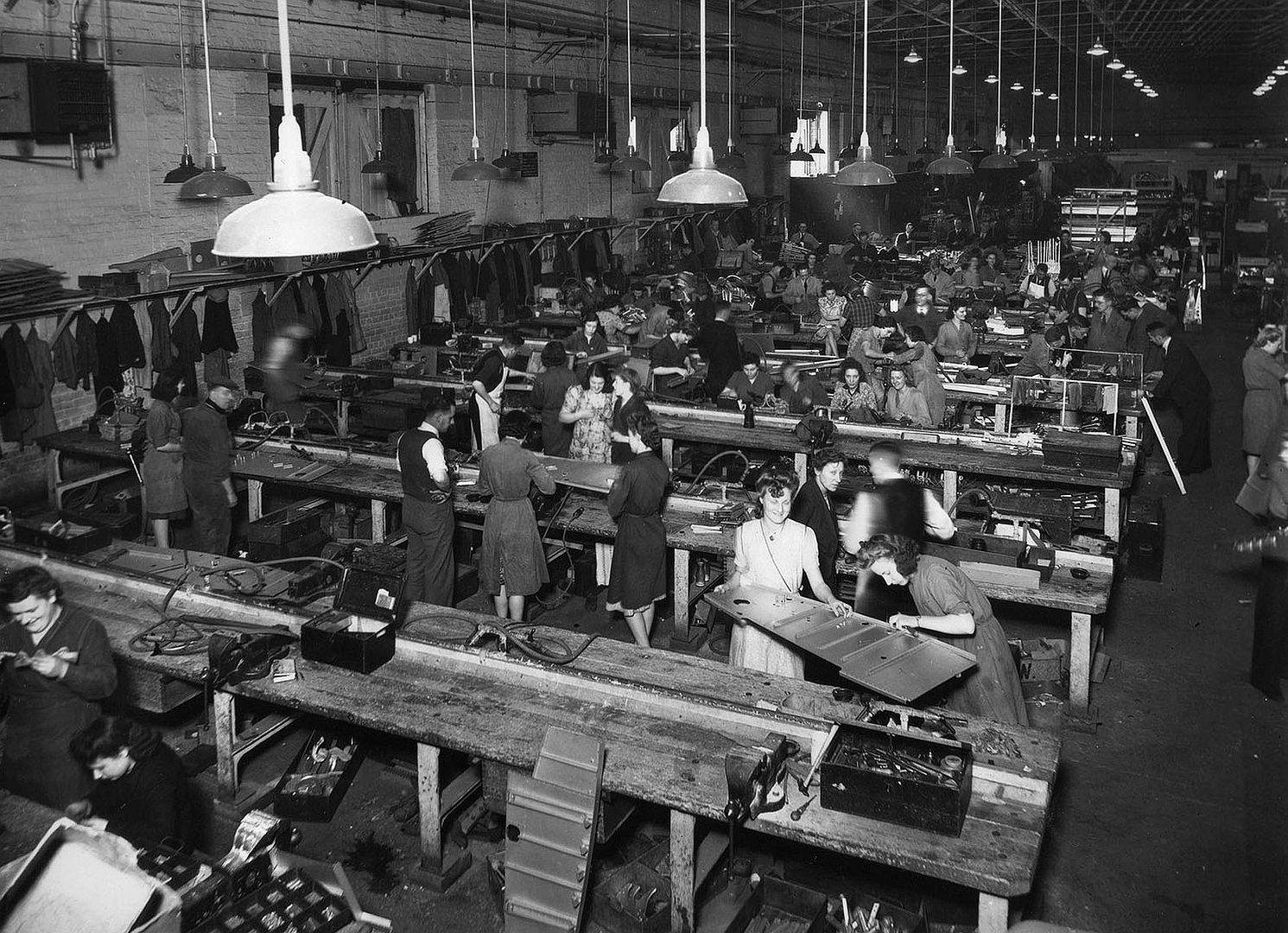
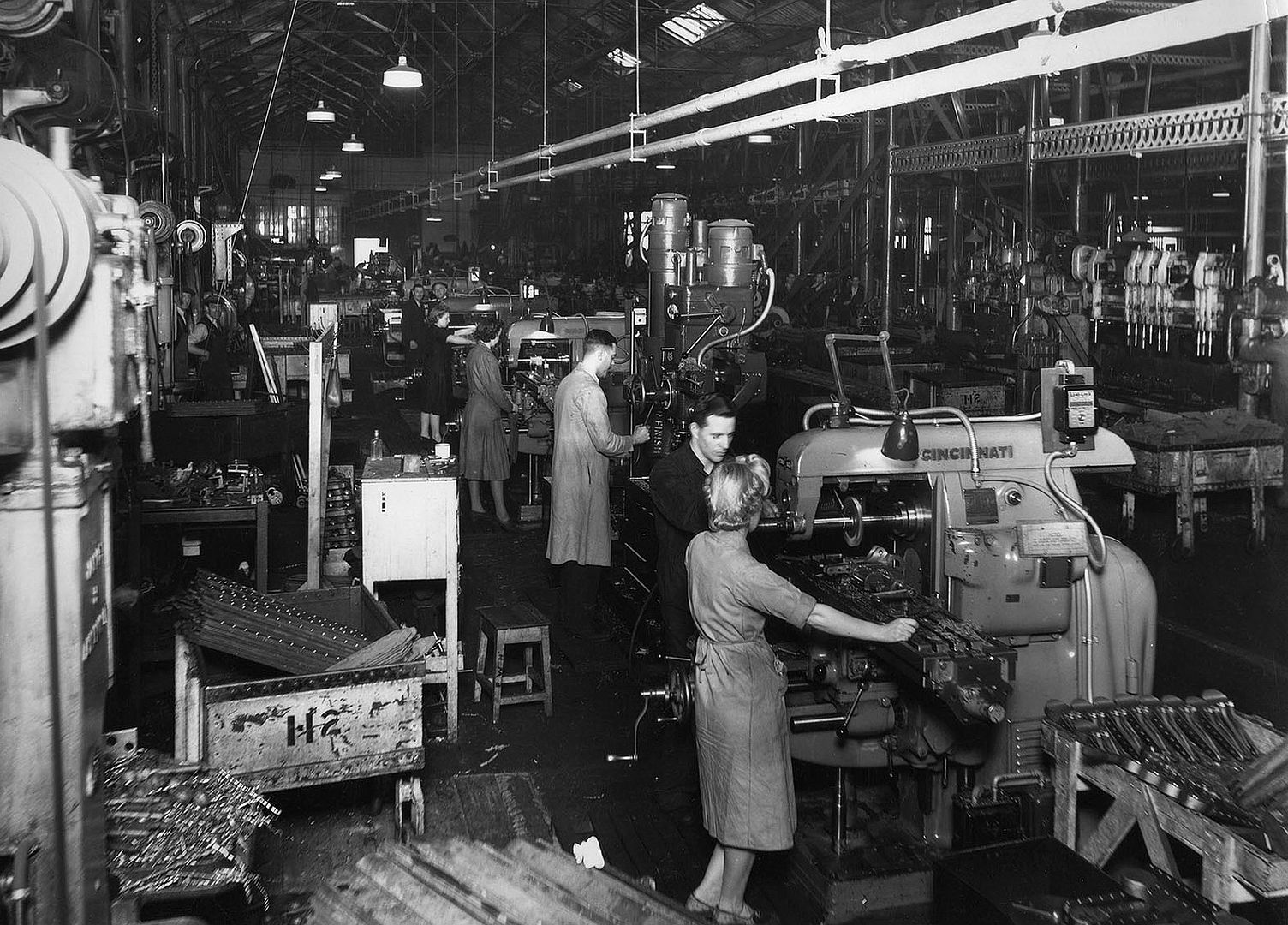
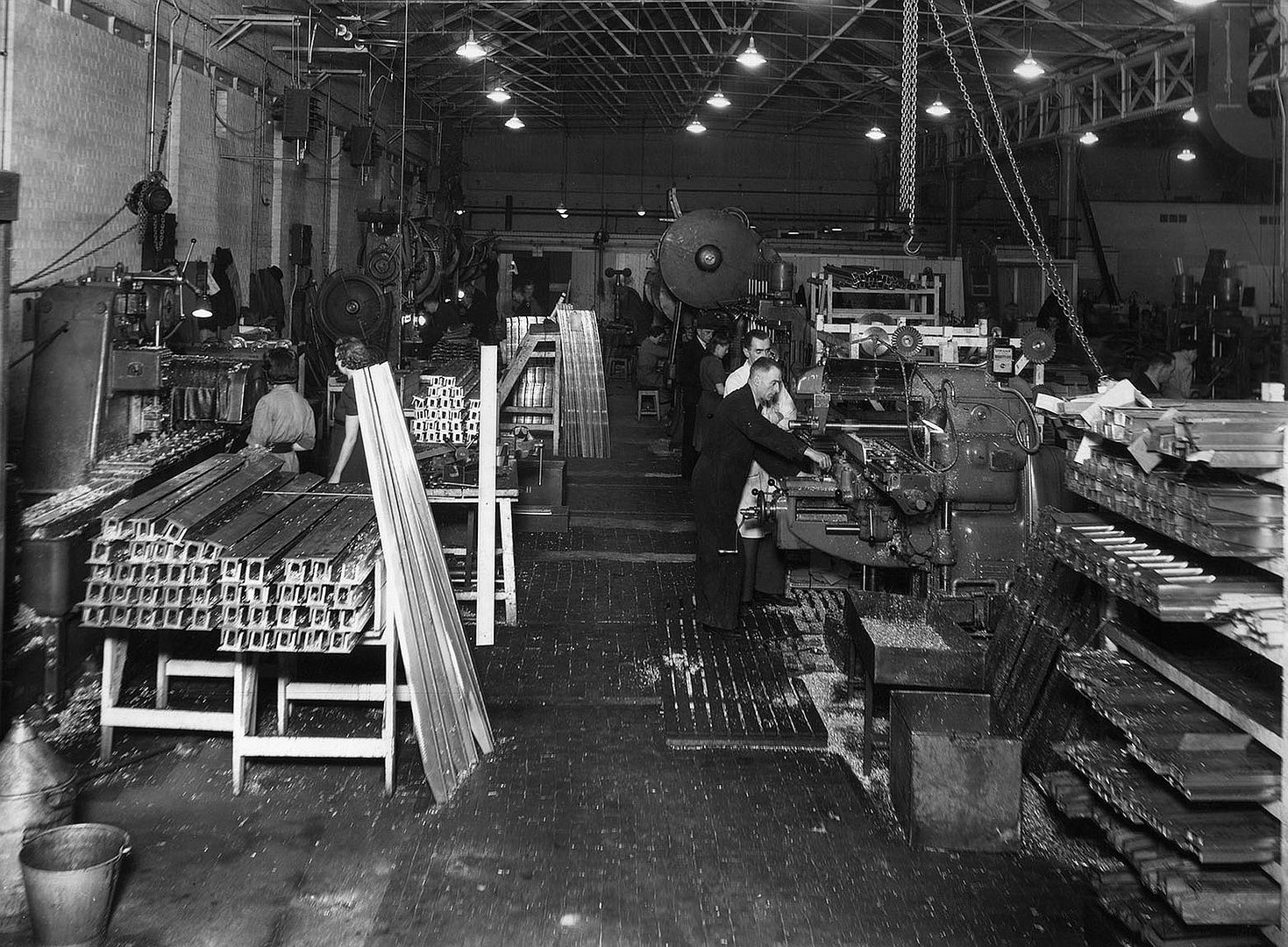
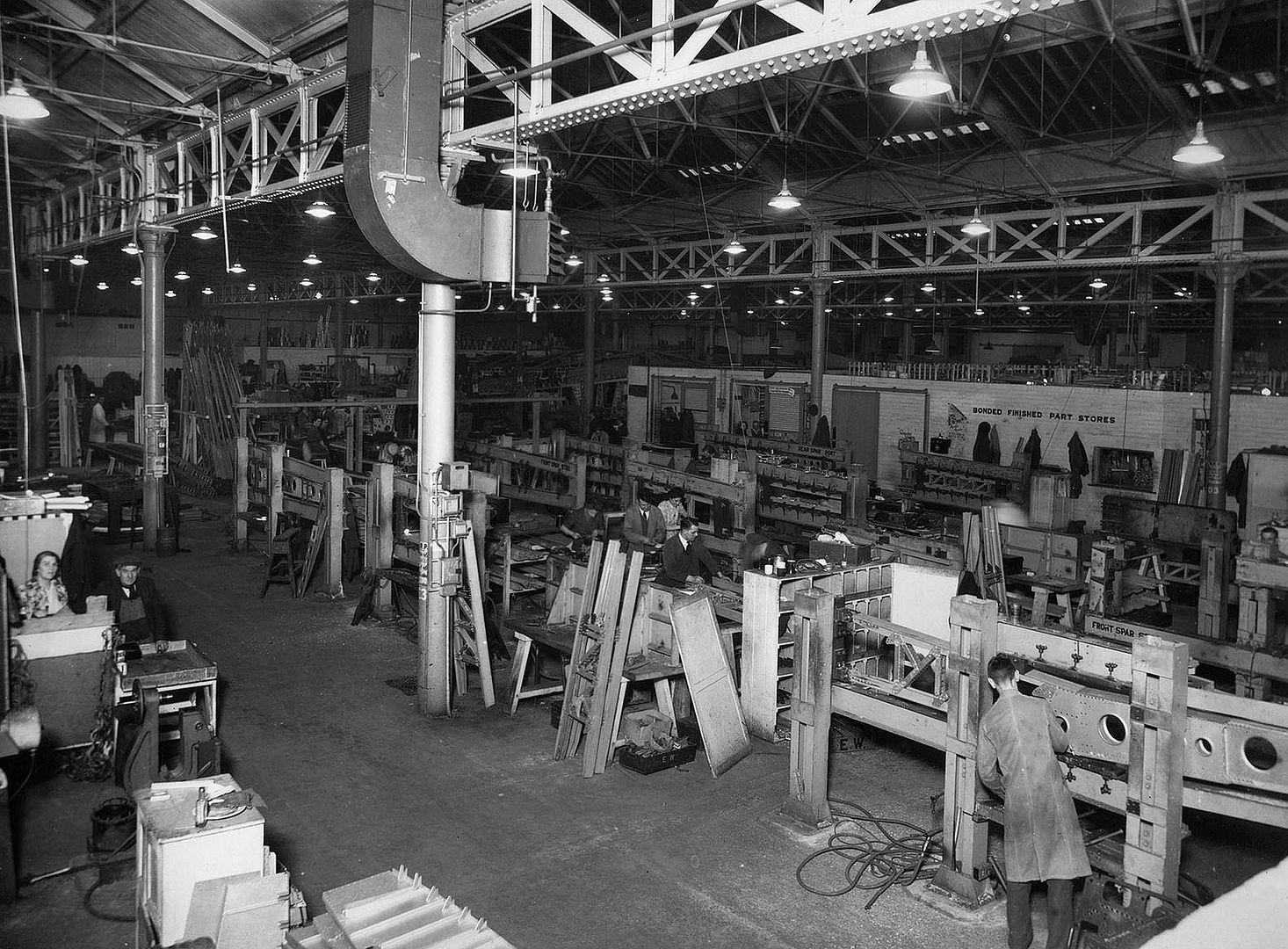
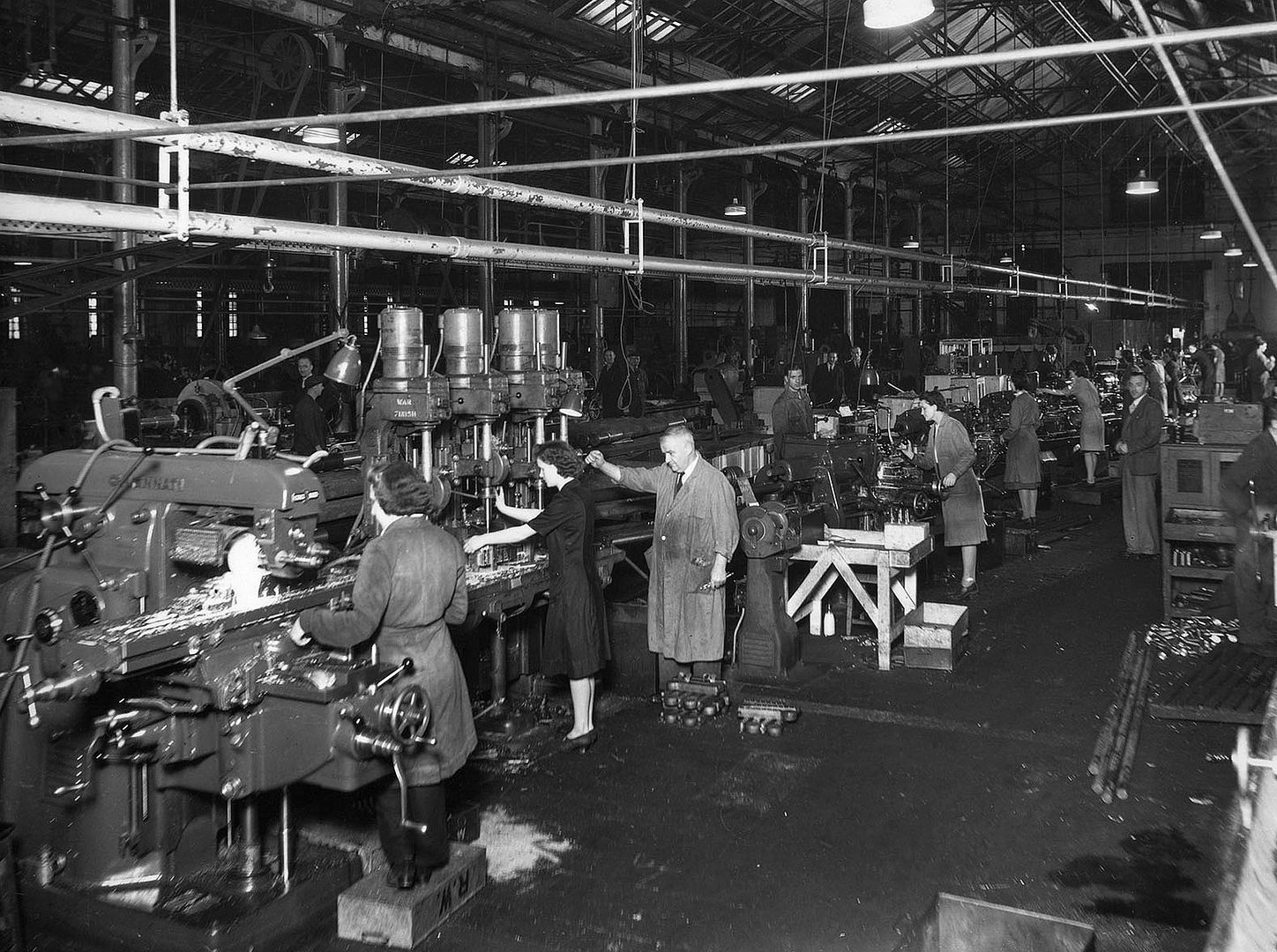
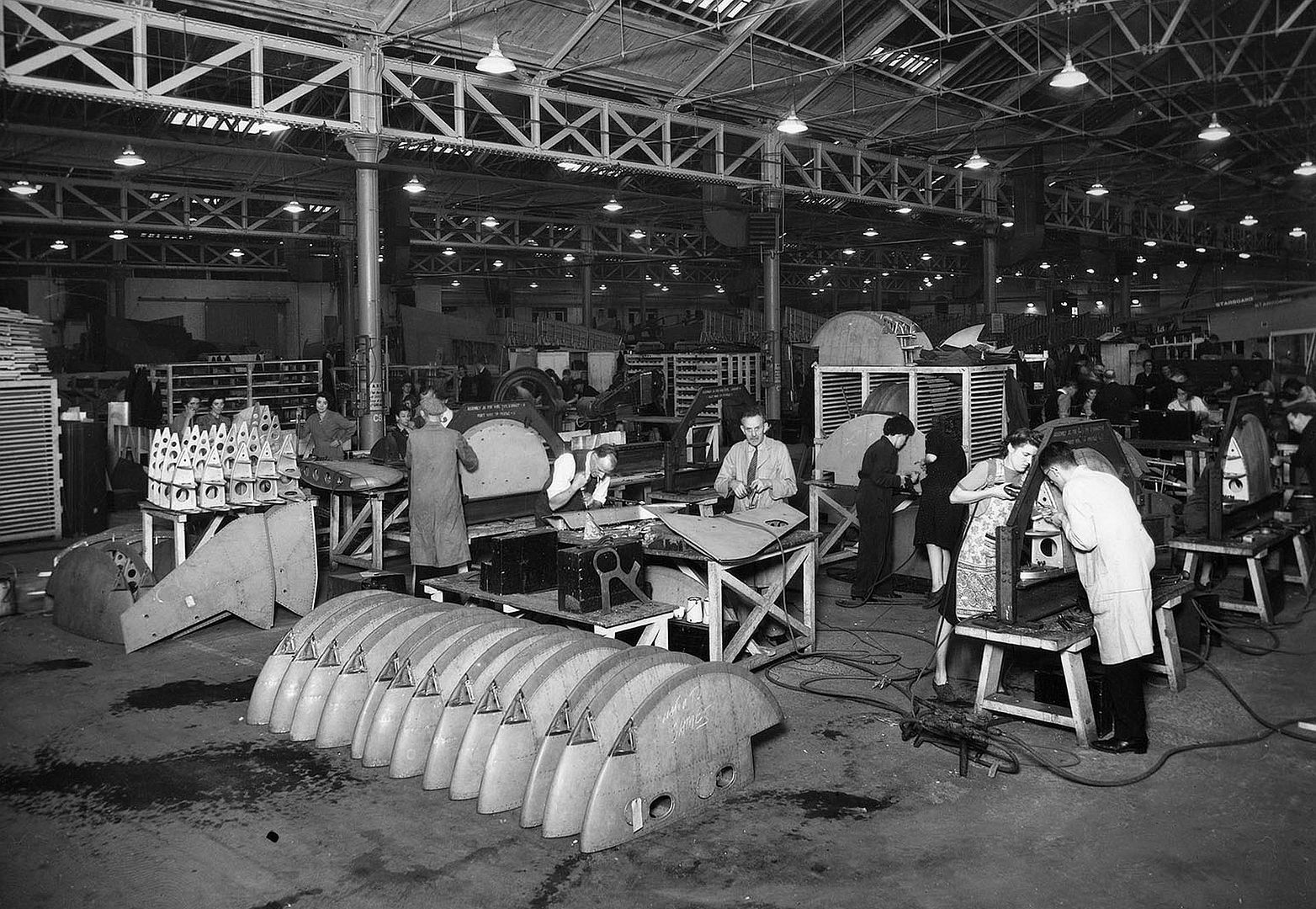
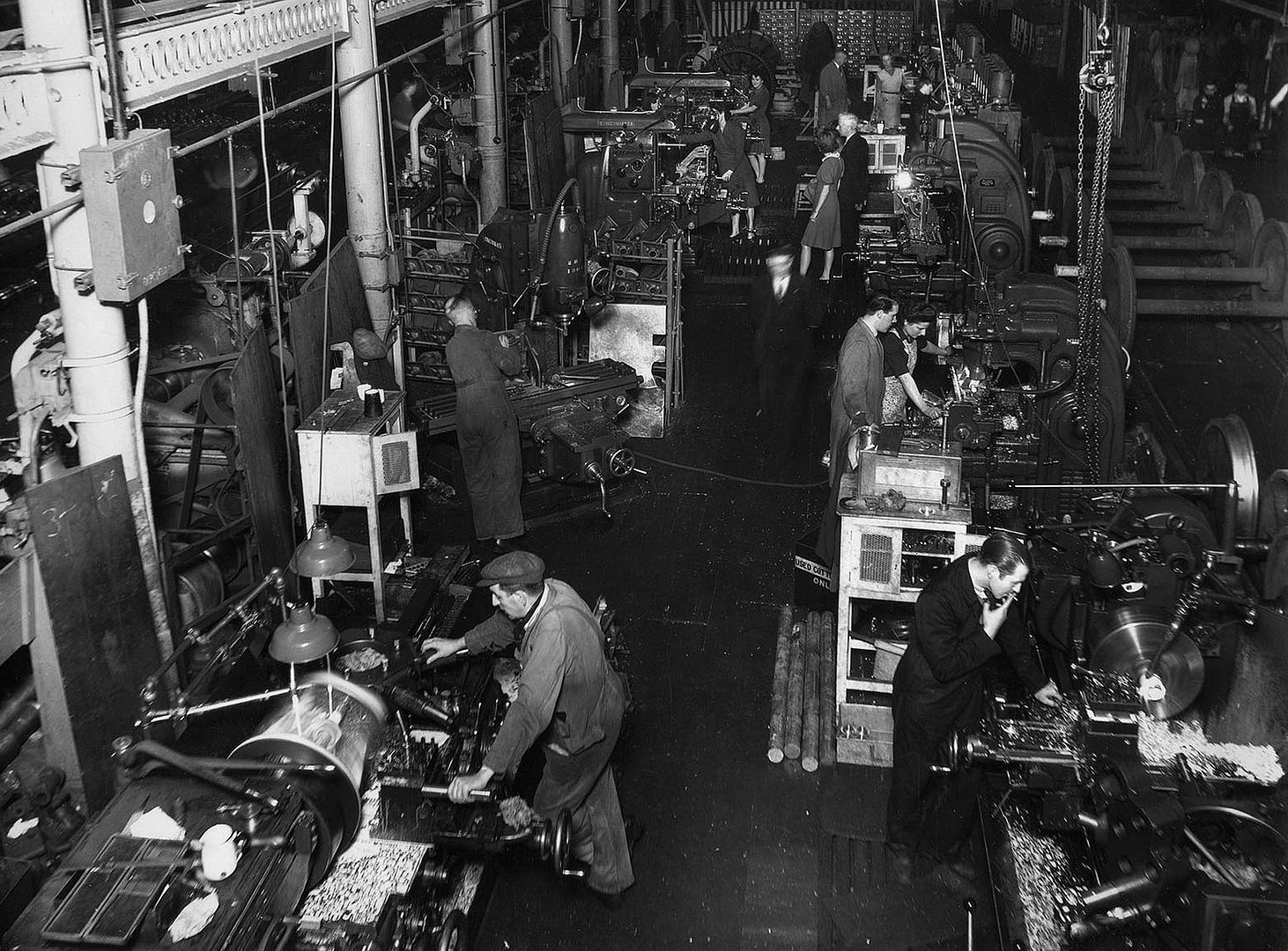
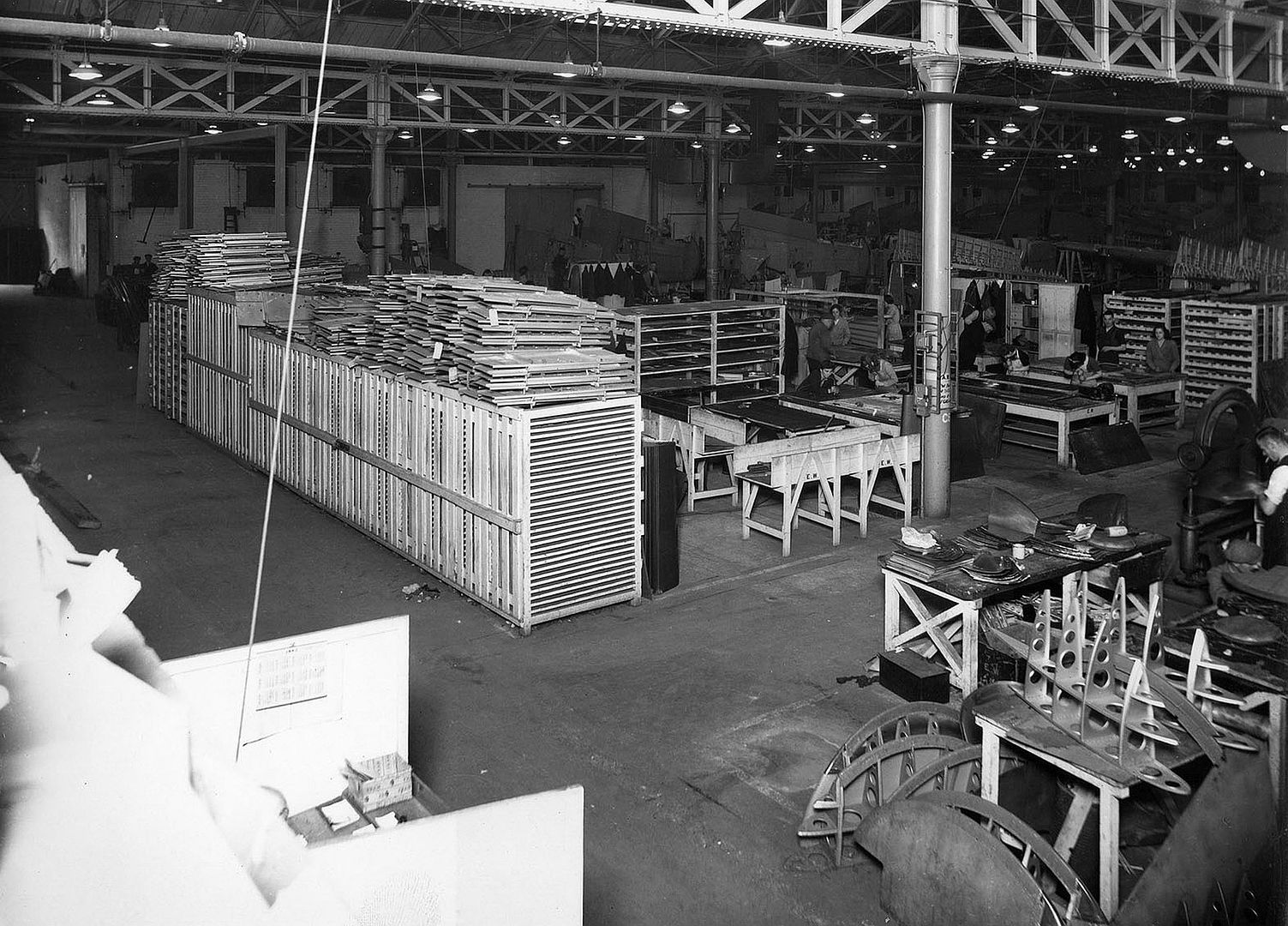
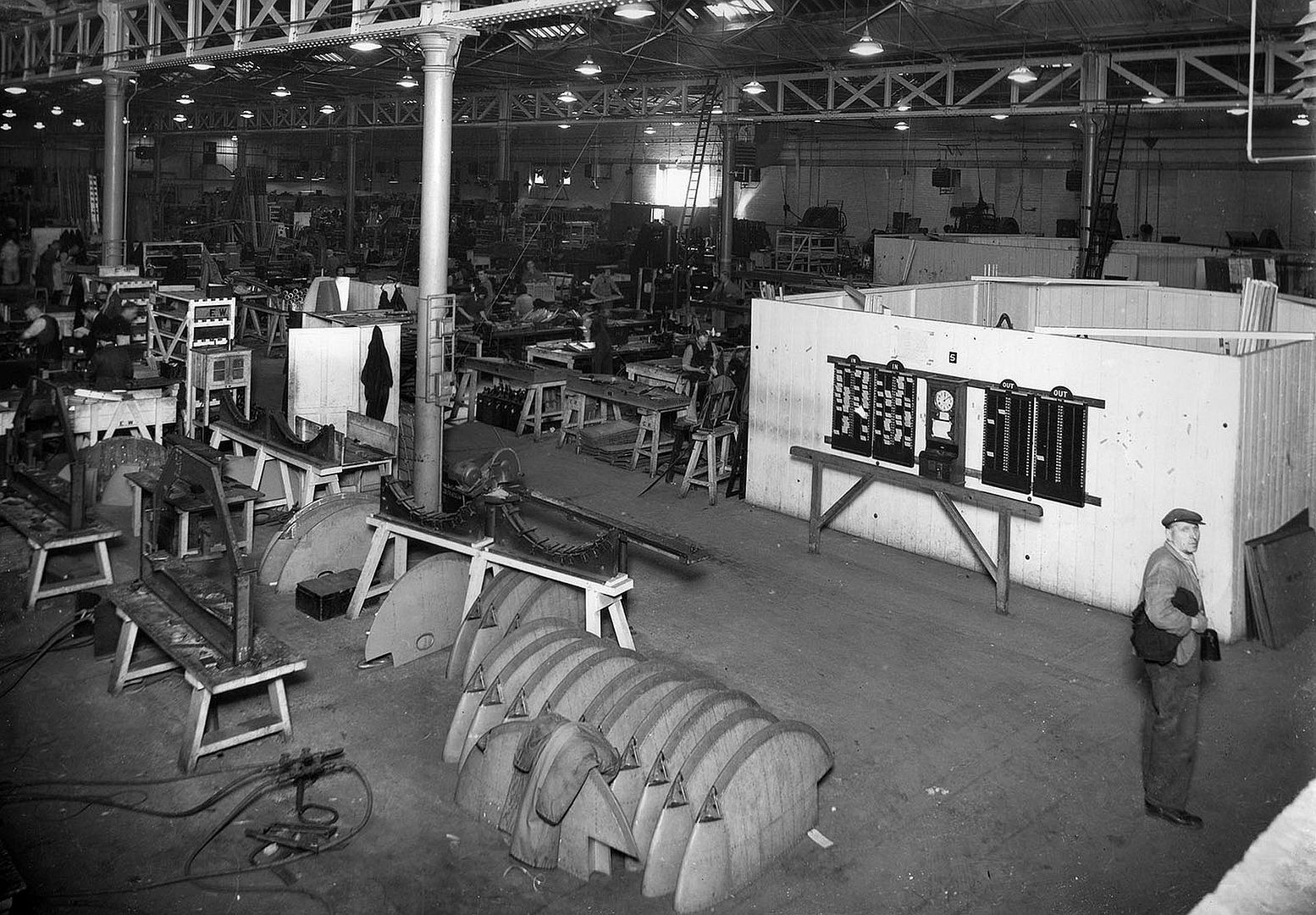

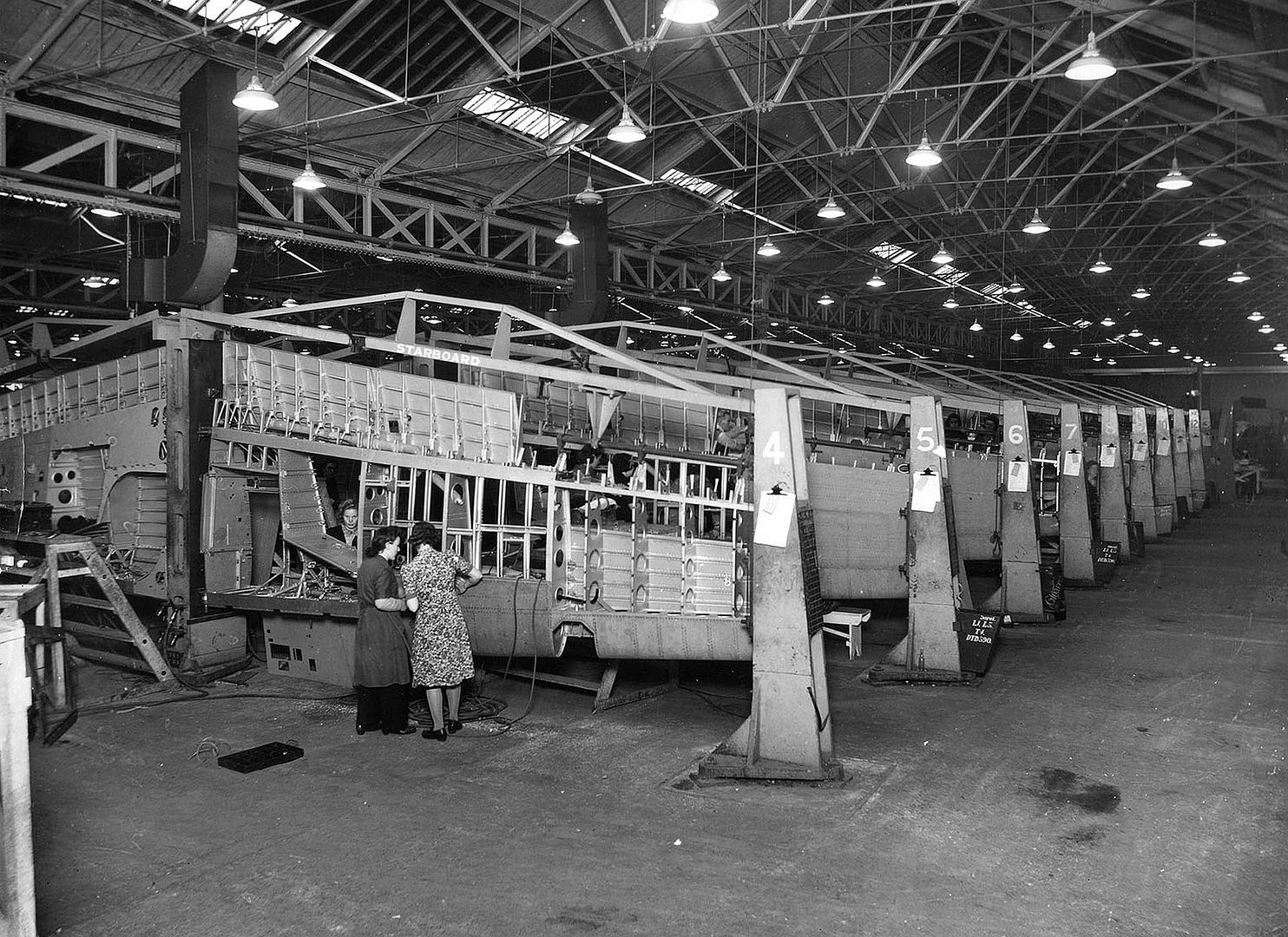
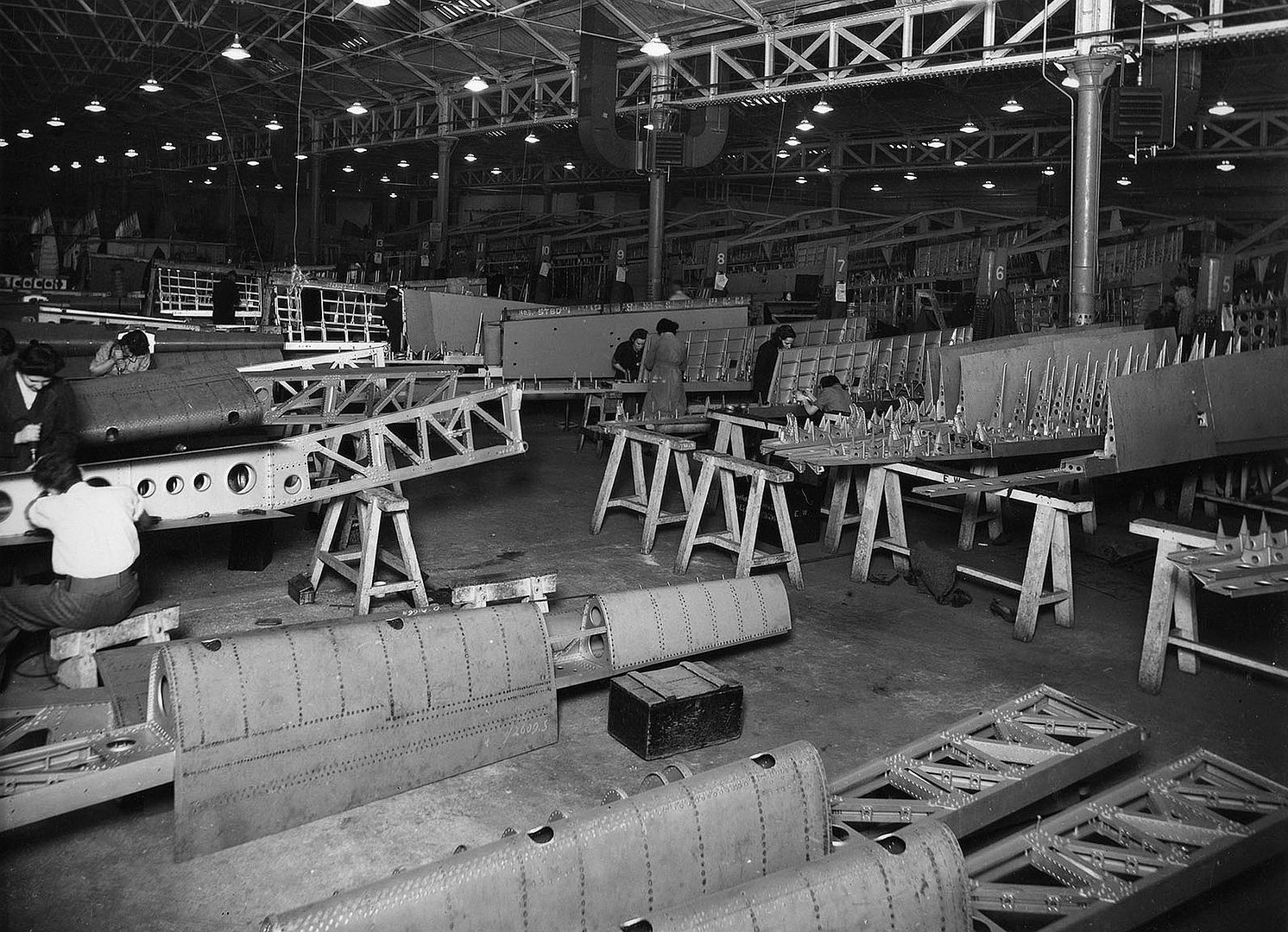
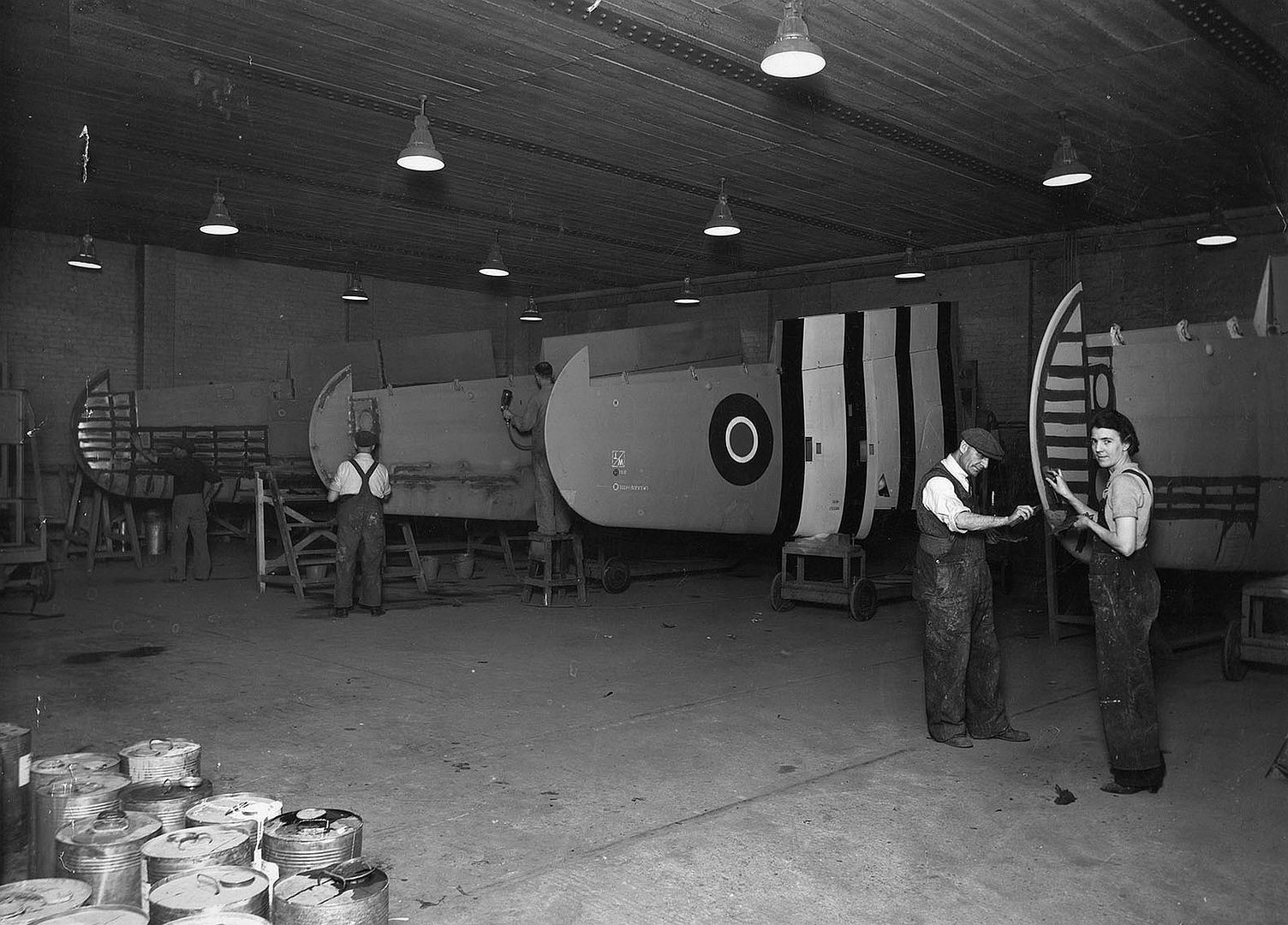
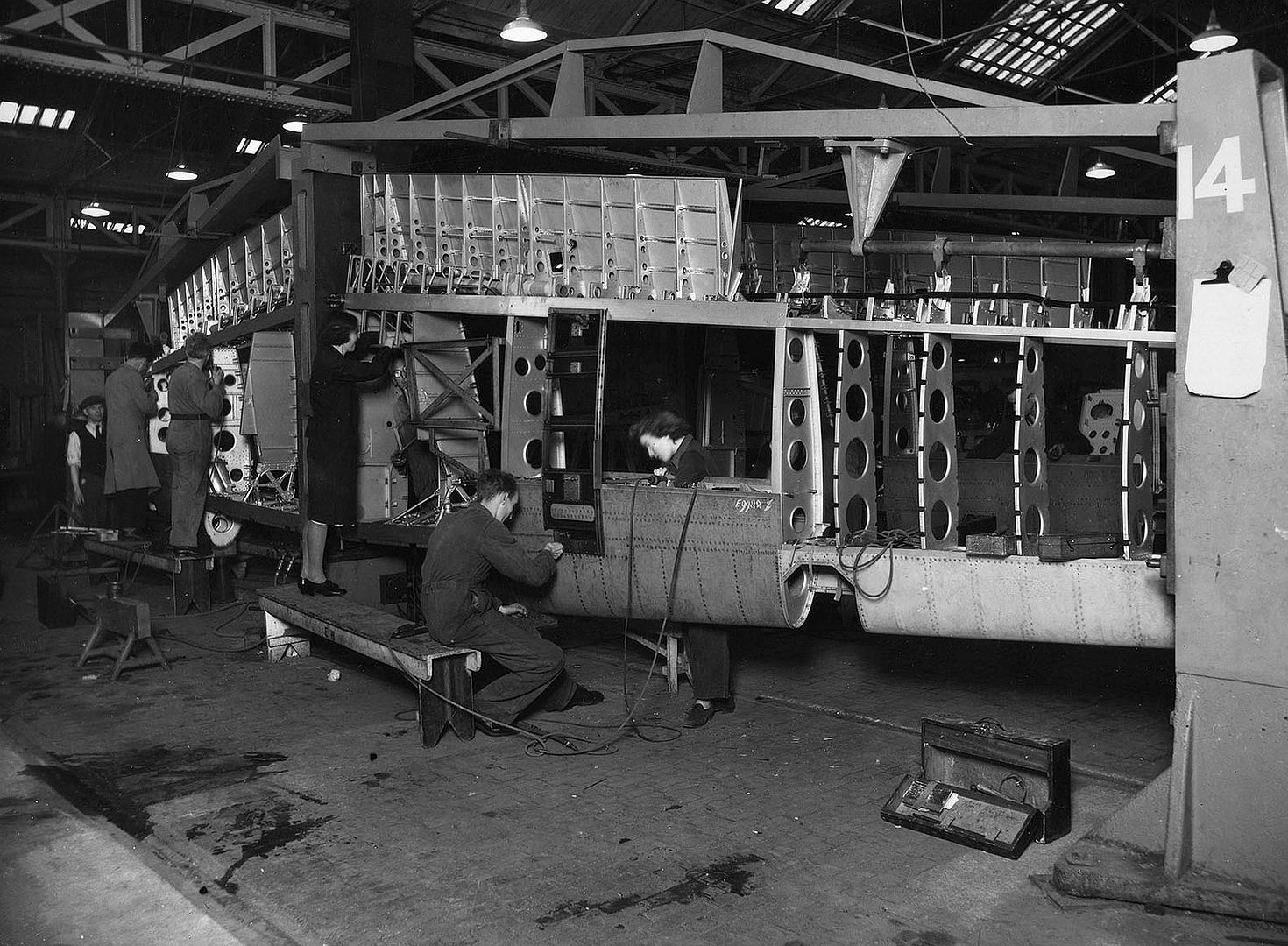
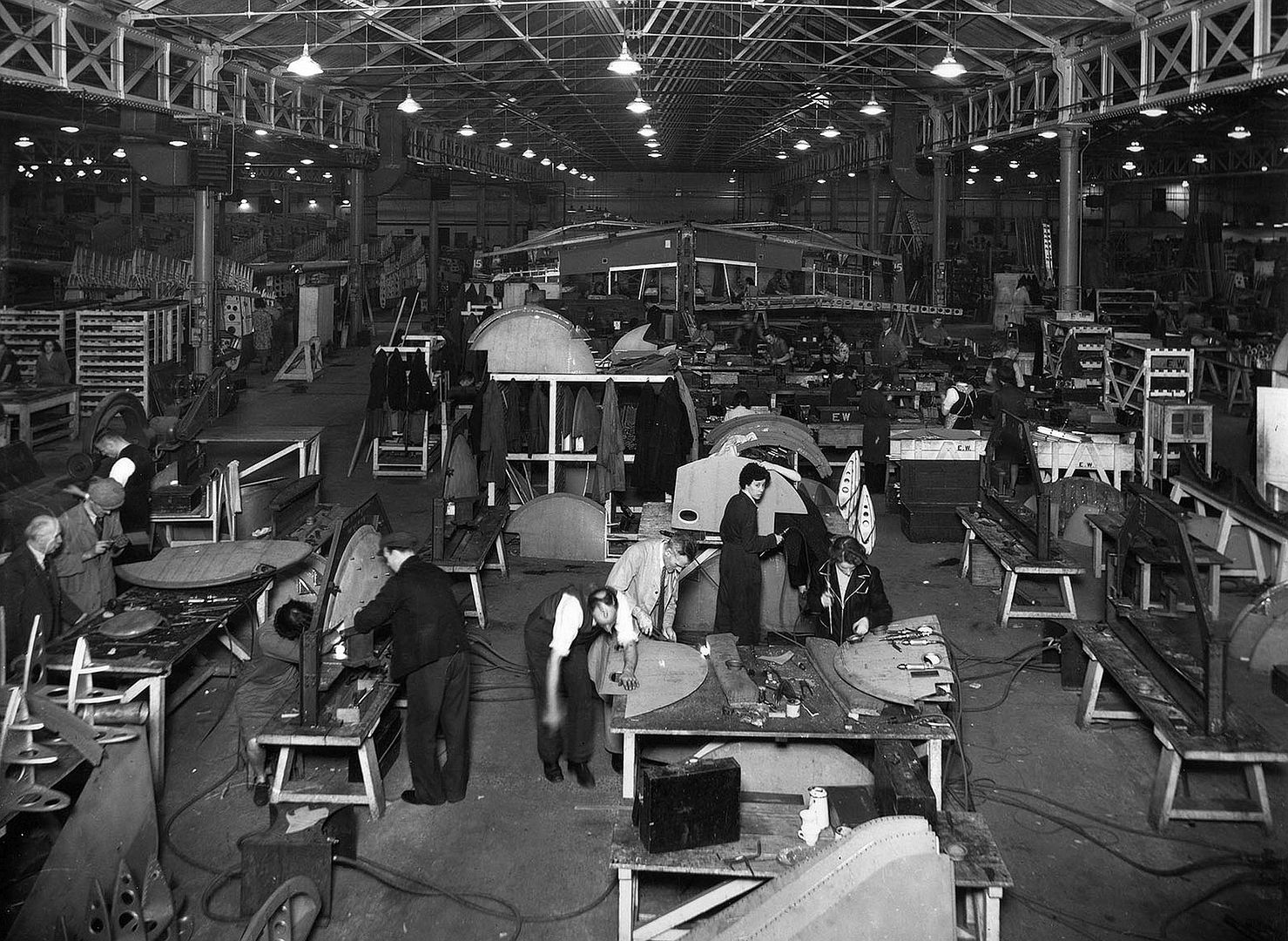
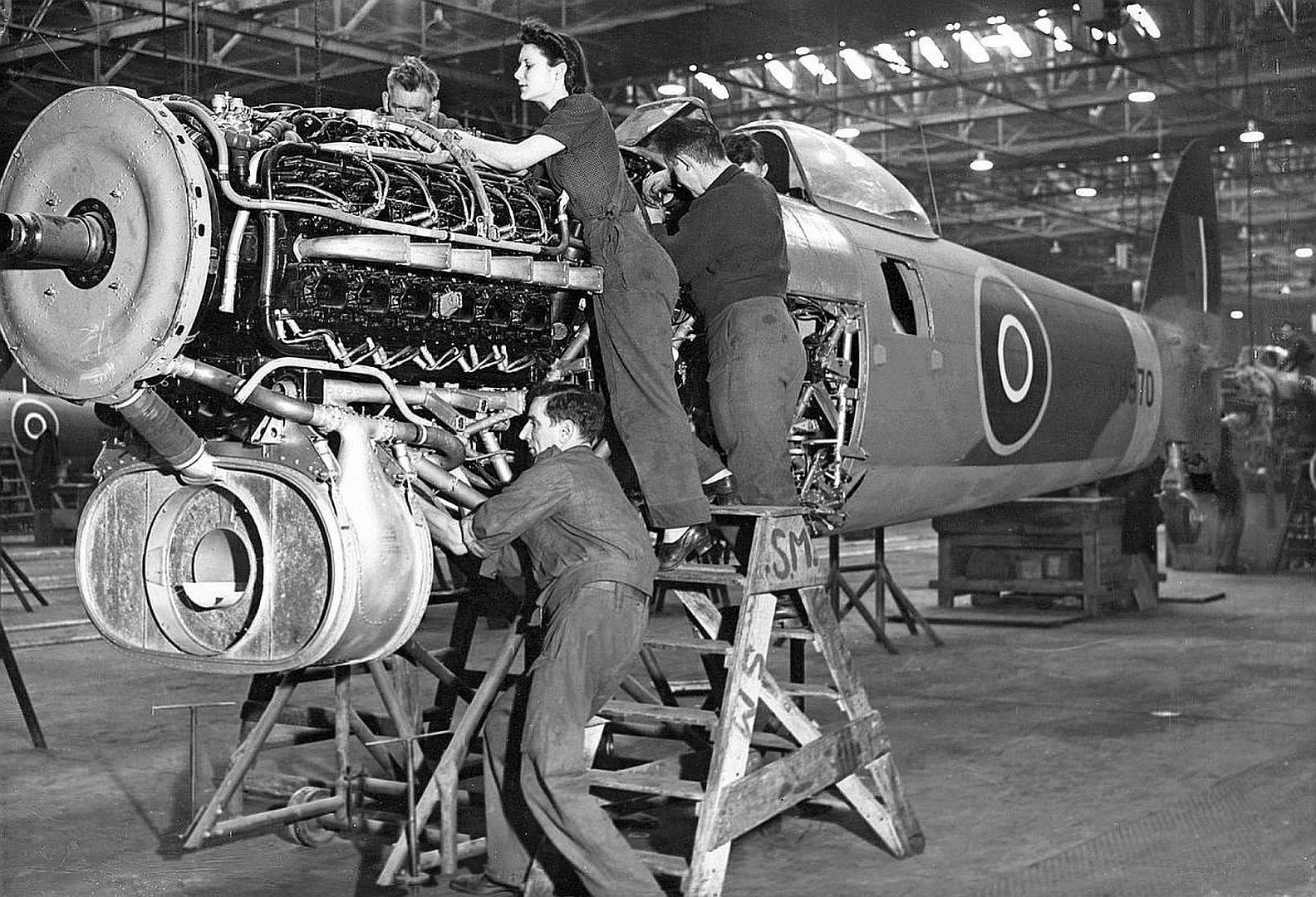

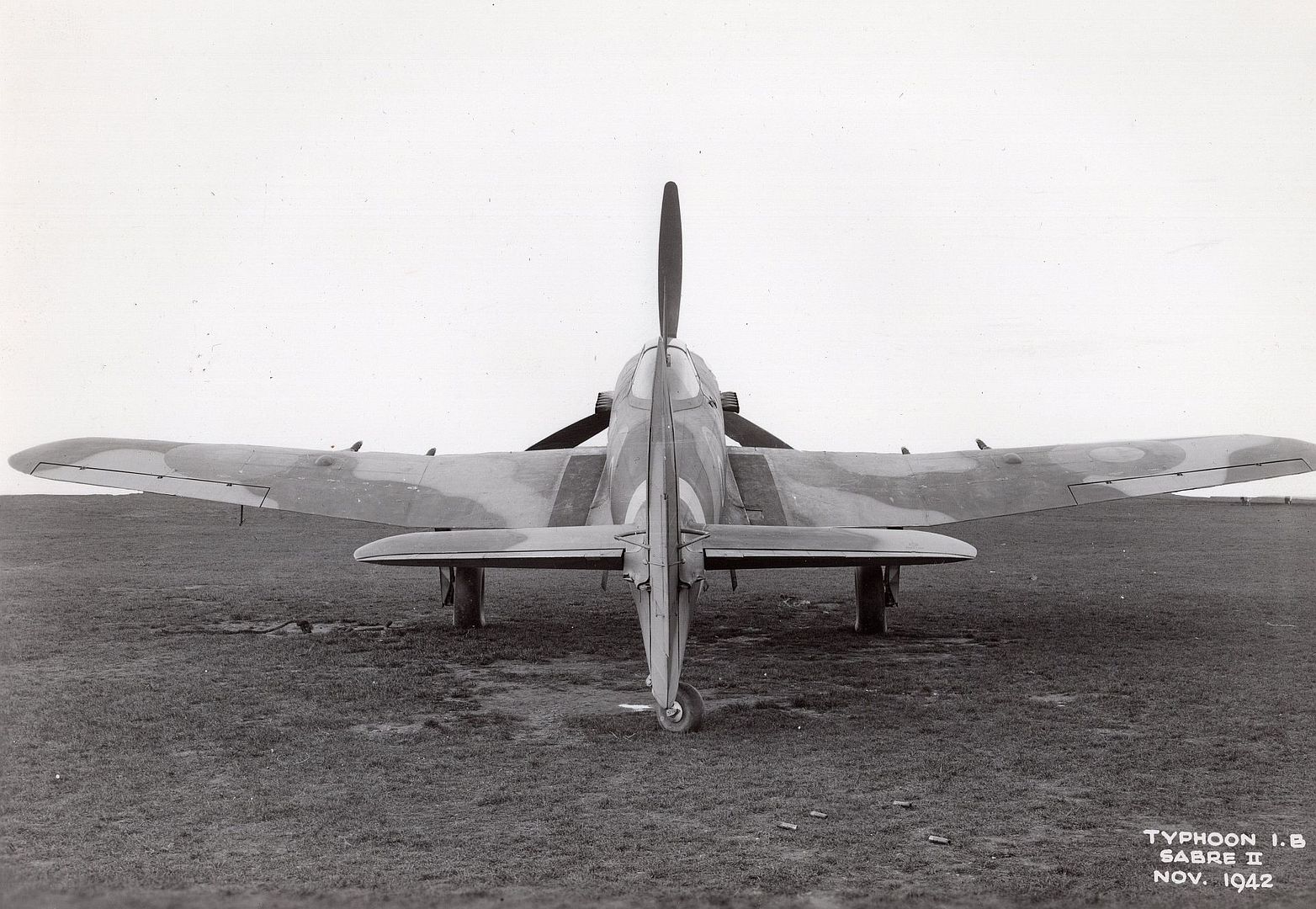
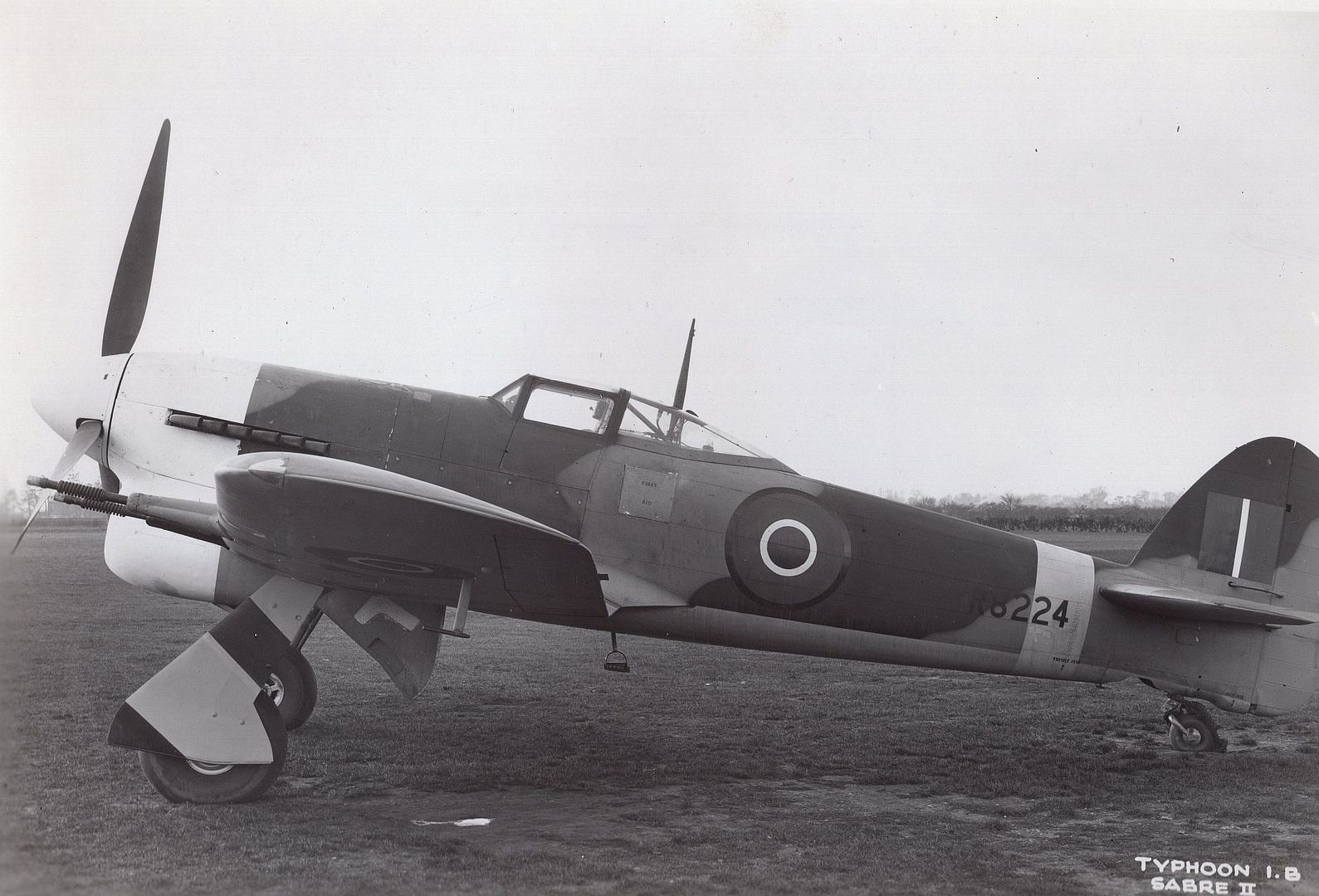
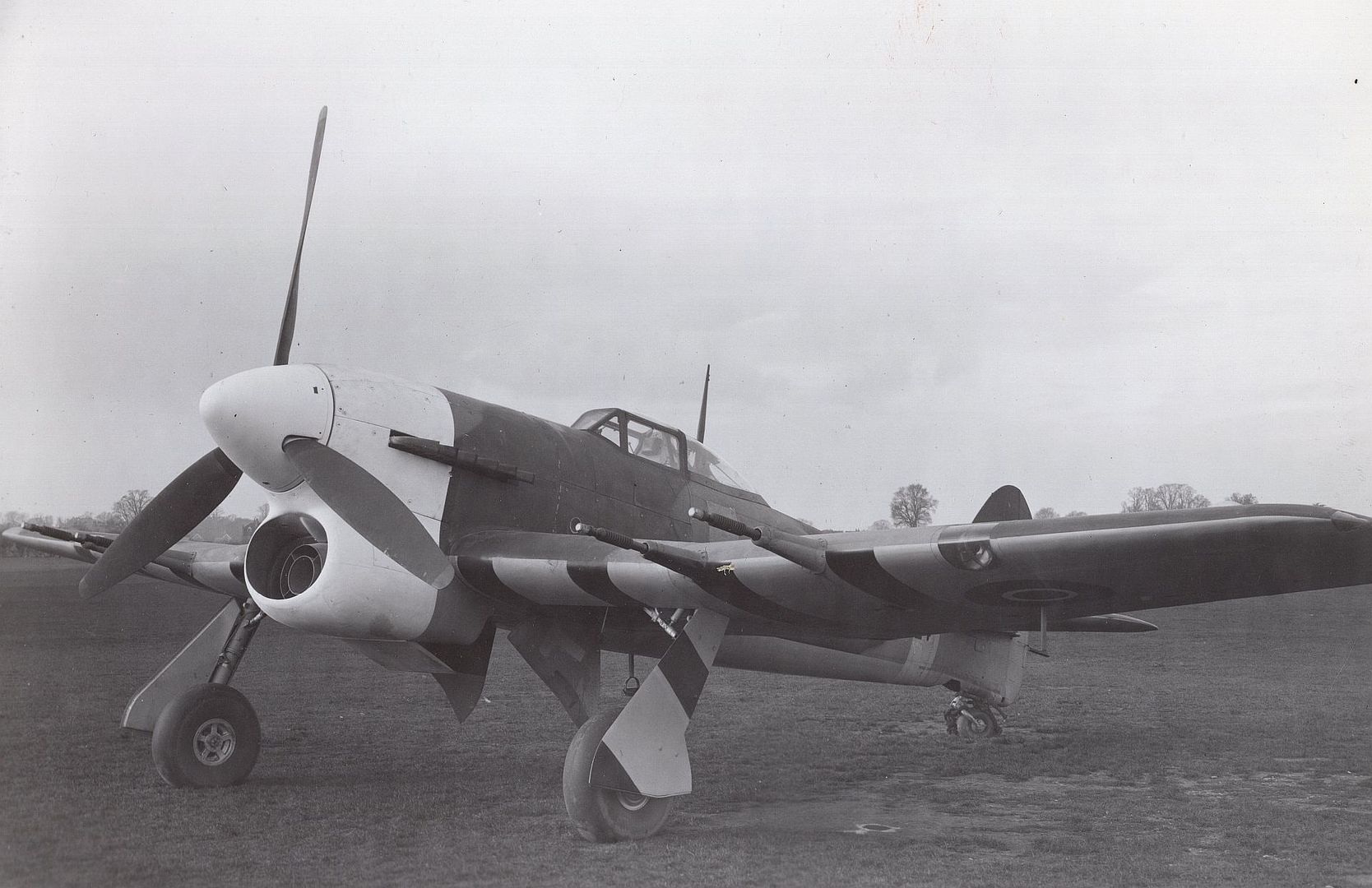
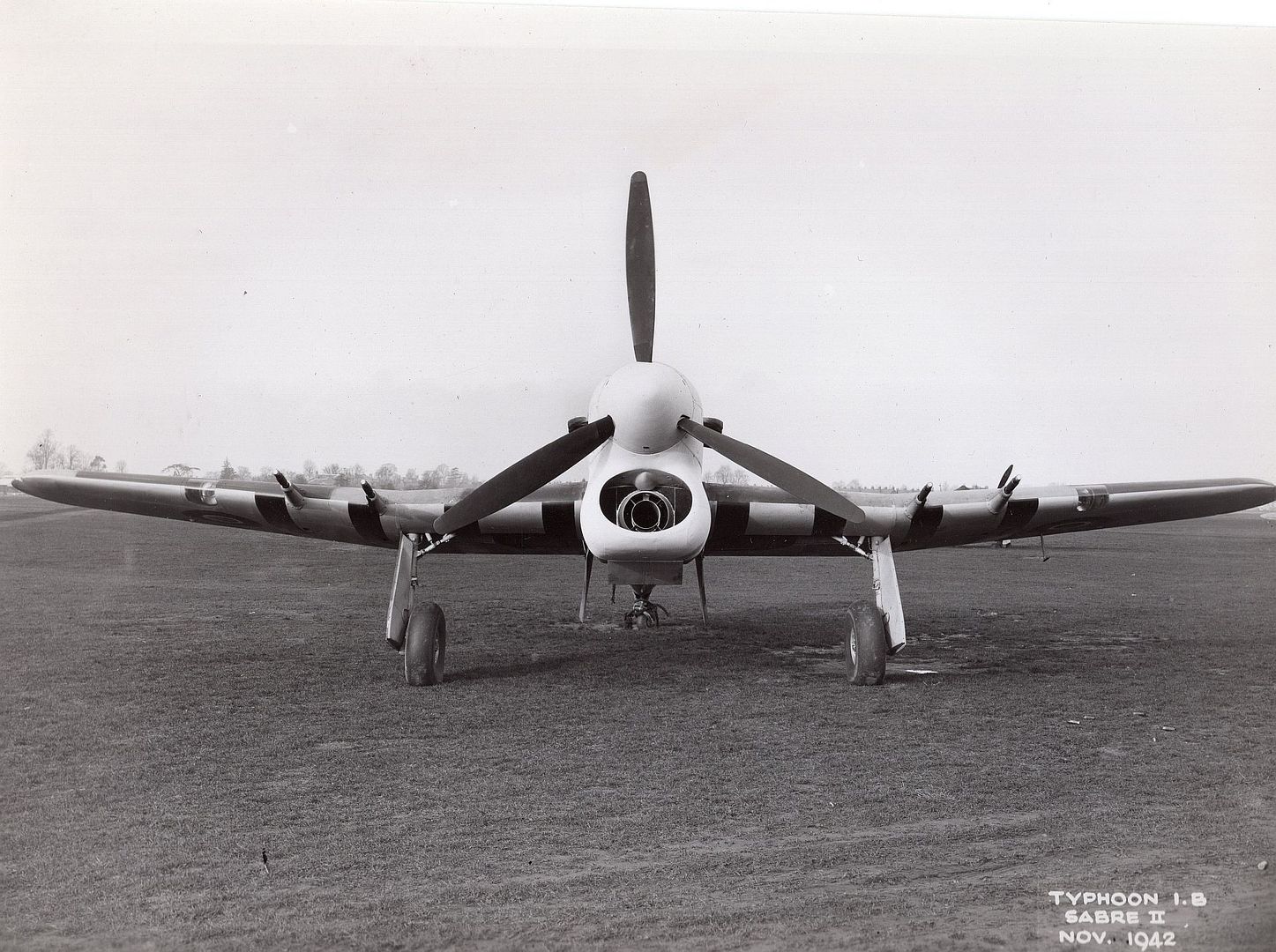

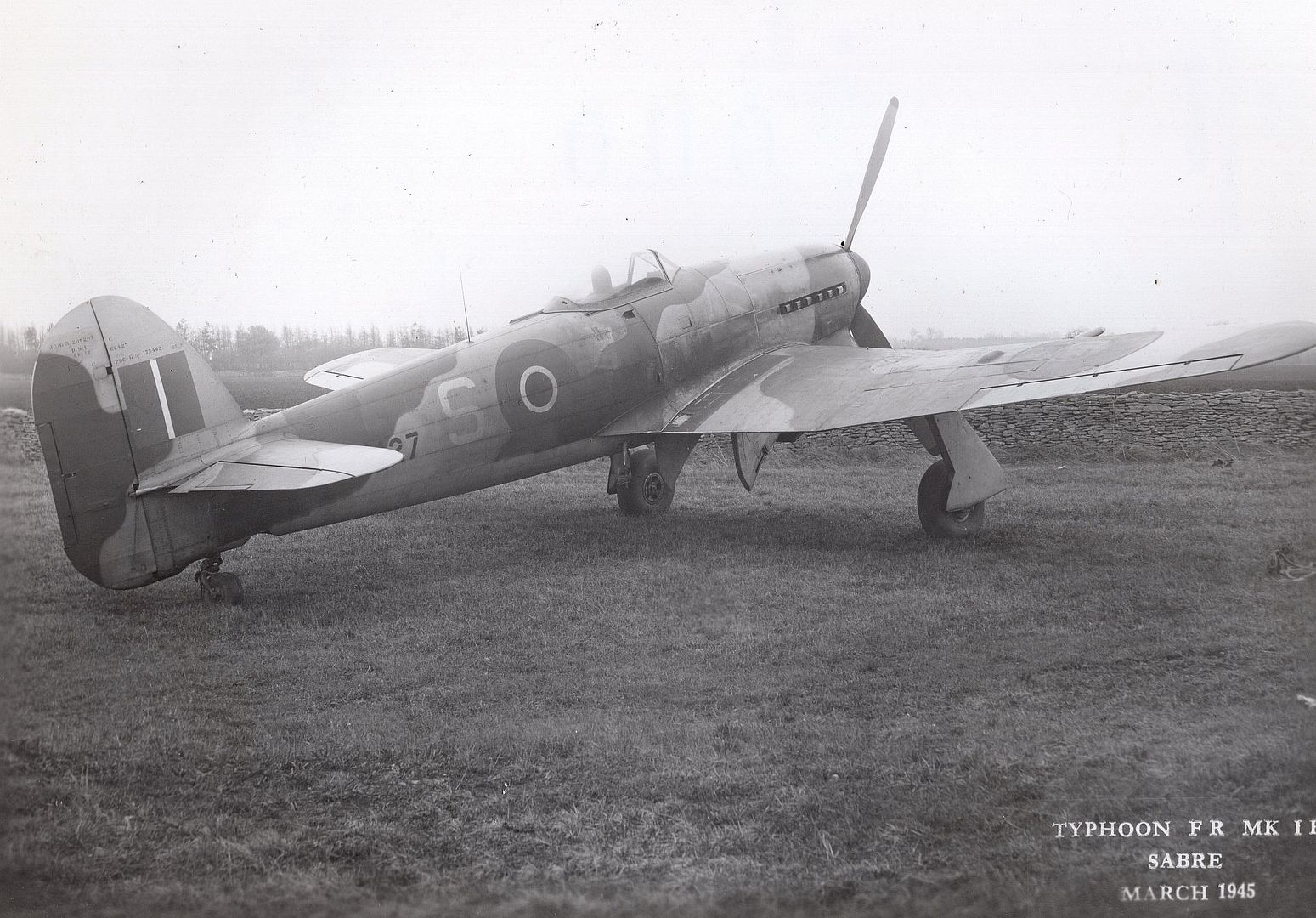
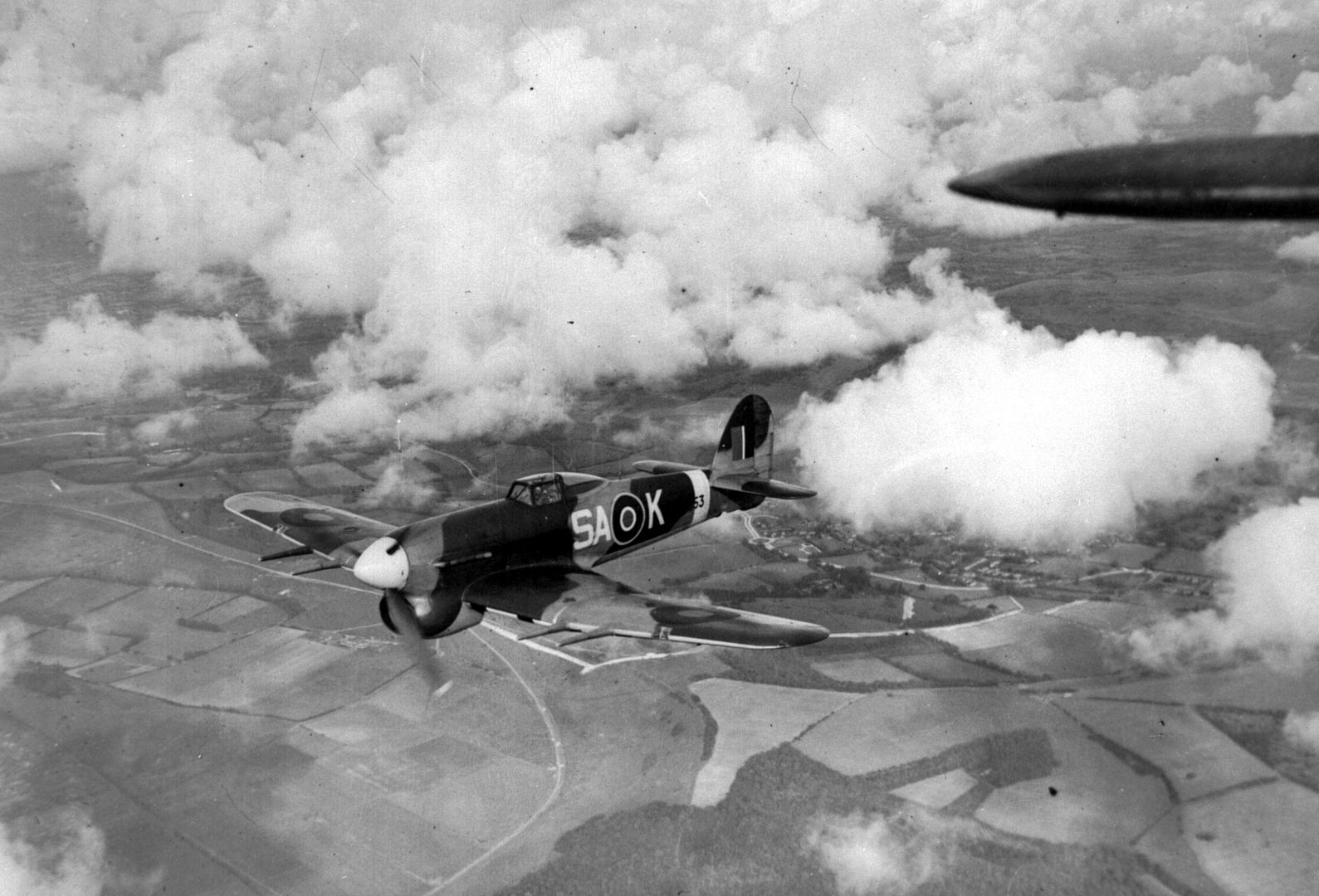

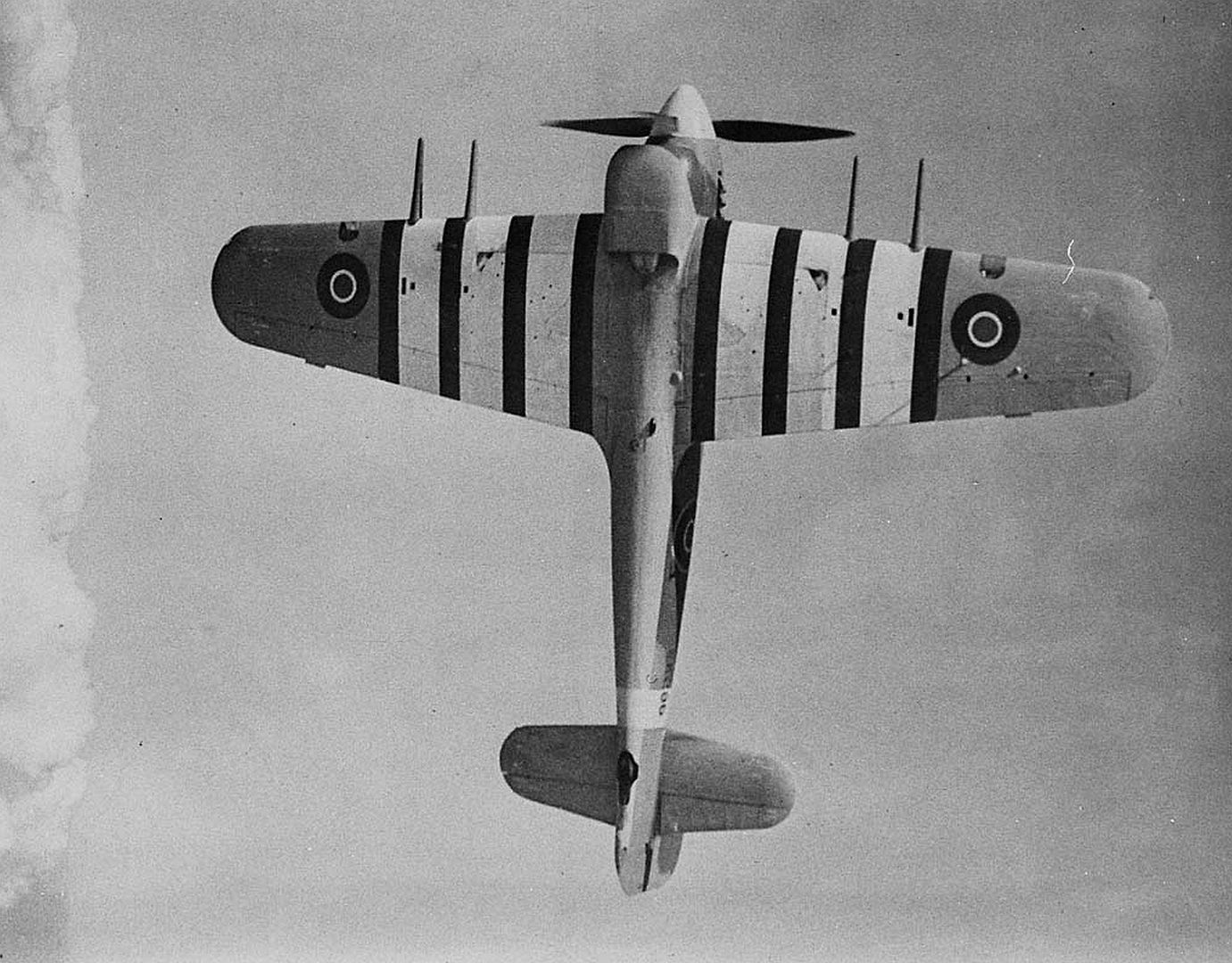

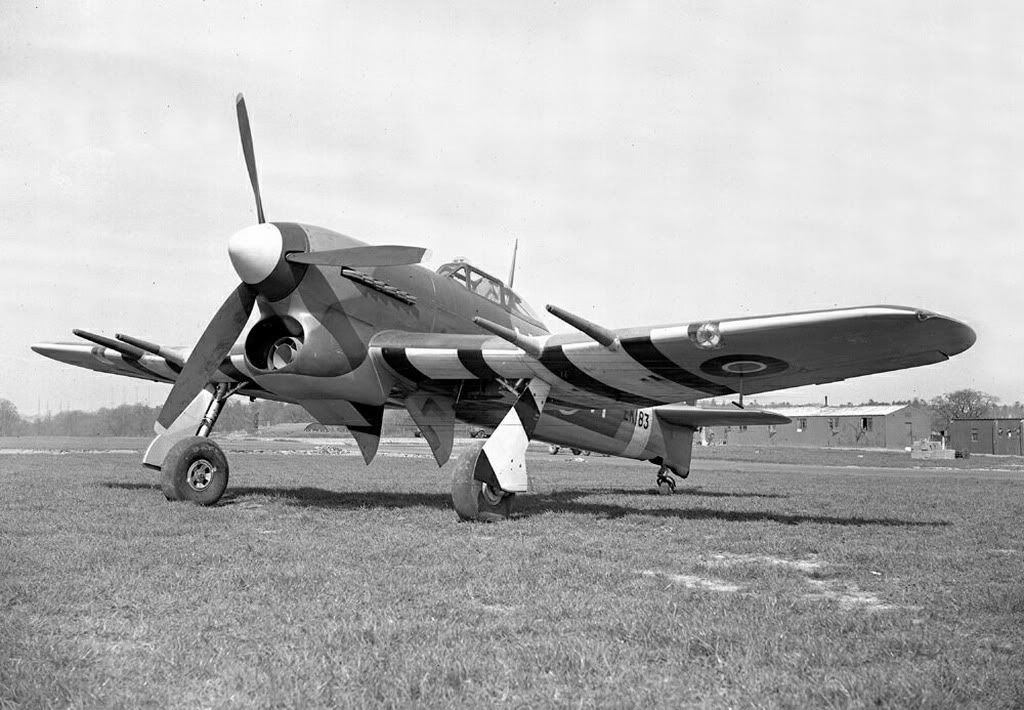
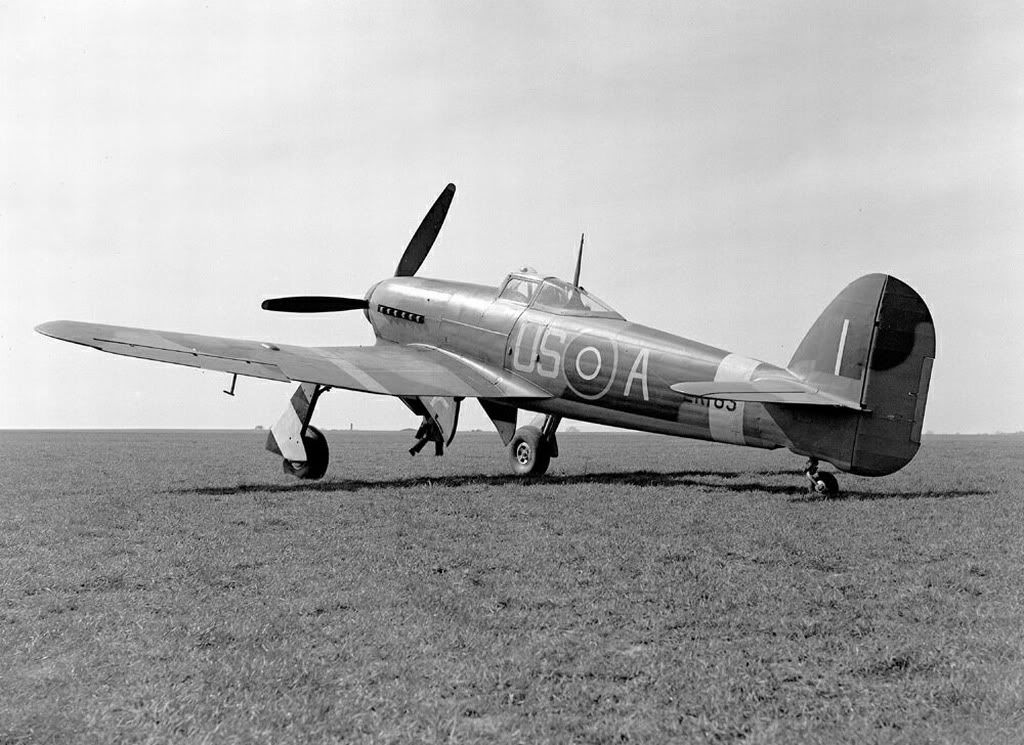
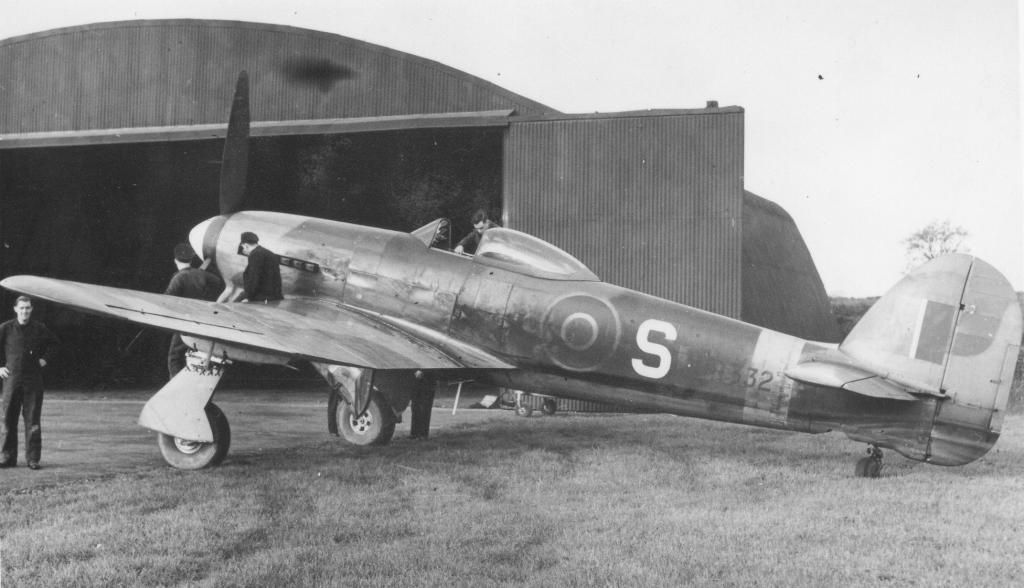
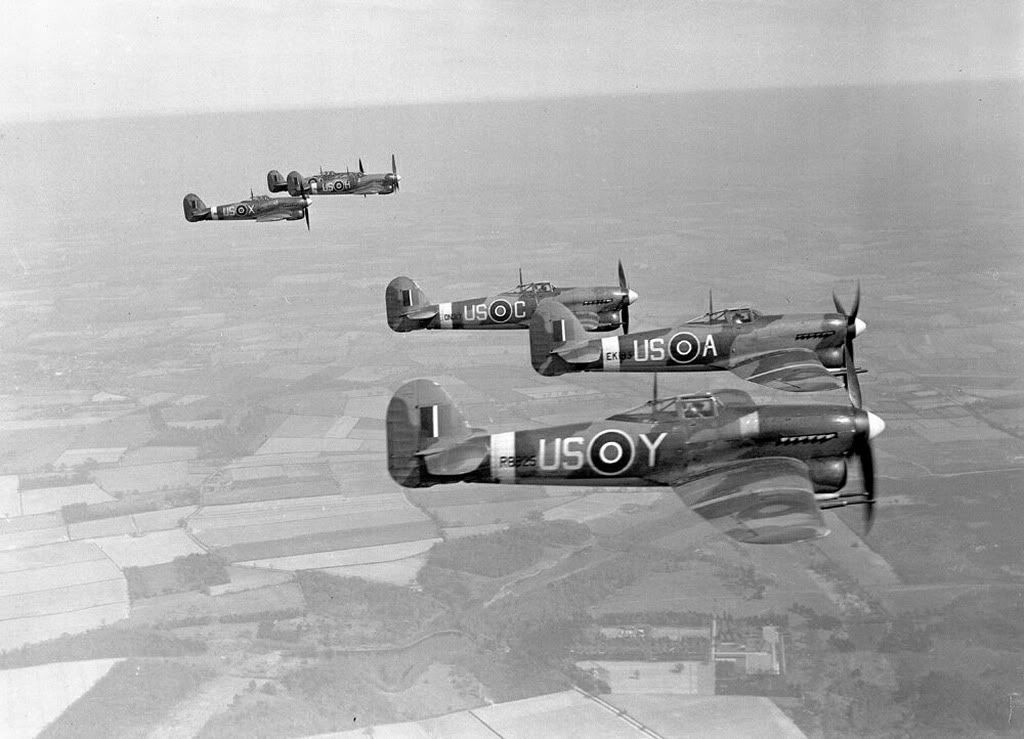

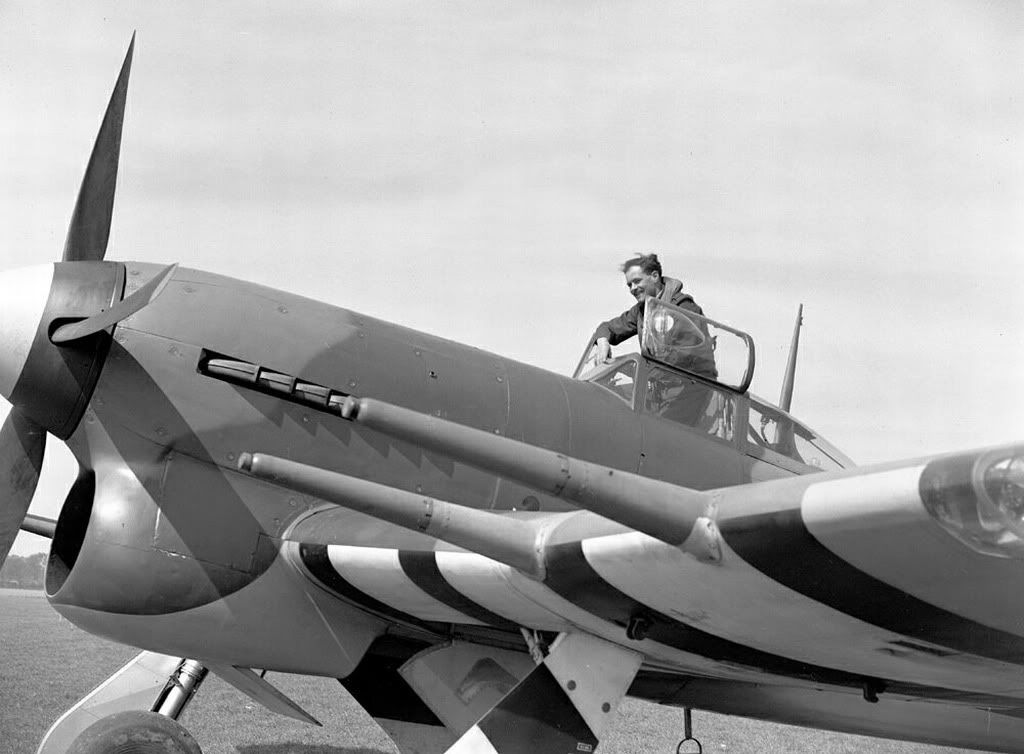
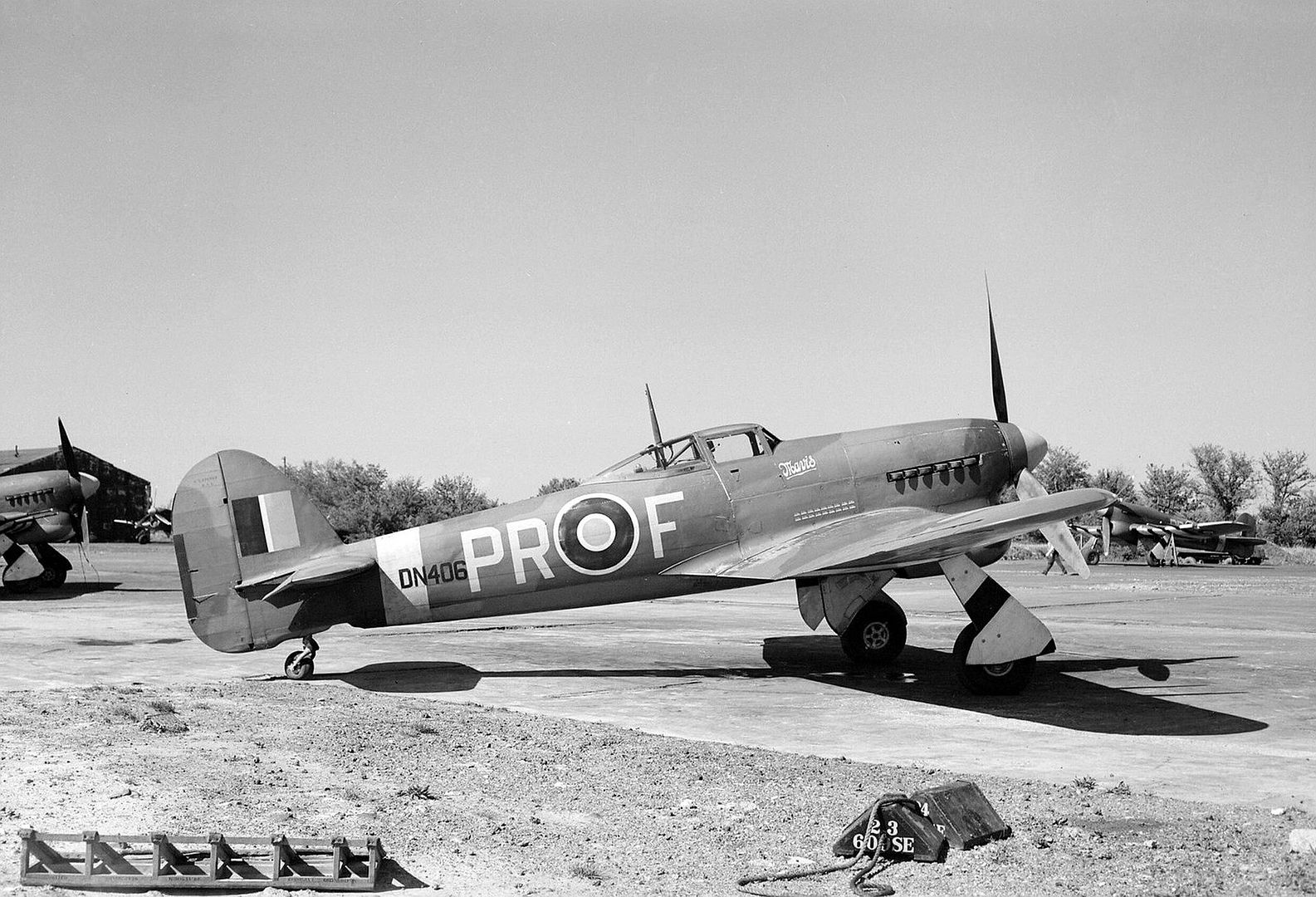
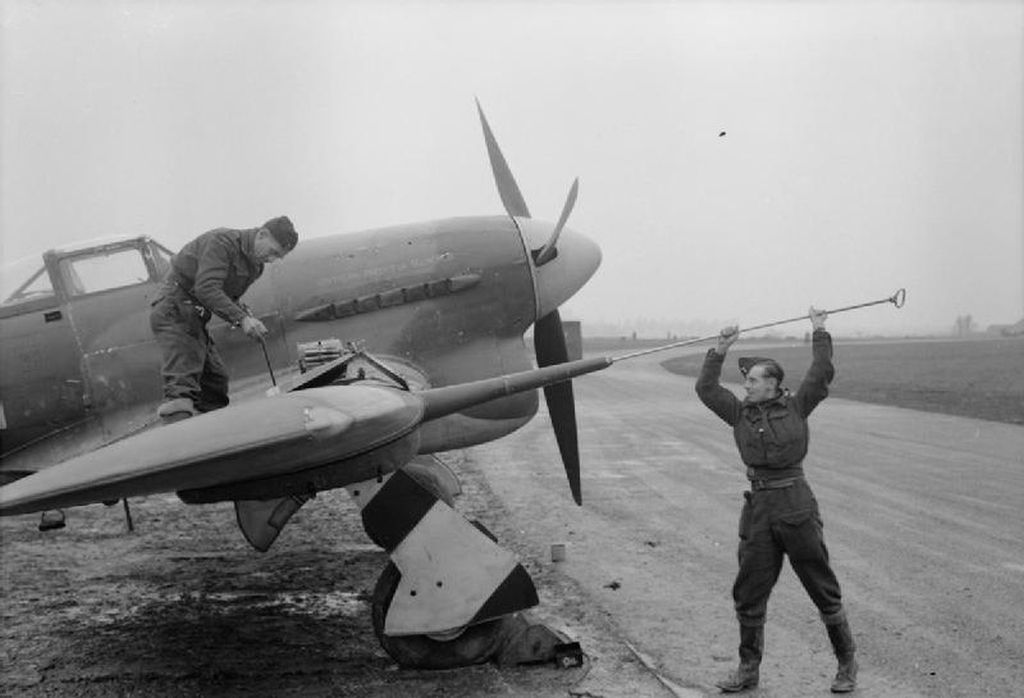
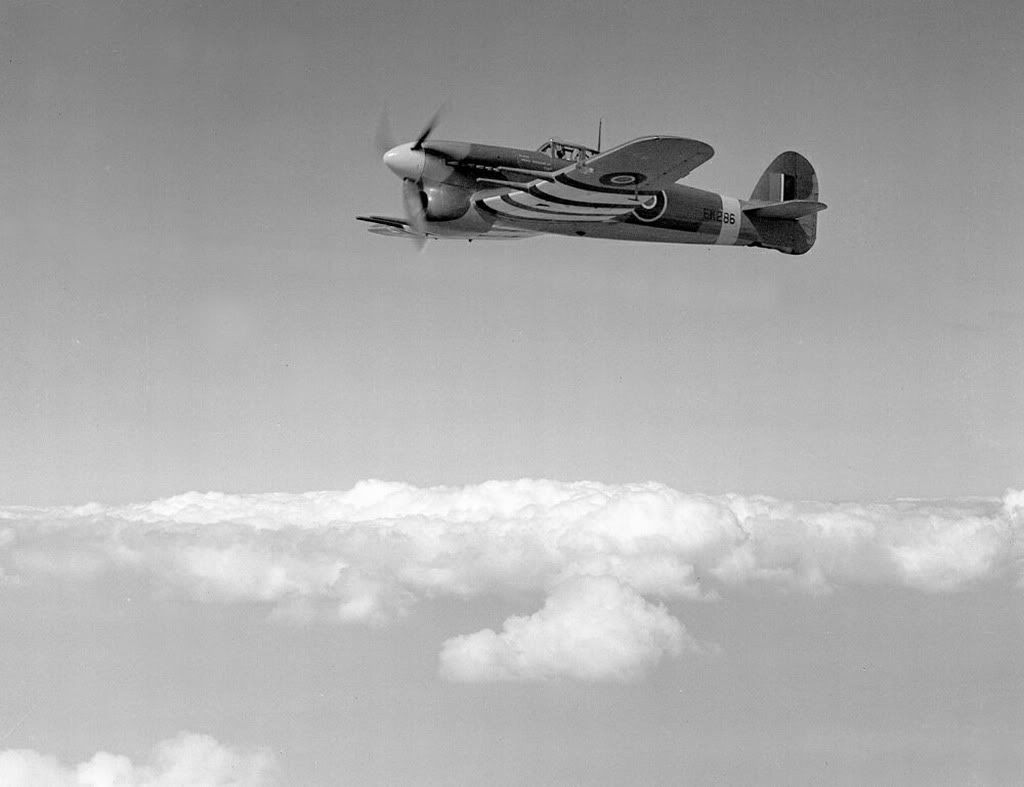
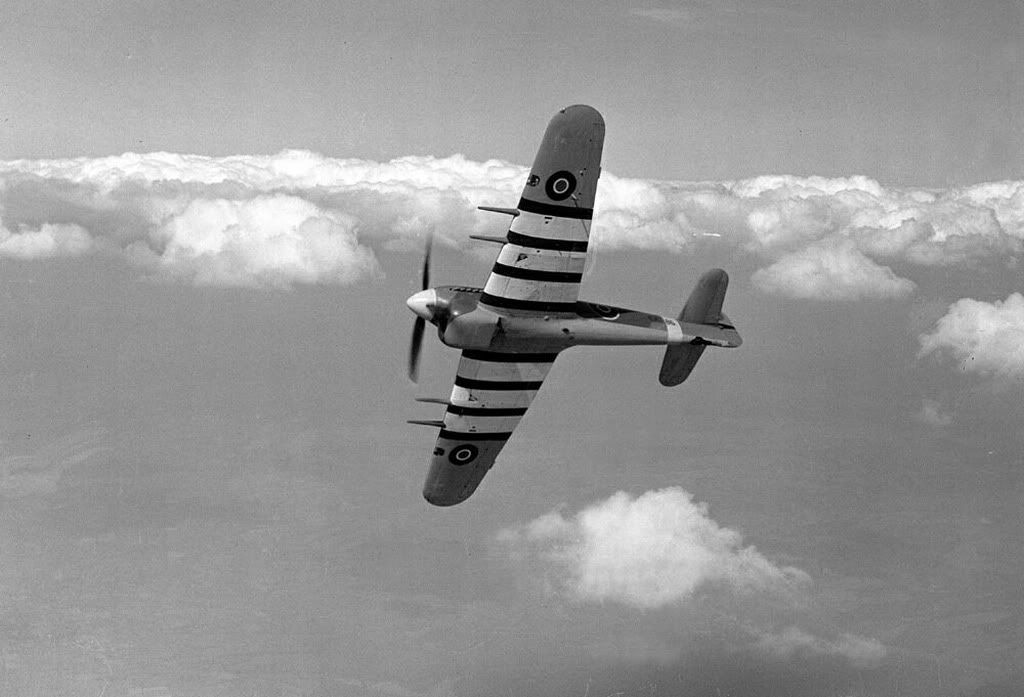
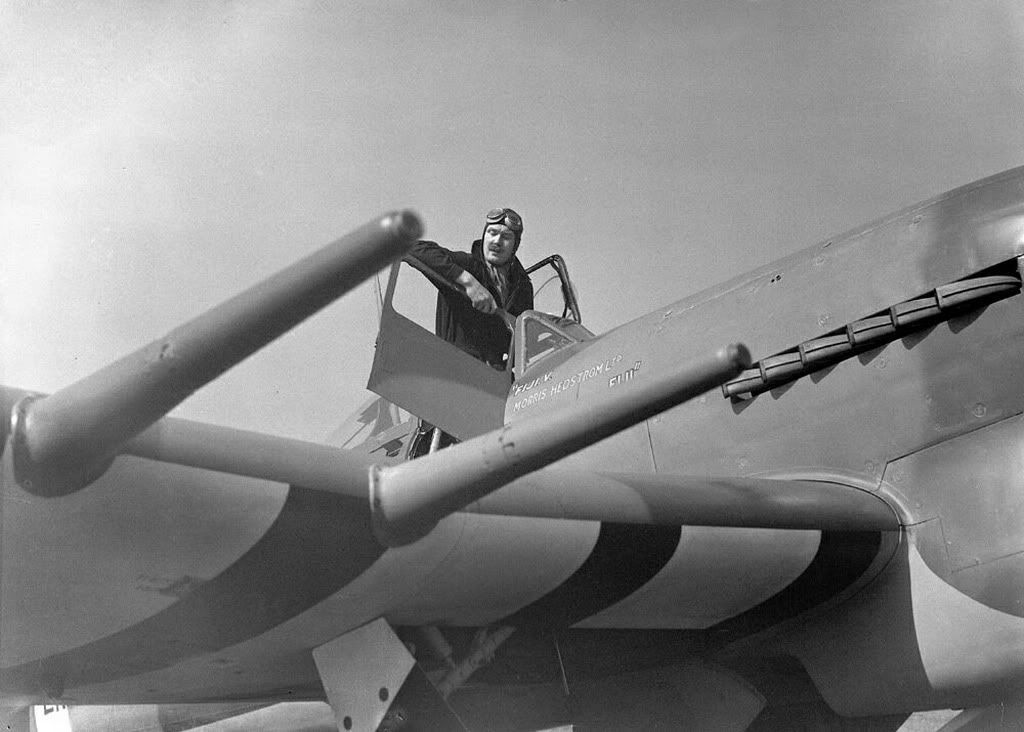
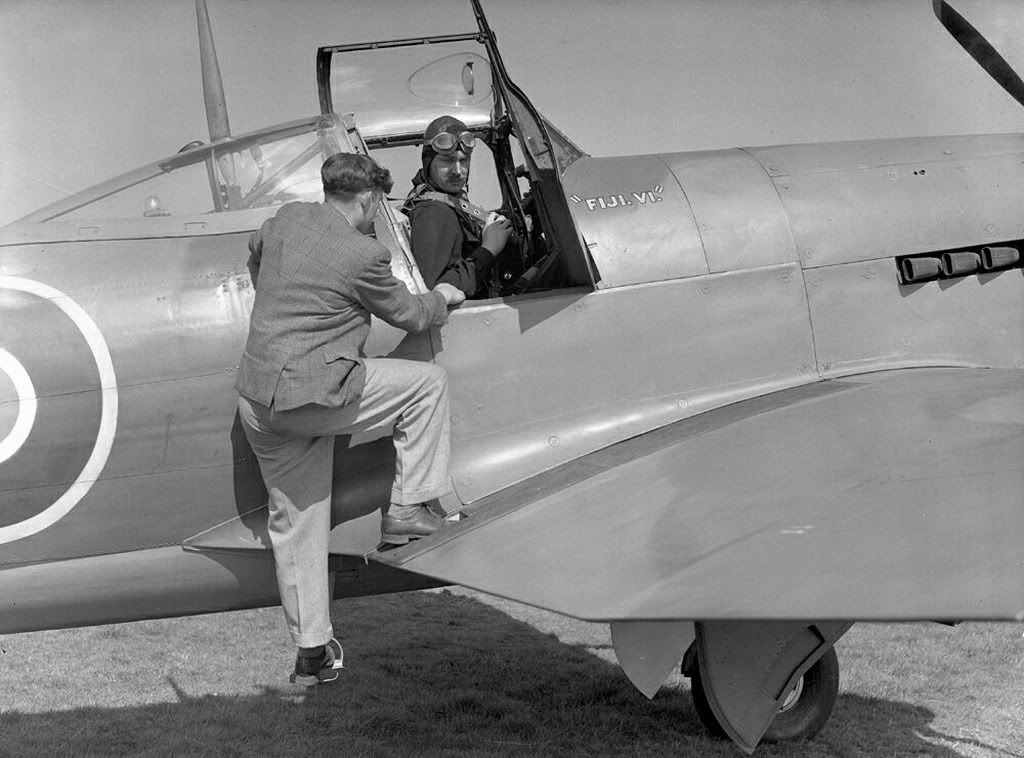
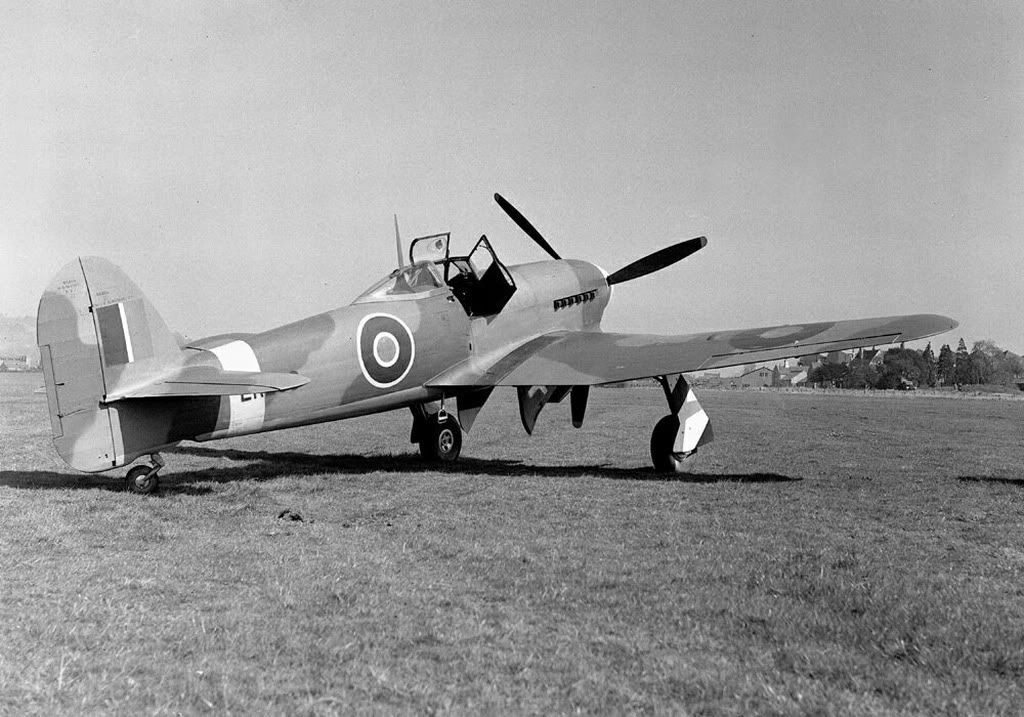
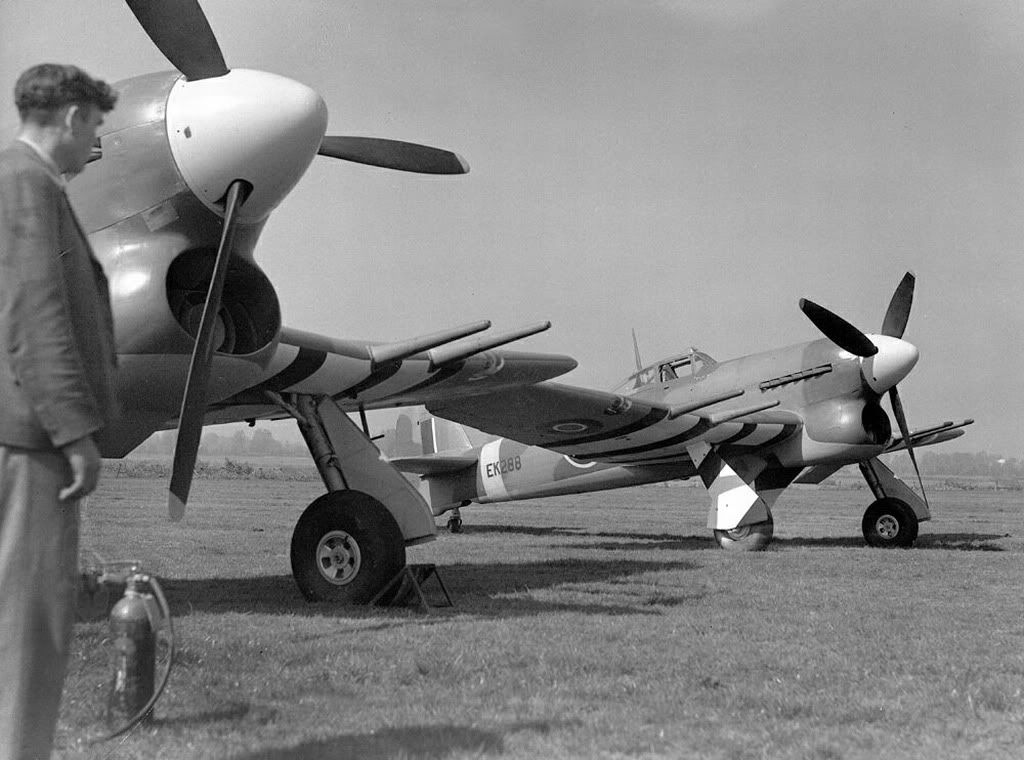

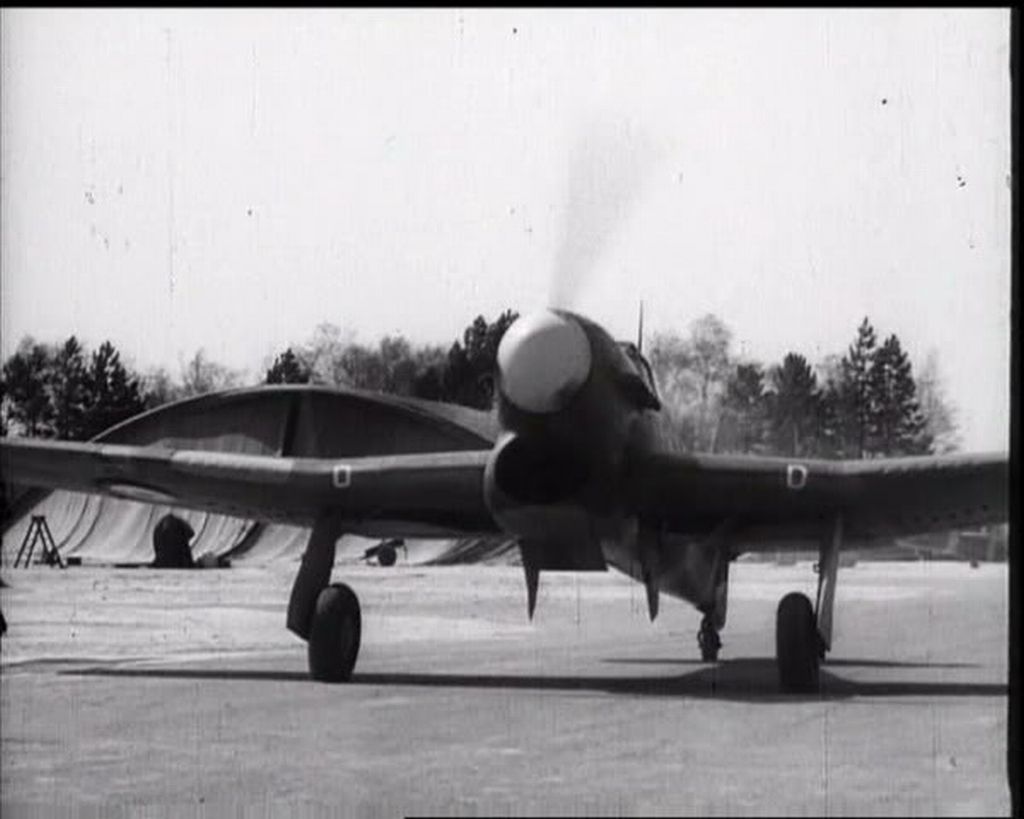

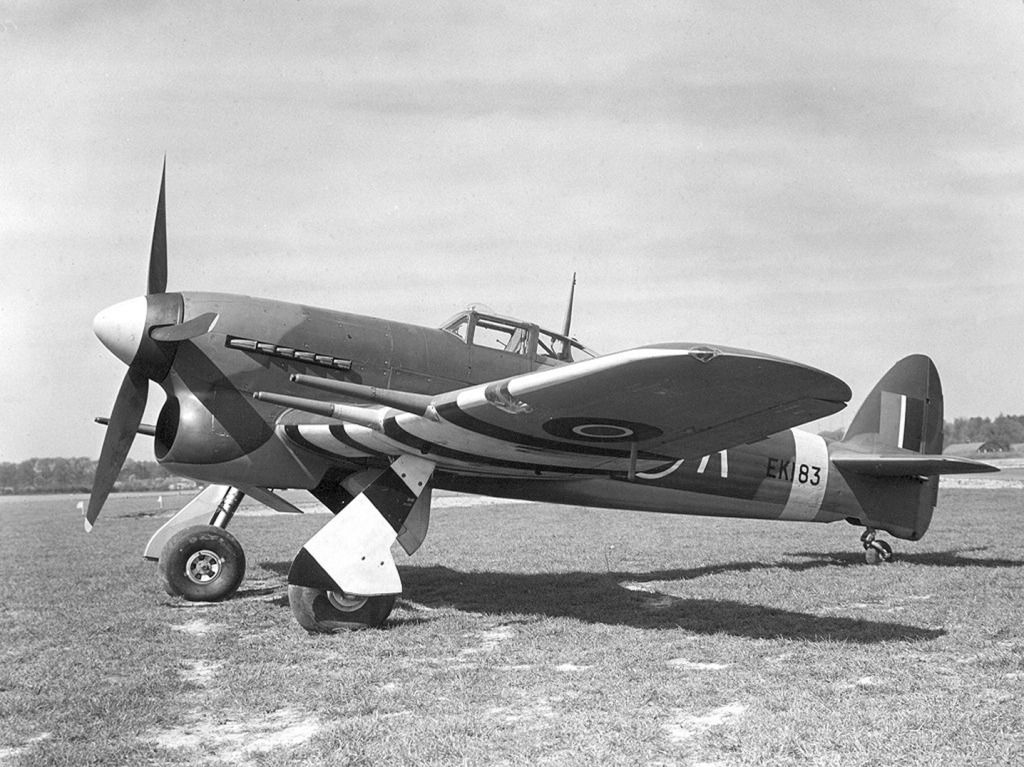
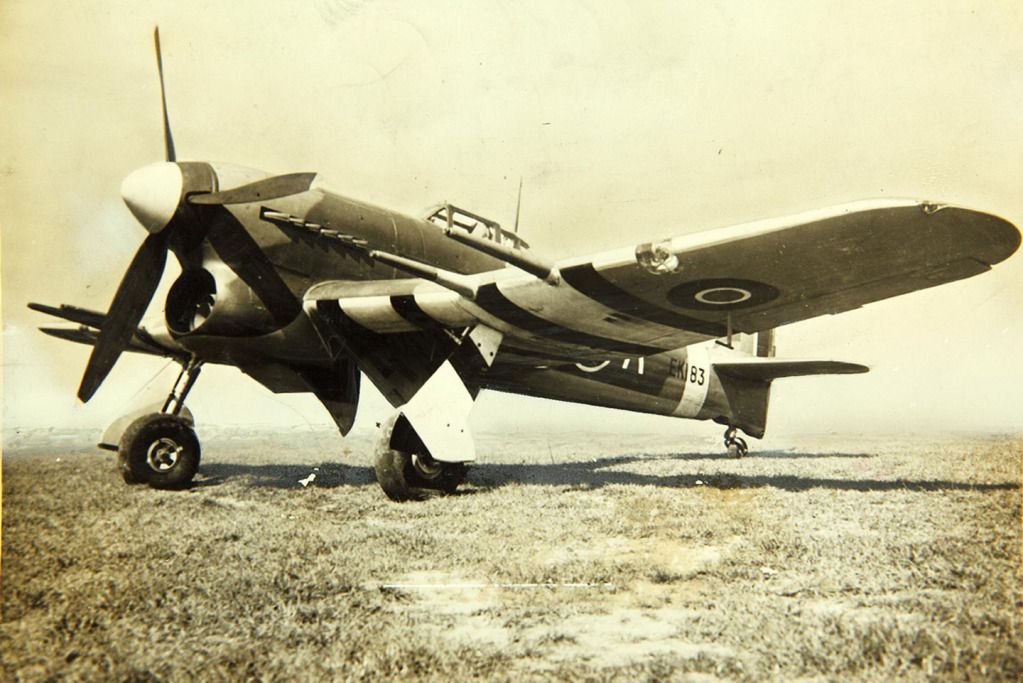


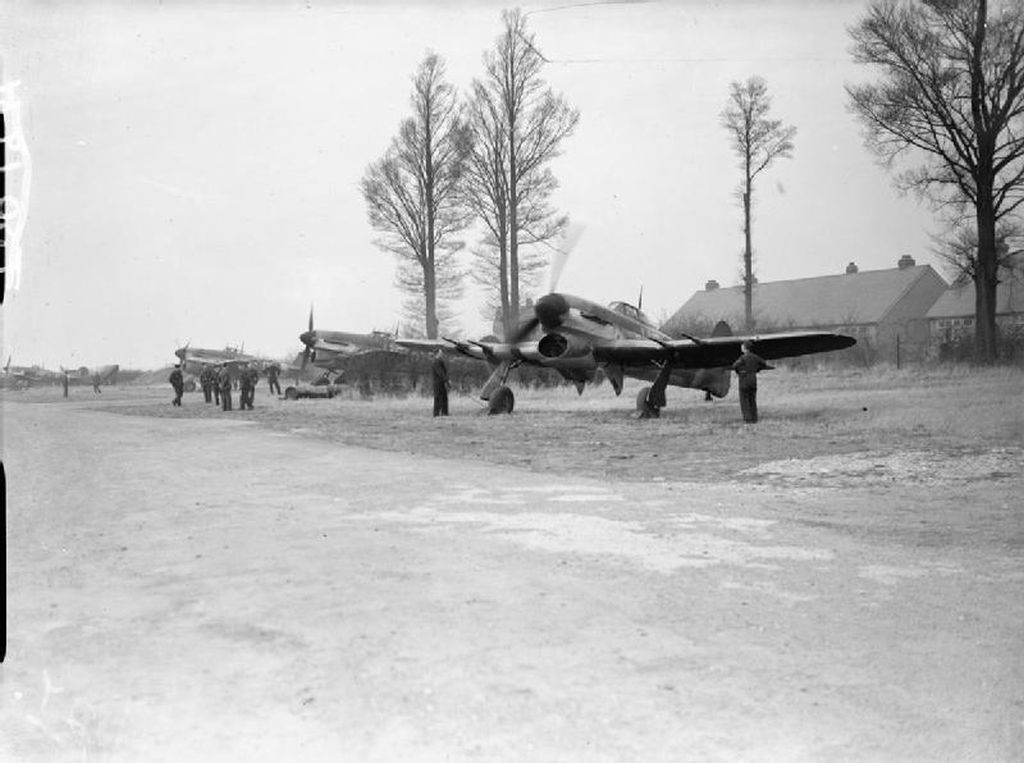
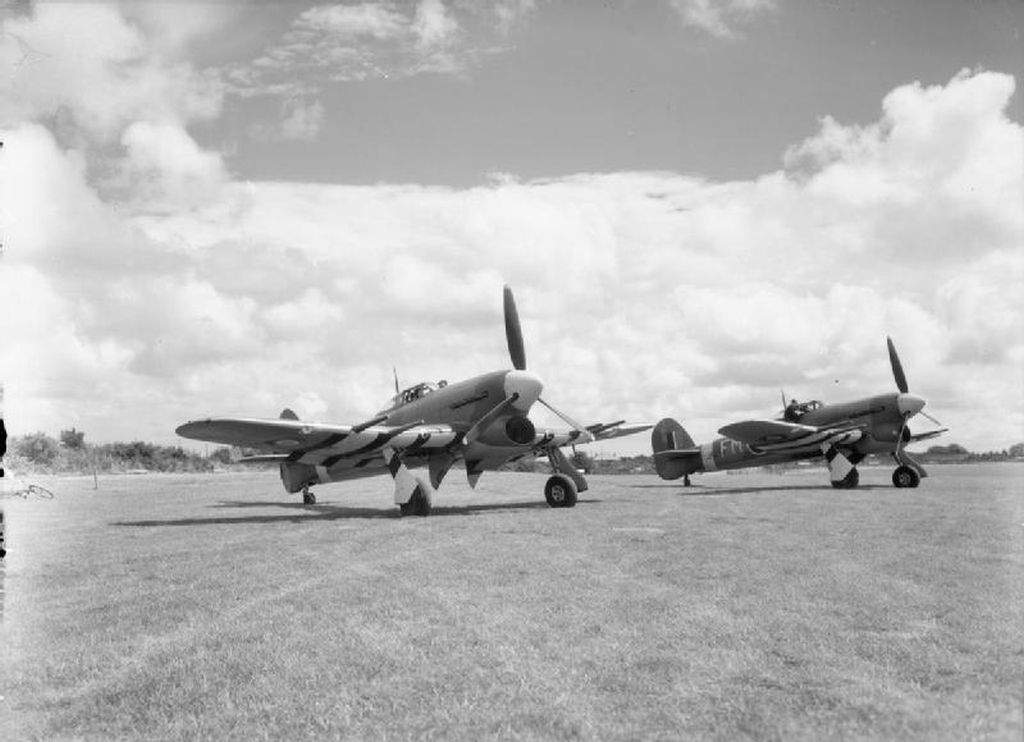
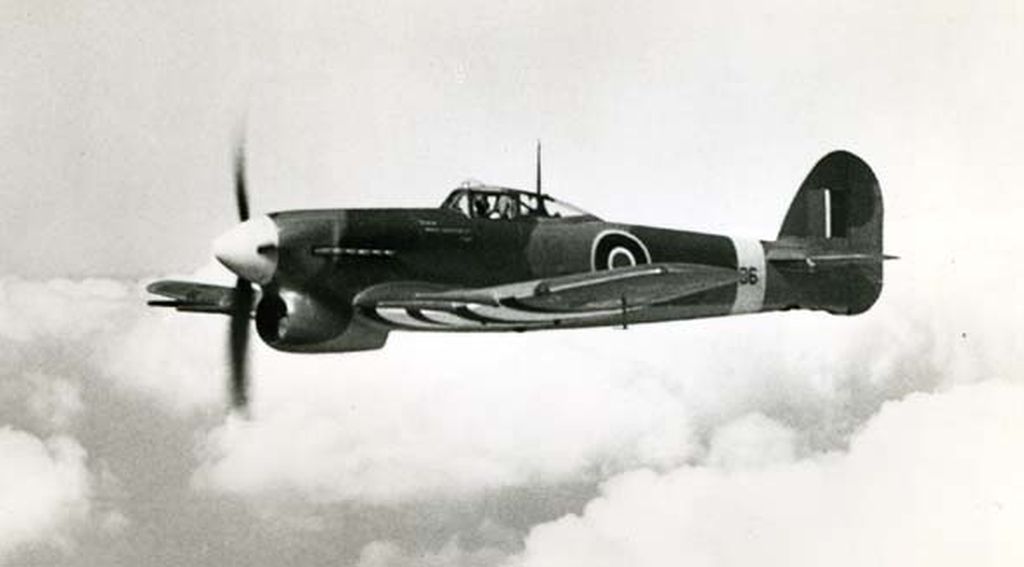
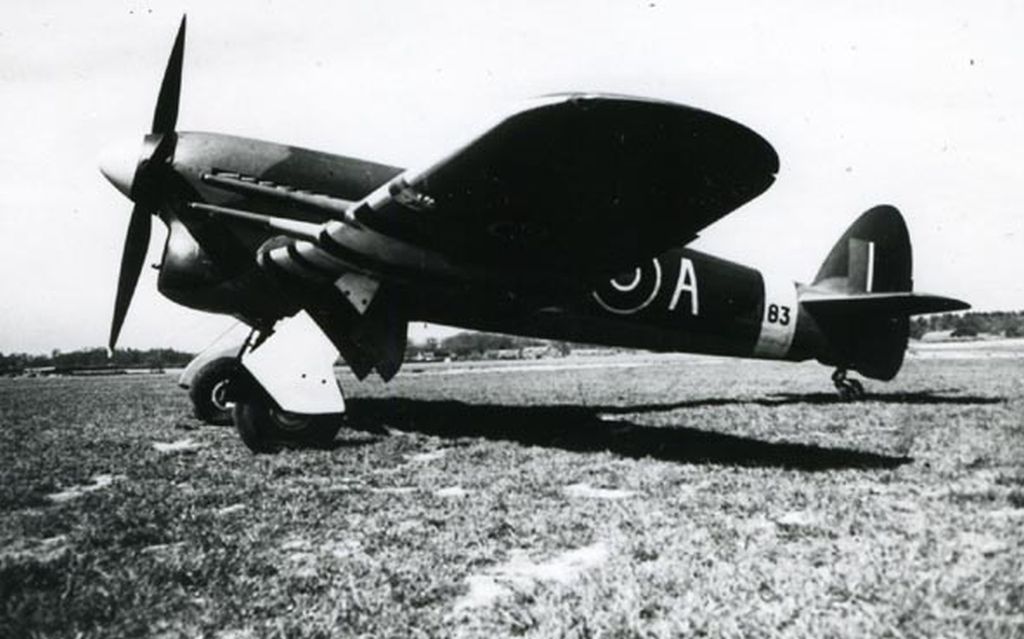
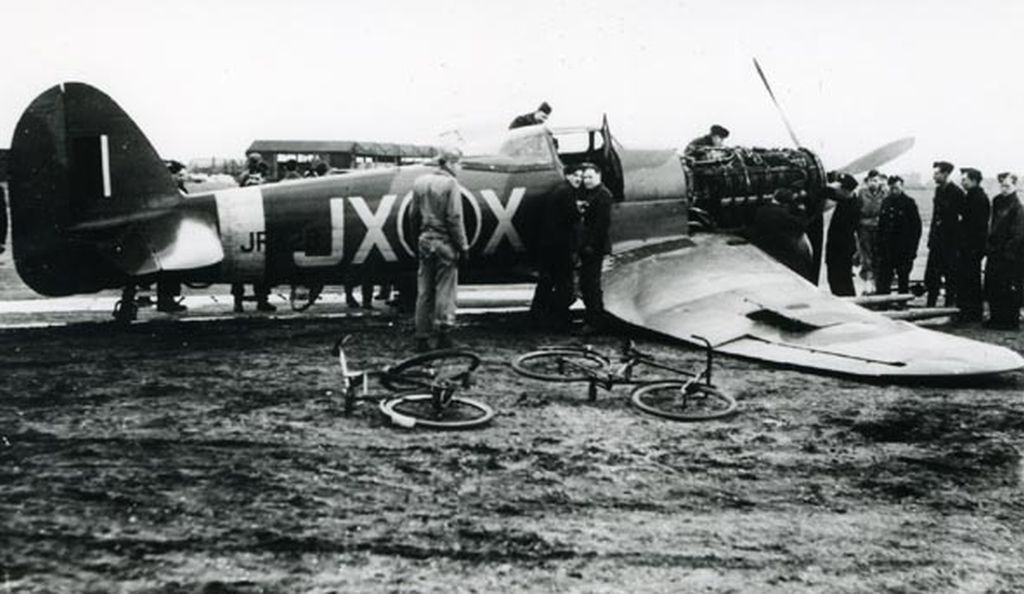


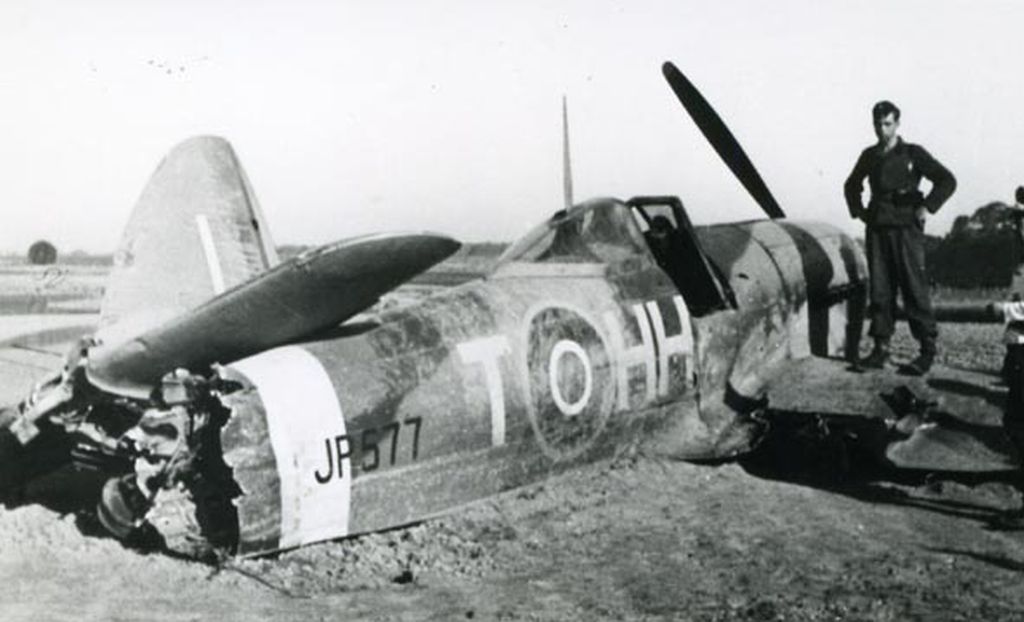
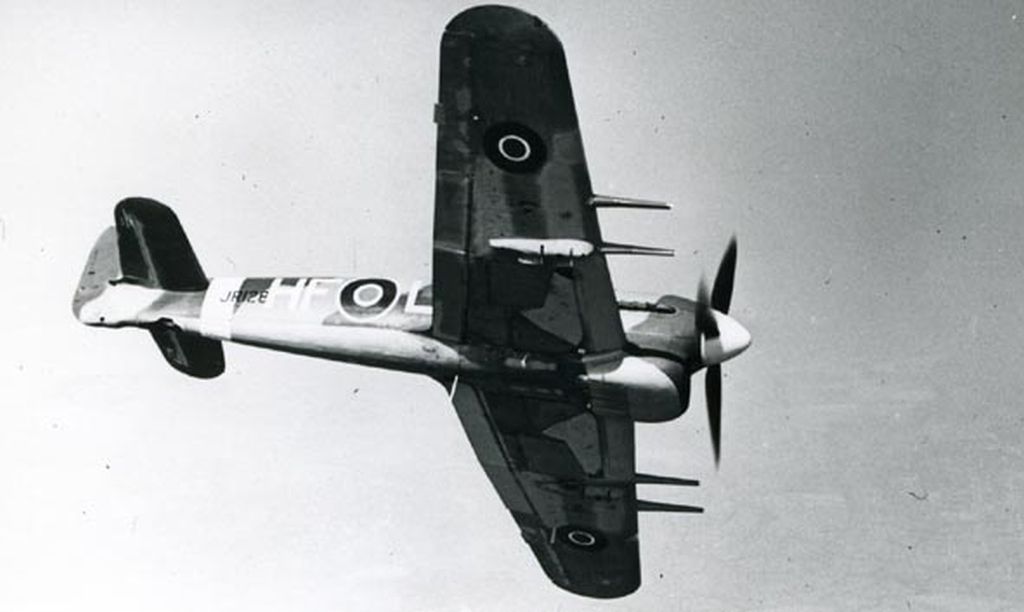
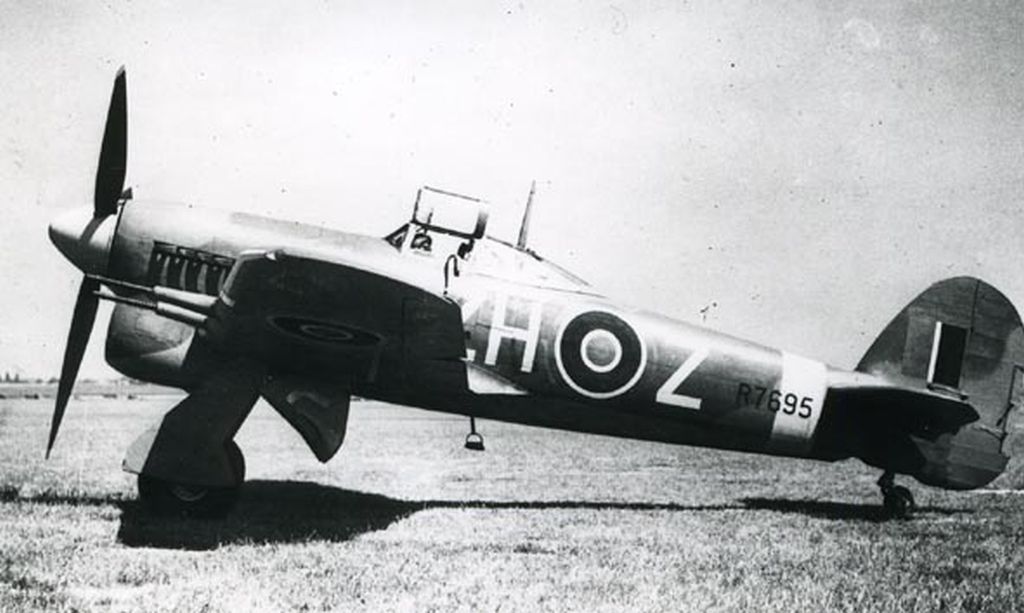
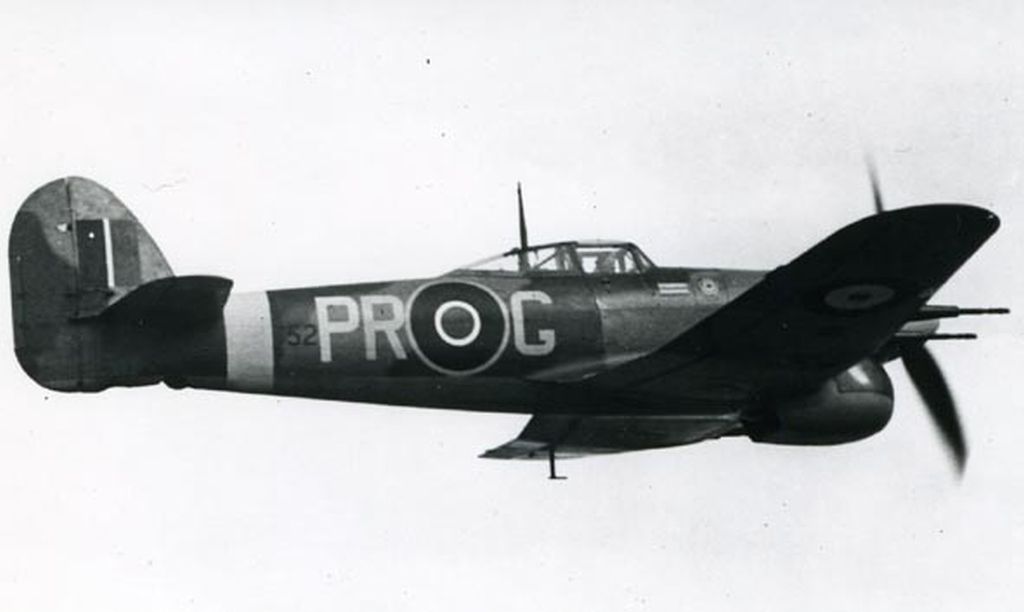
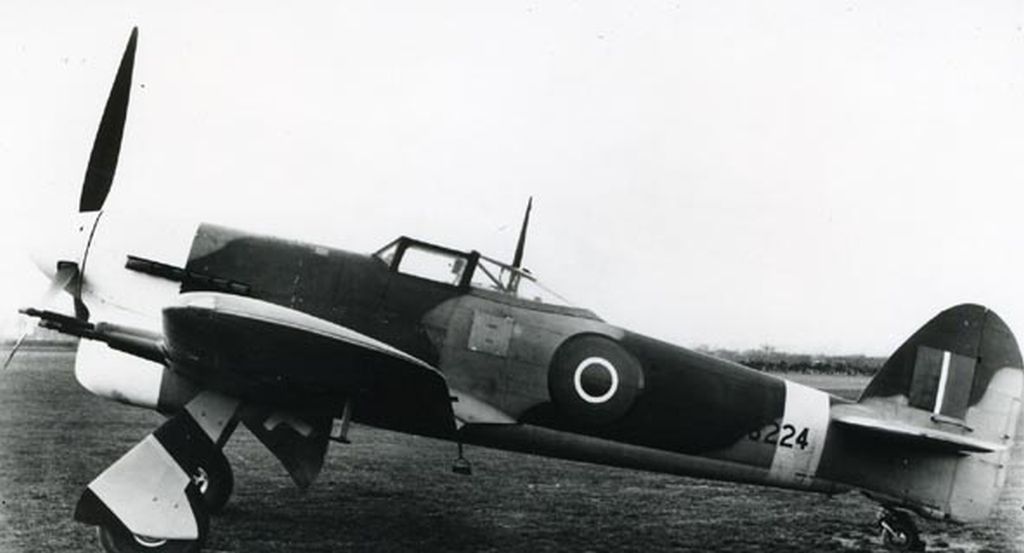
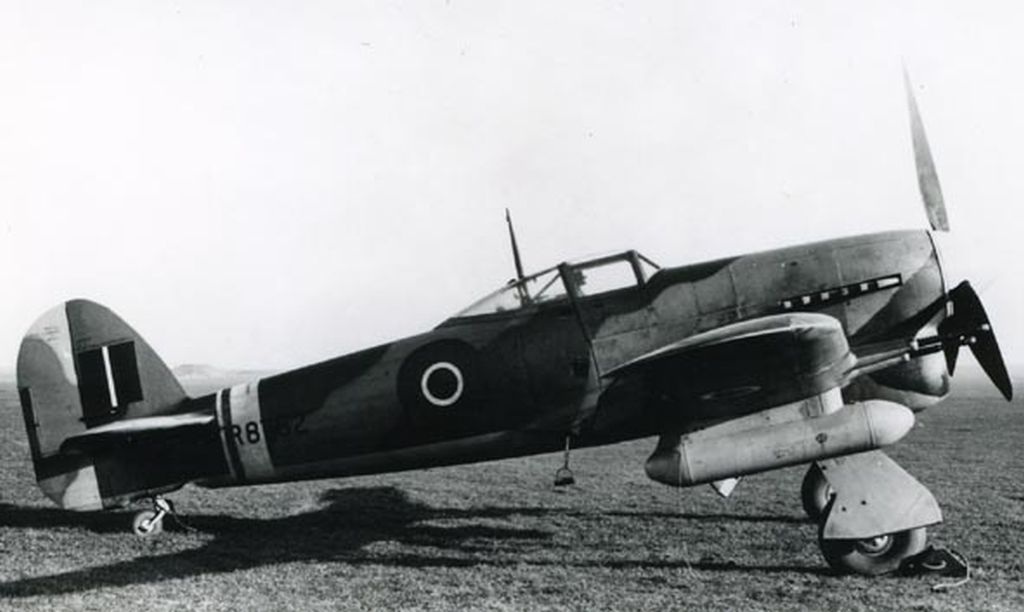
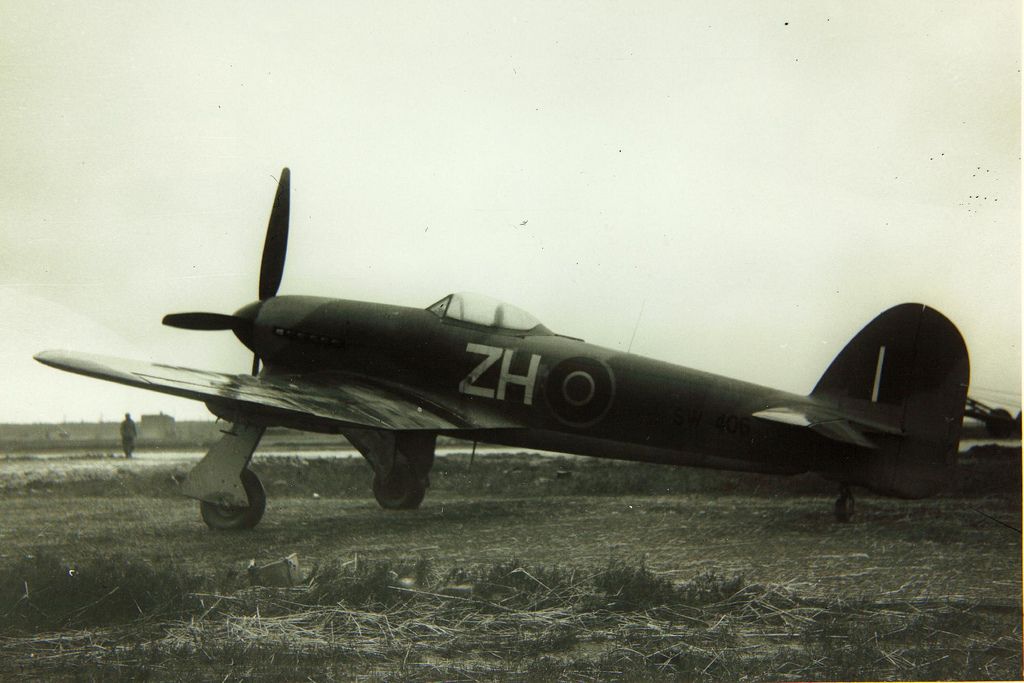
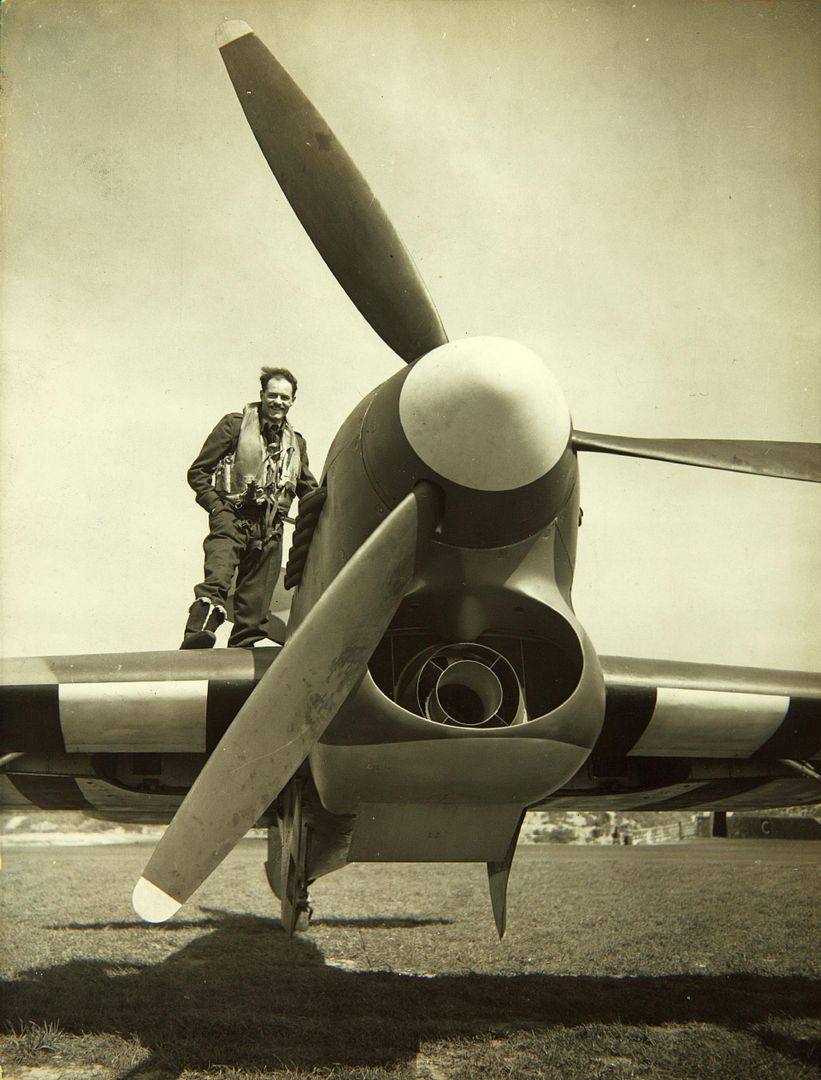
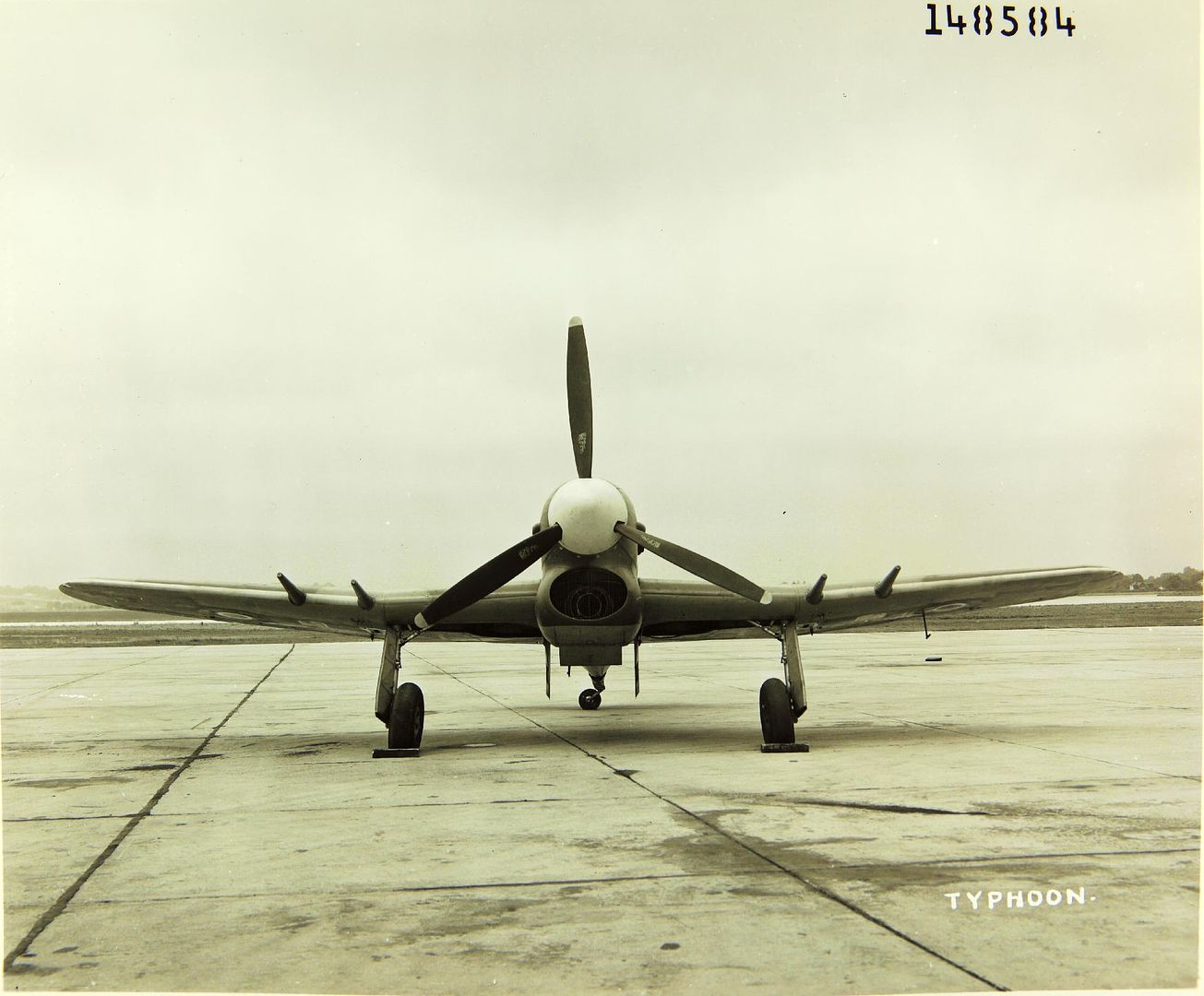
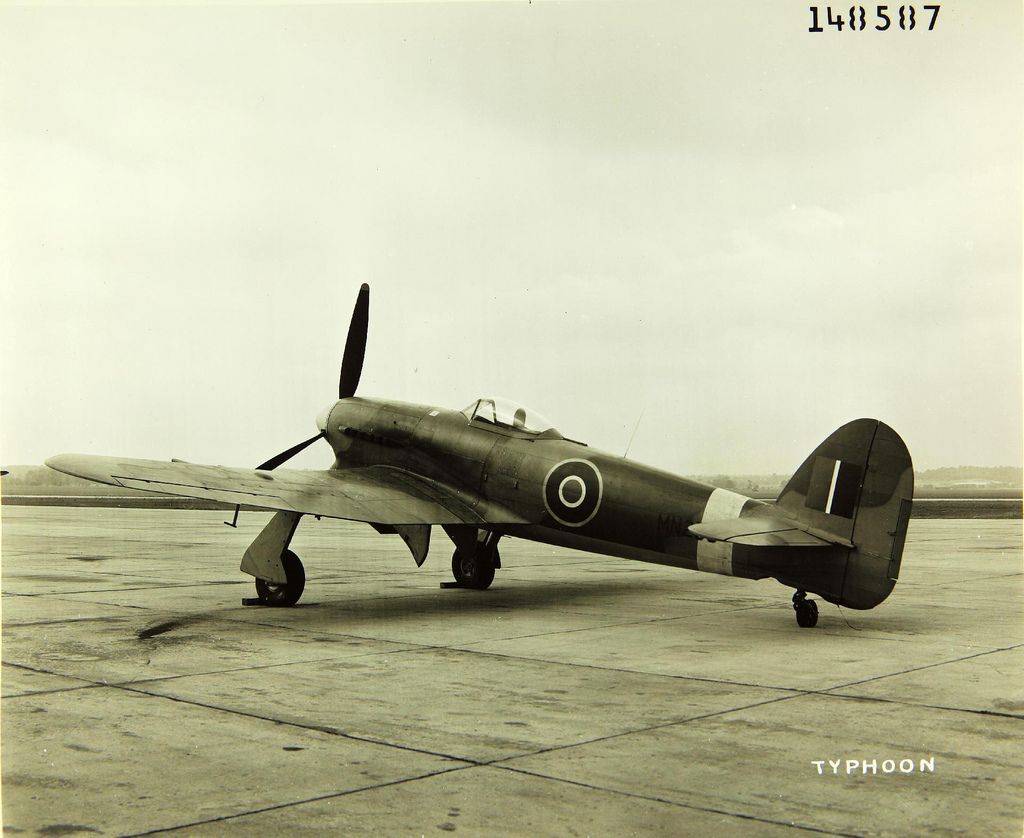
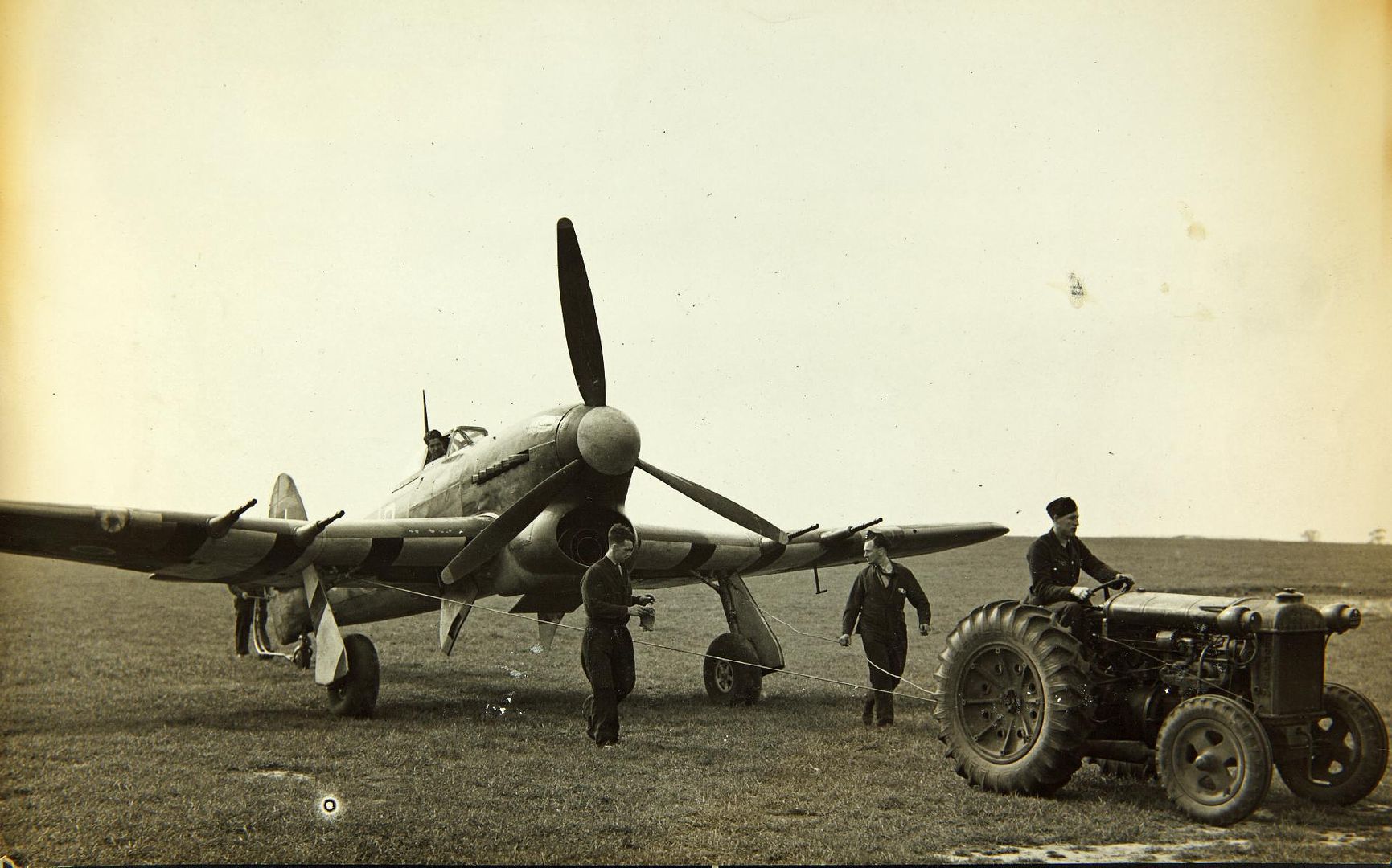
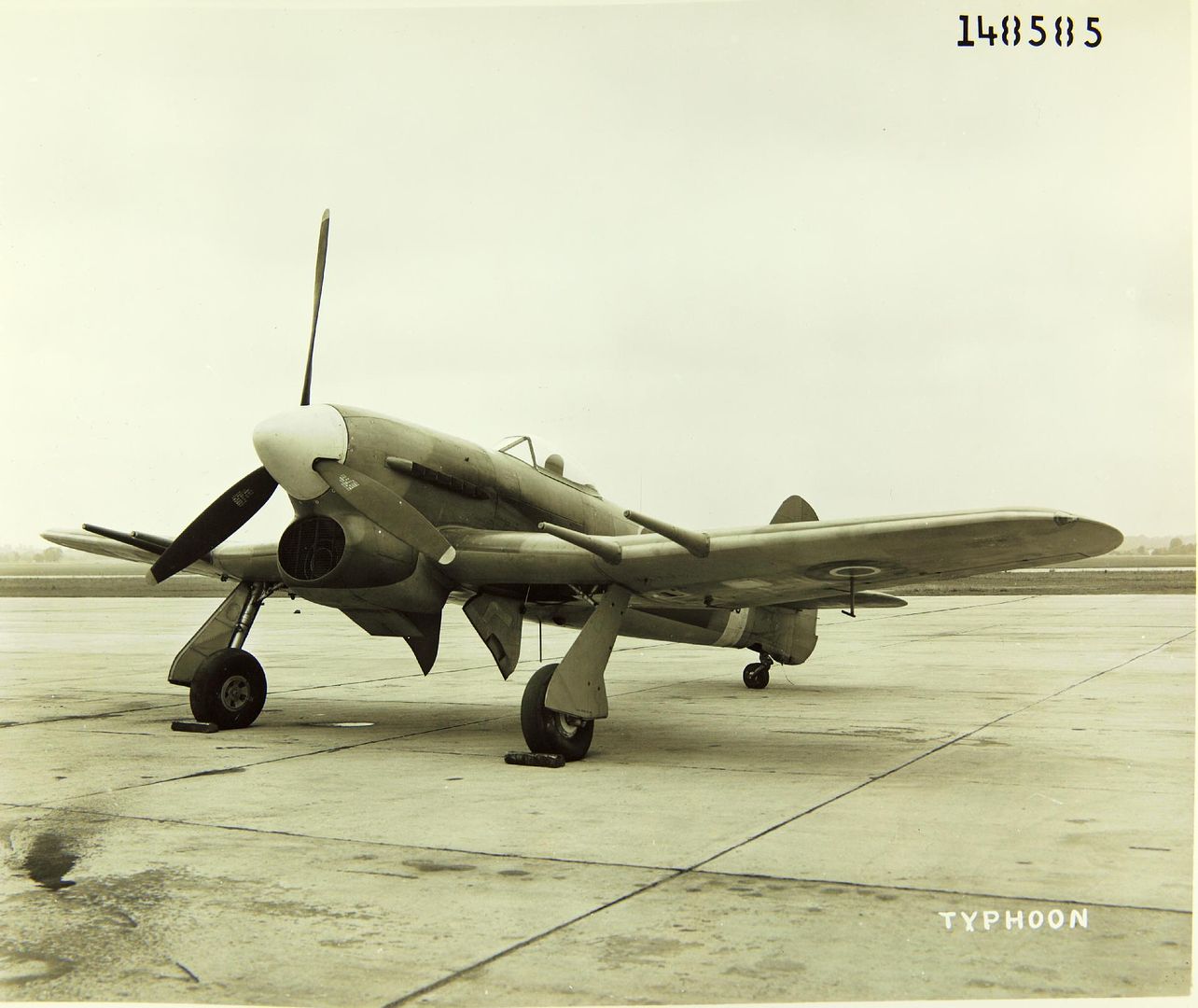
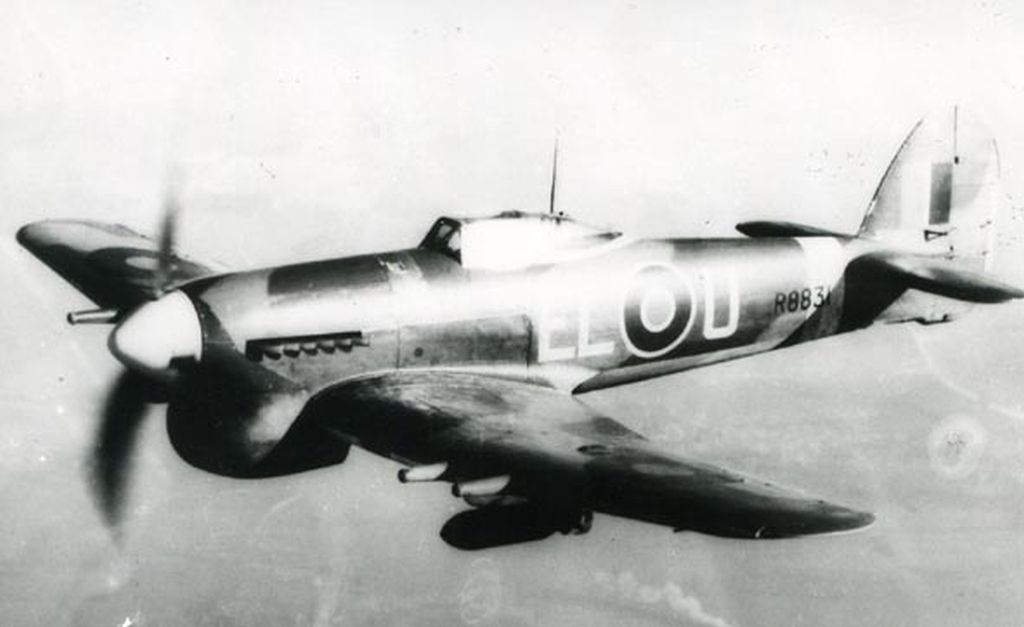
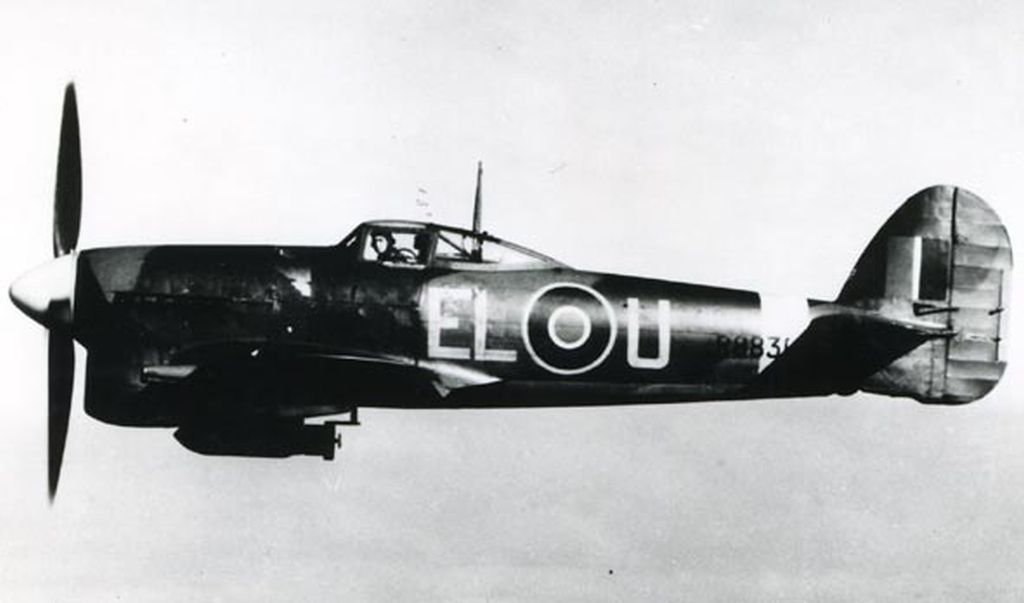
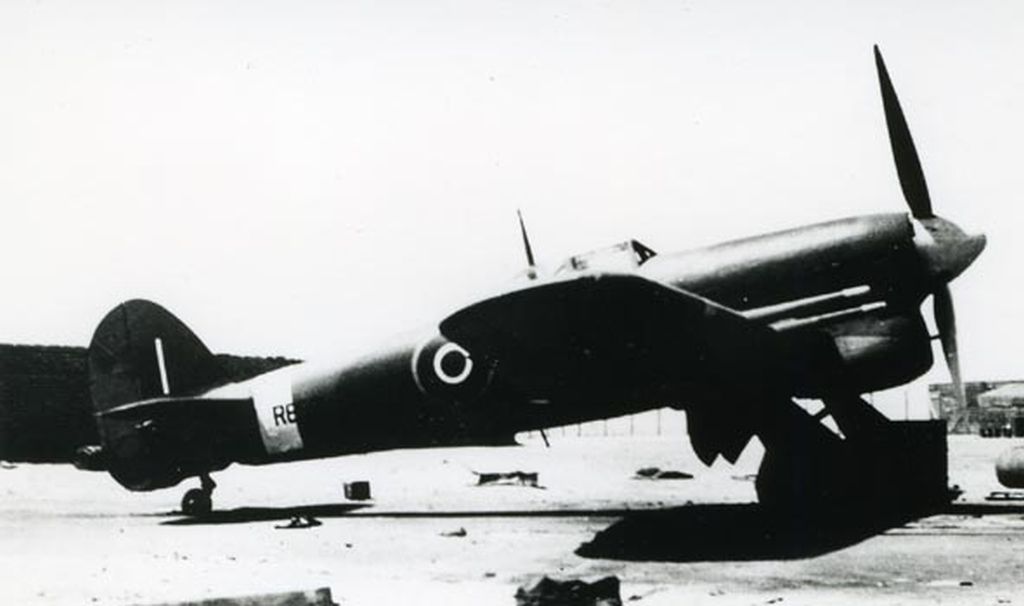
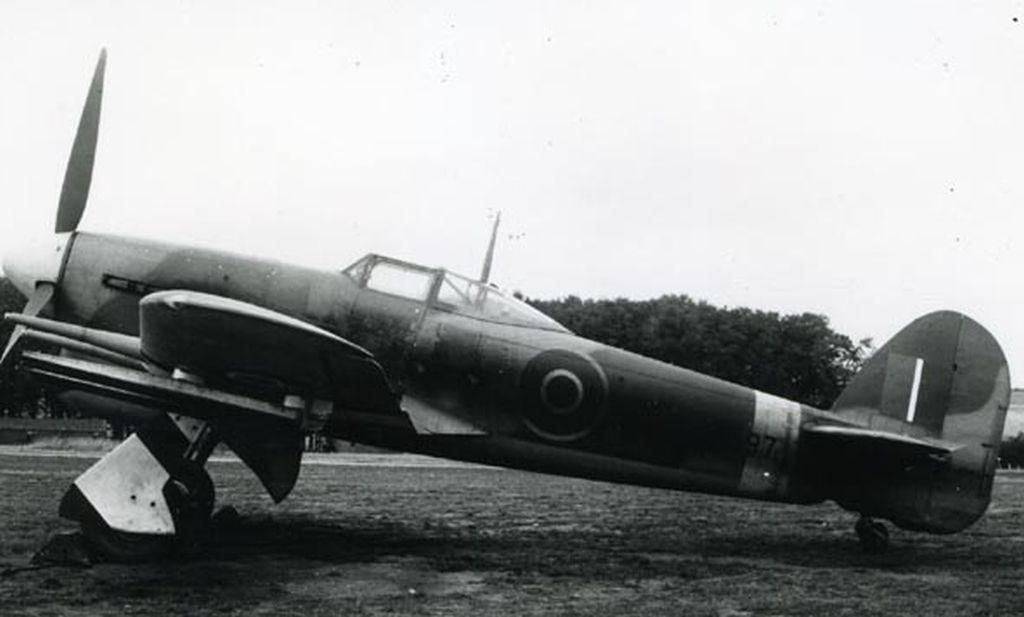
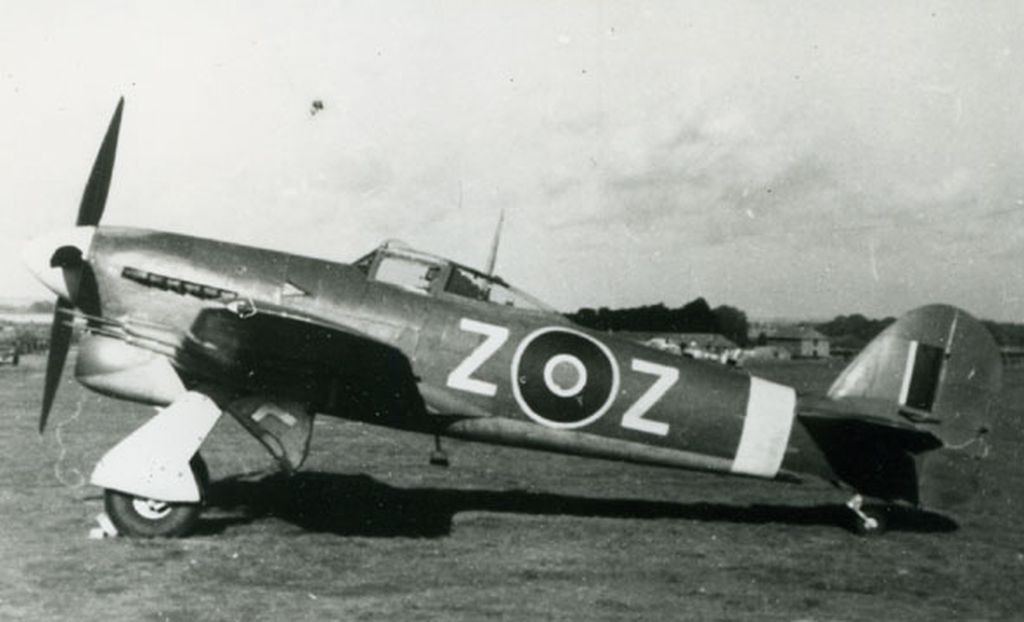
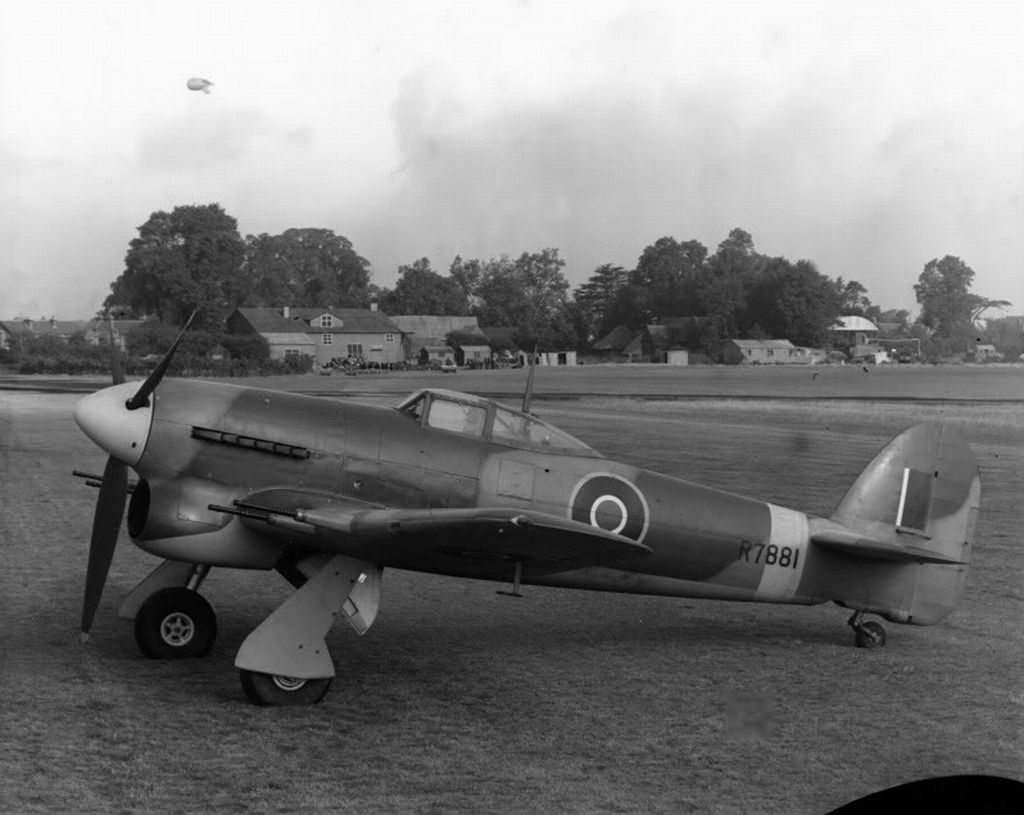
Below 451(RAAF) Squadron - Three aircraft, for tropical trials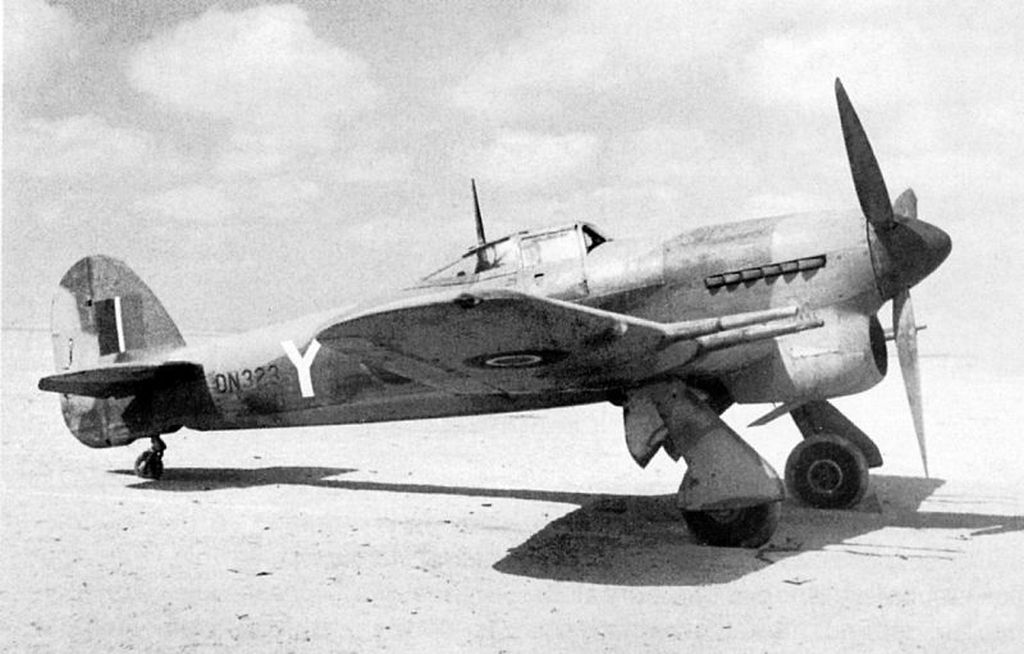
Below In 1943, one Typhoon, R7881 was converted to a prototype night fighter (N.F. Mk. IB), fitted with A.I. (Airborne Interception, i.e., radar) equipment, a special night-flying cockpit and other modifications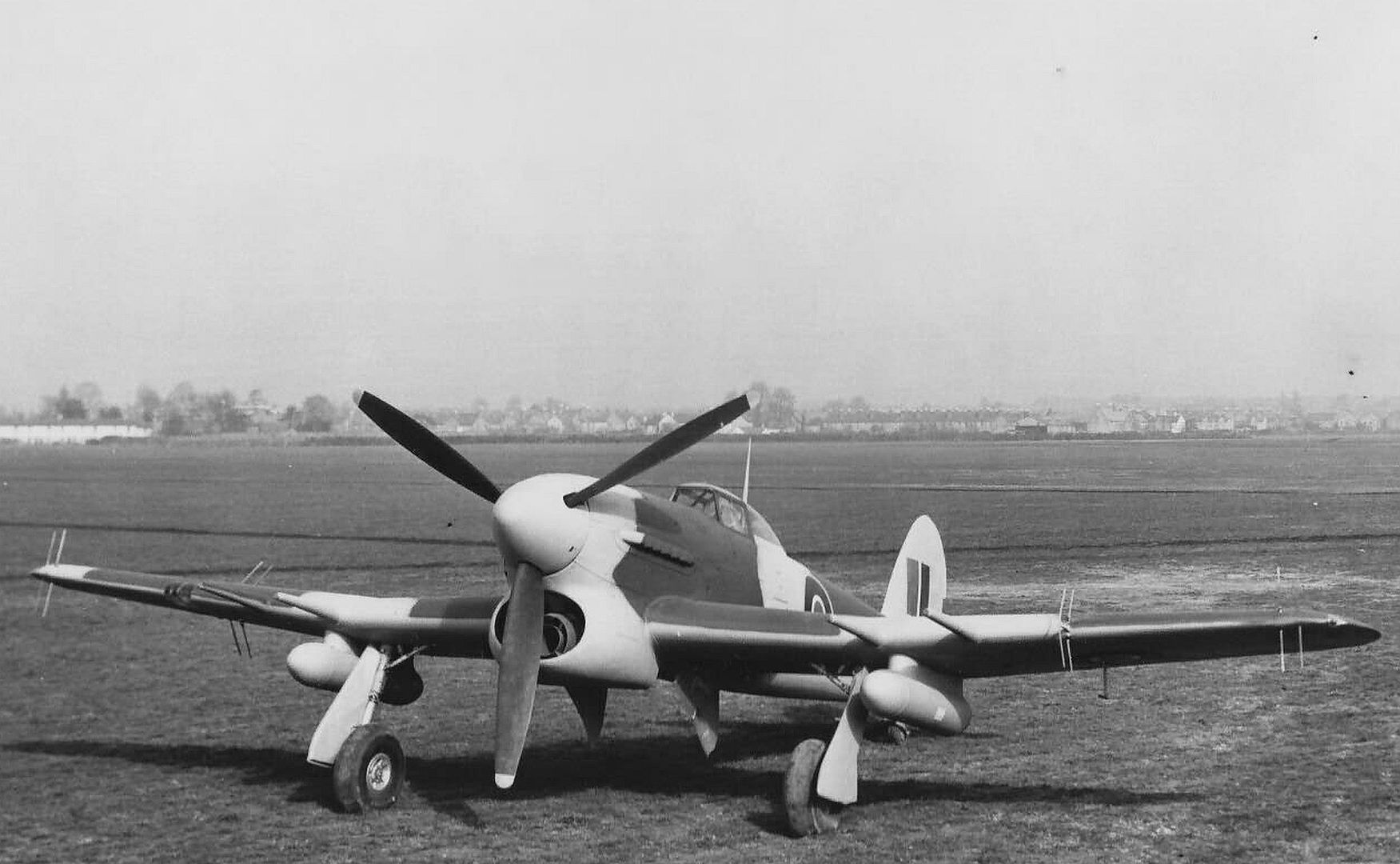
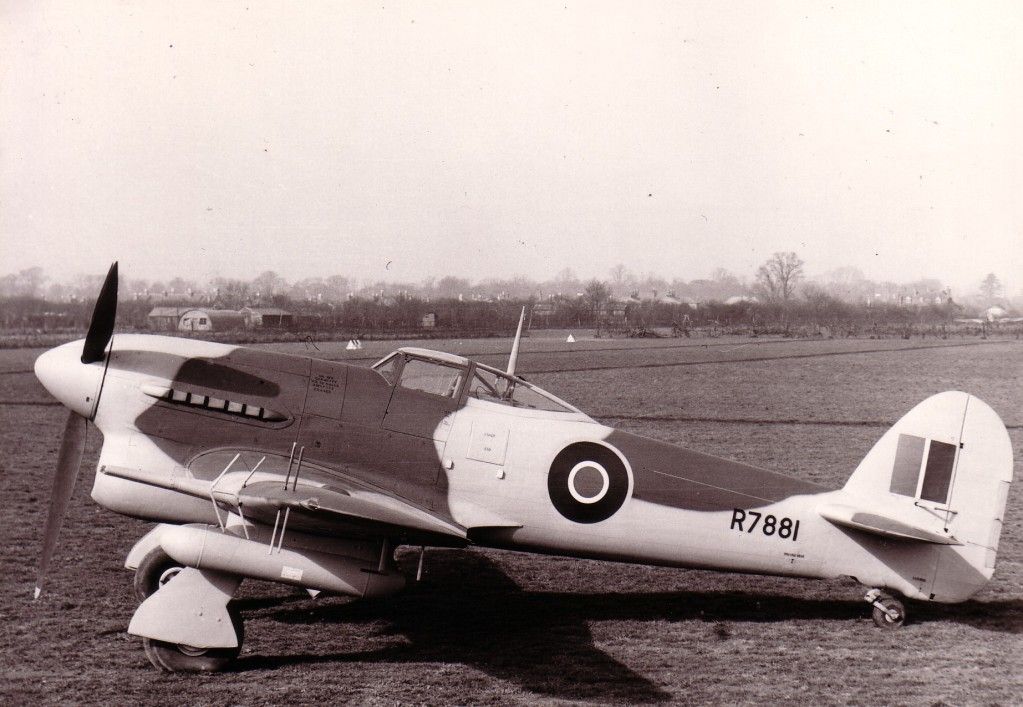
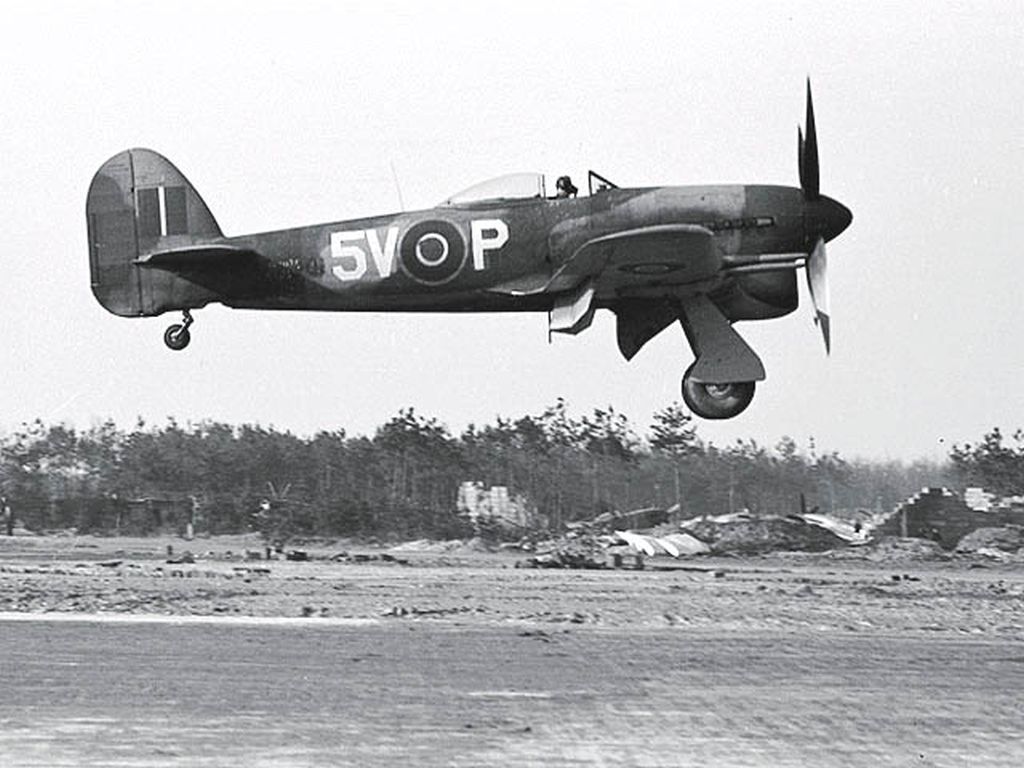
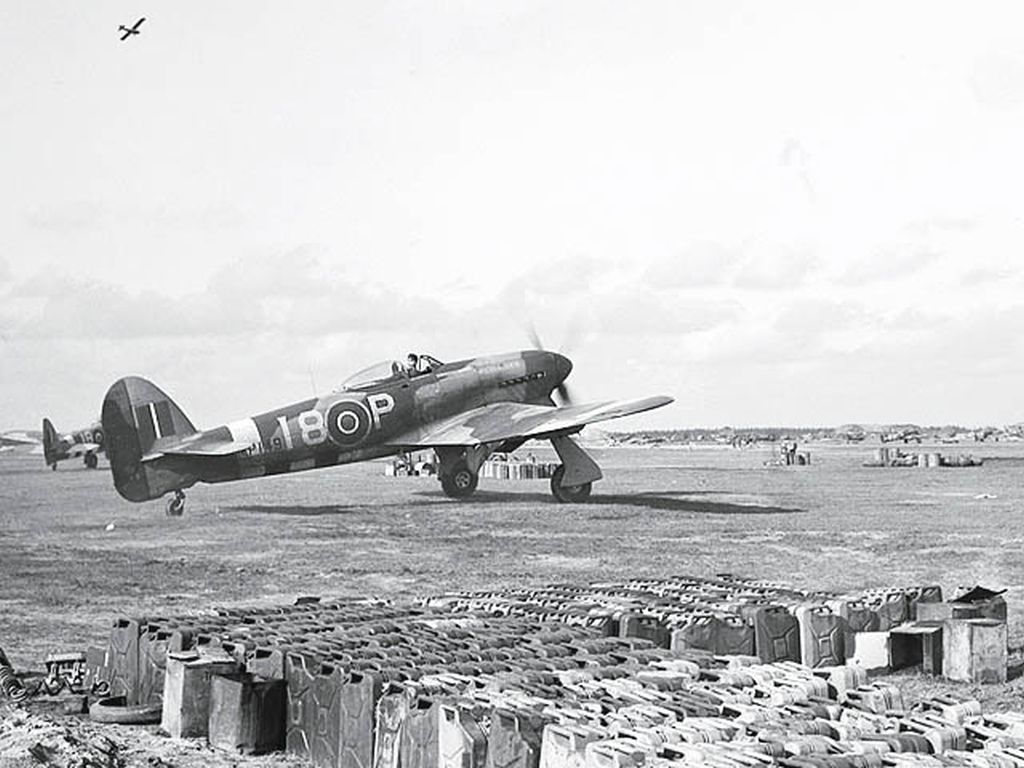
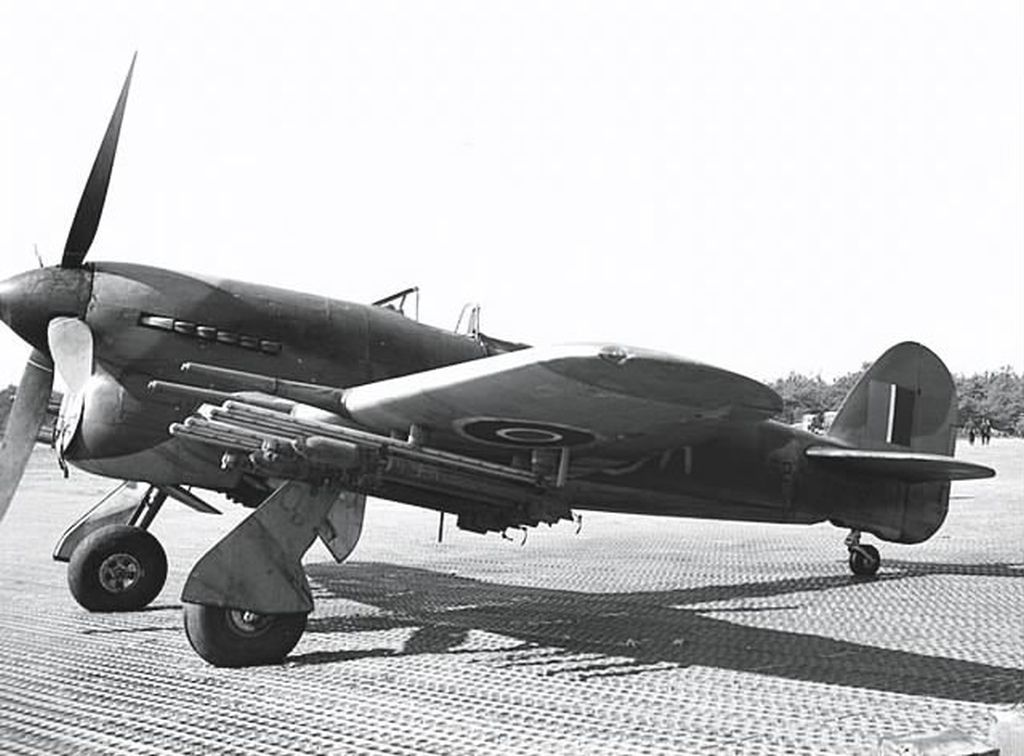
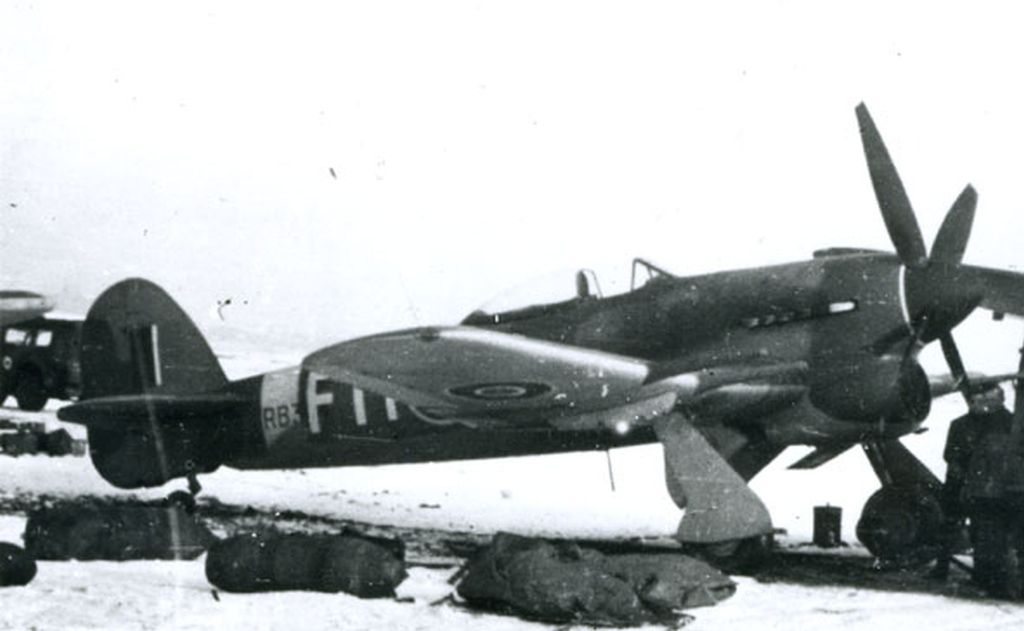



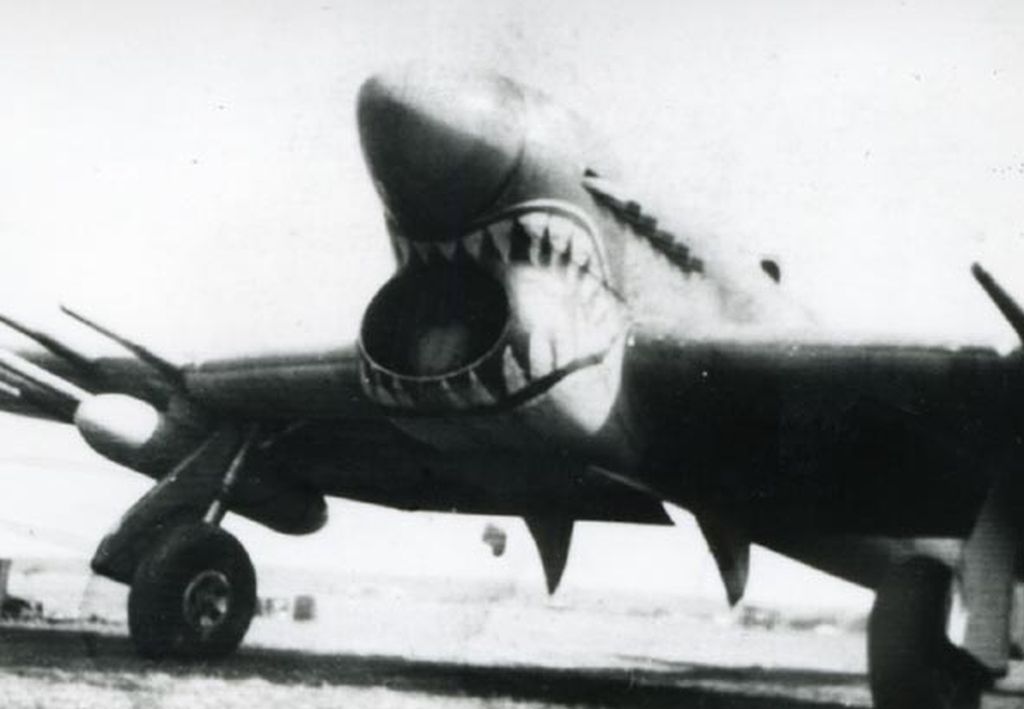
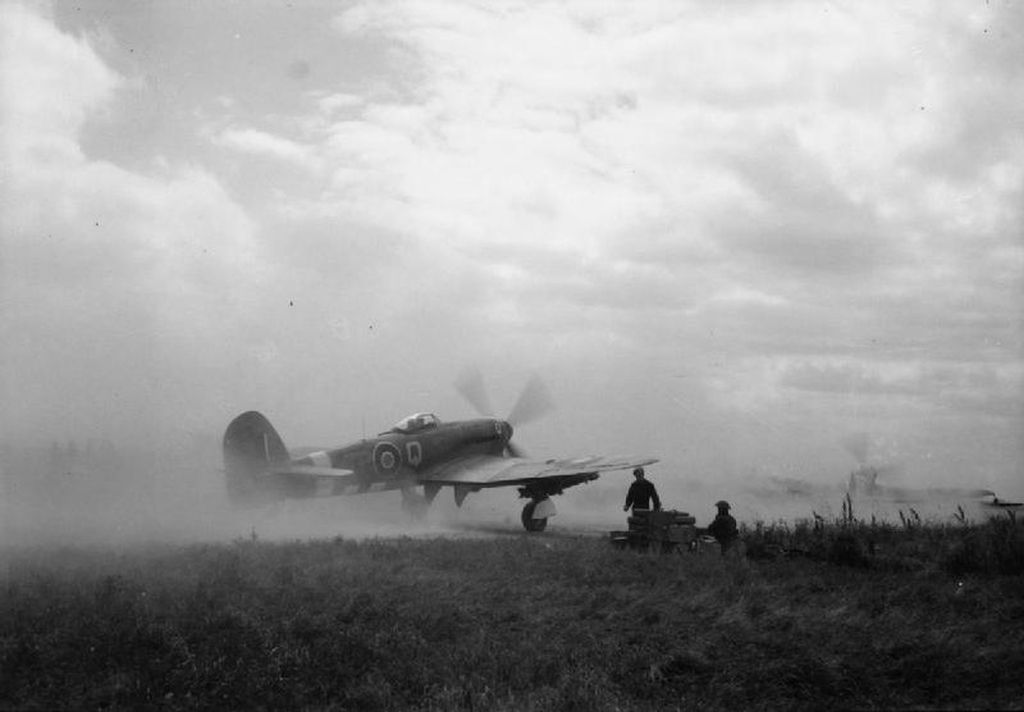

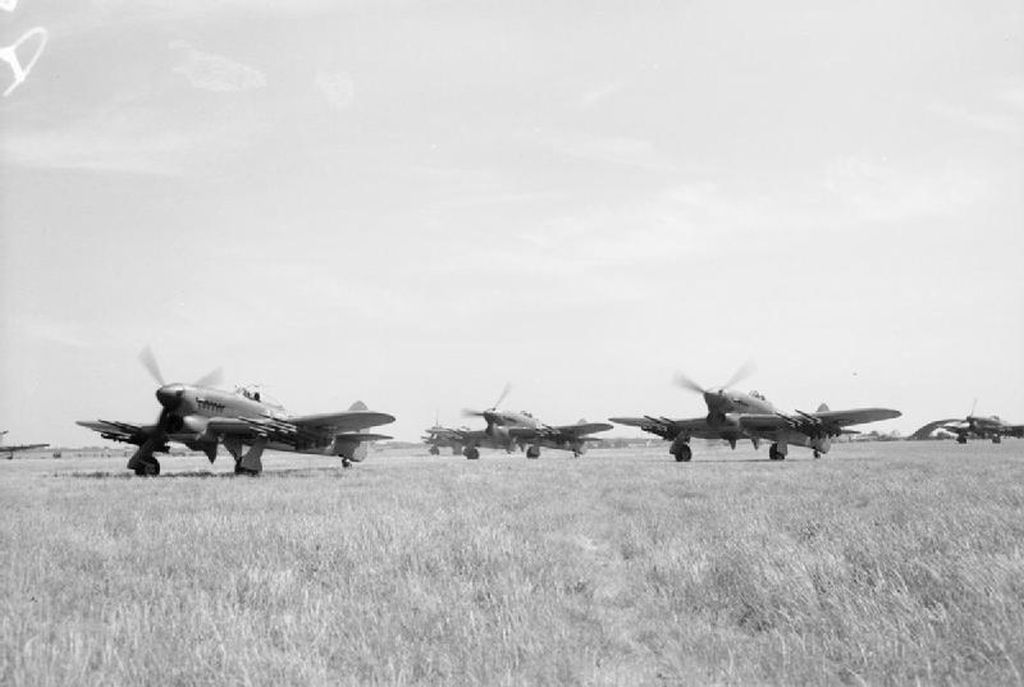
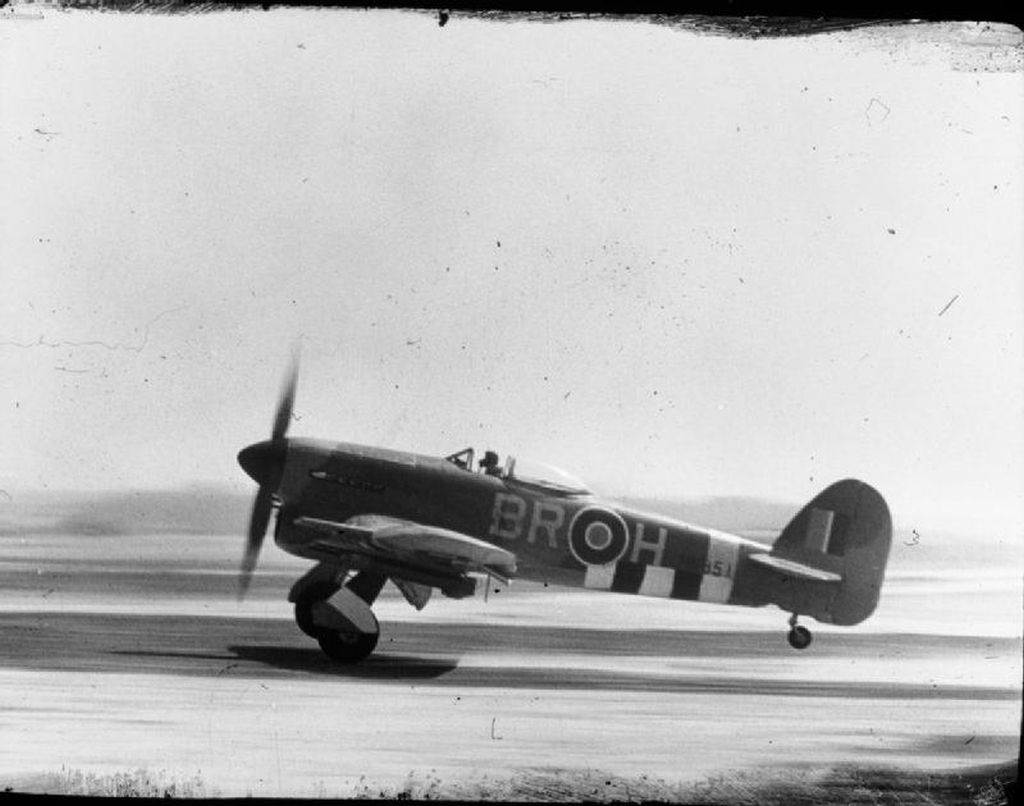
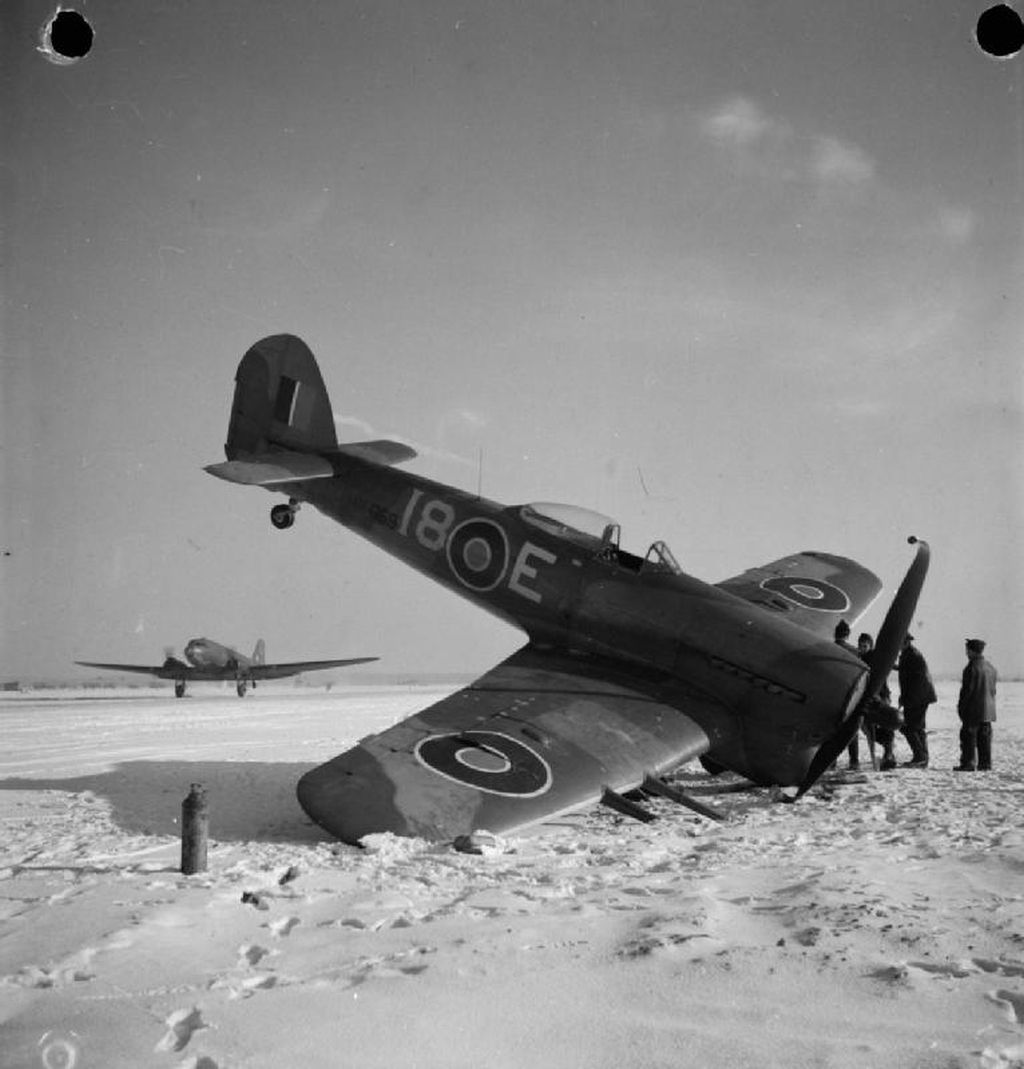

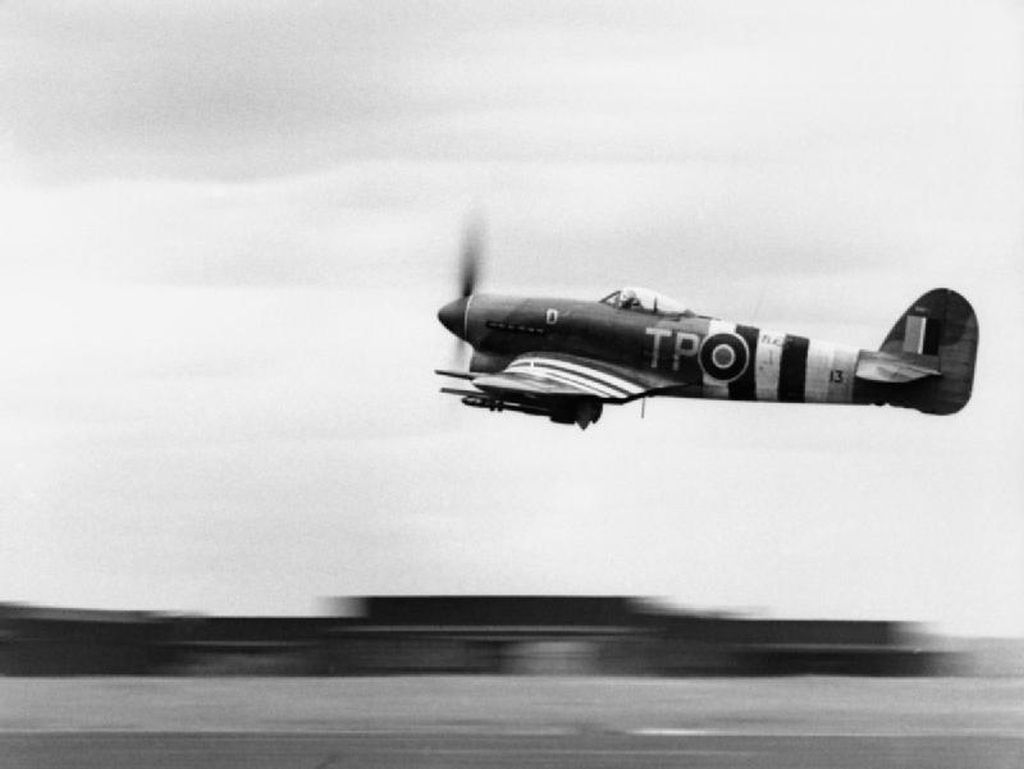
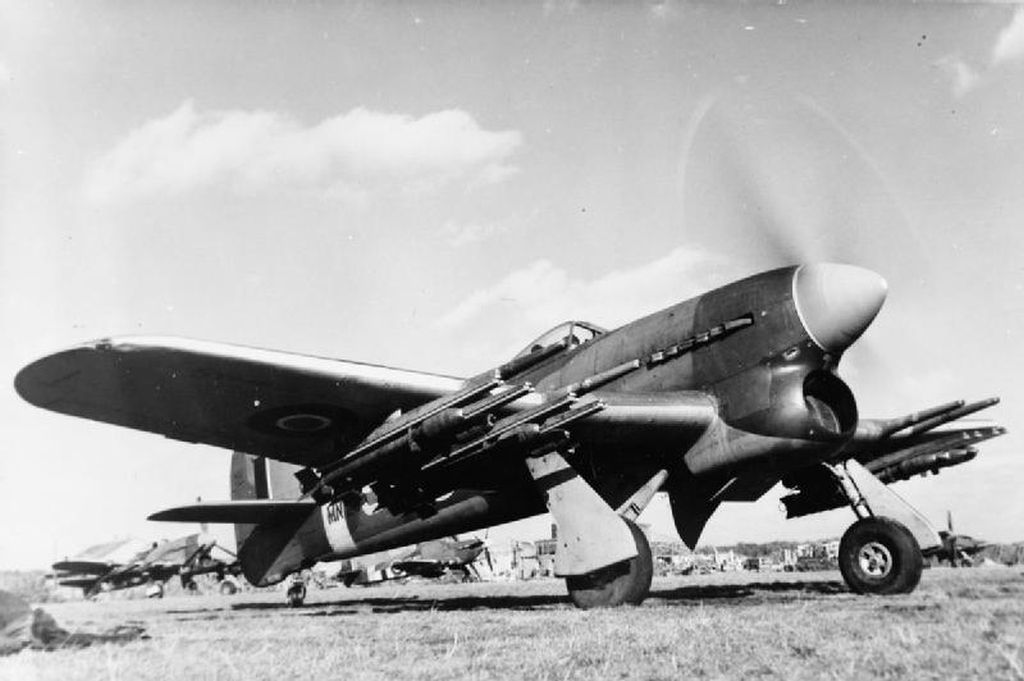
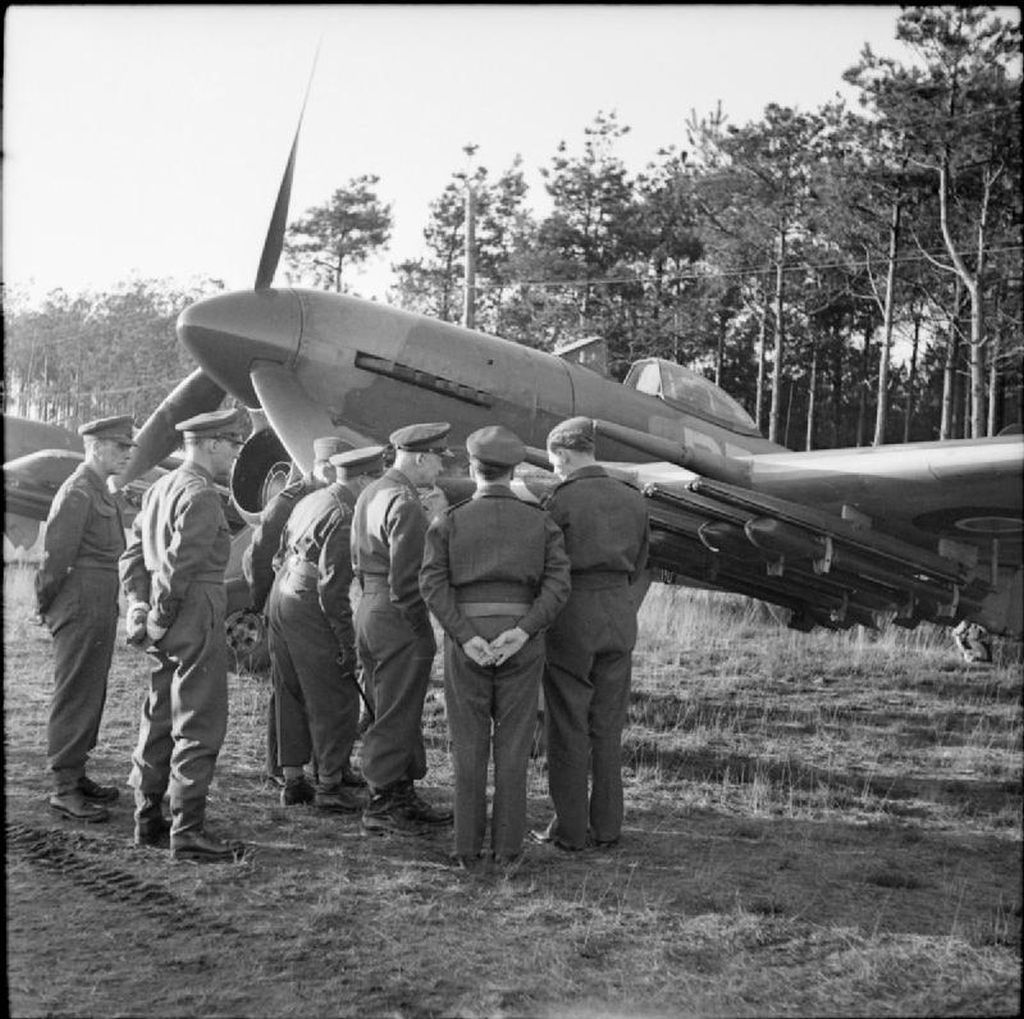
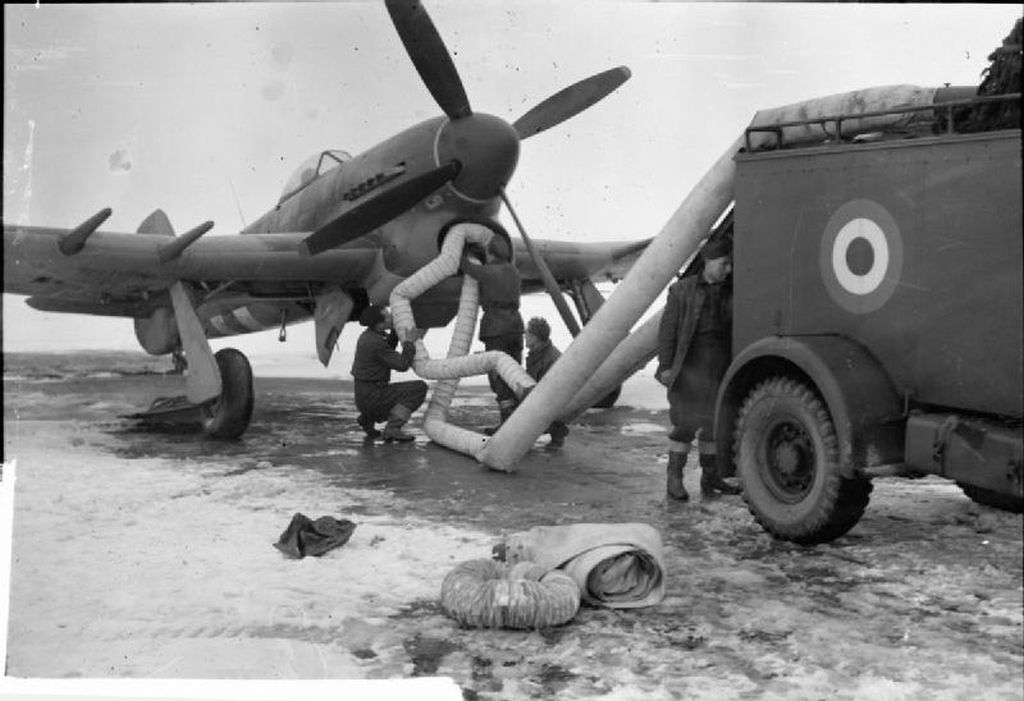
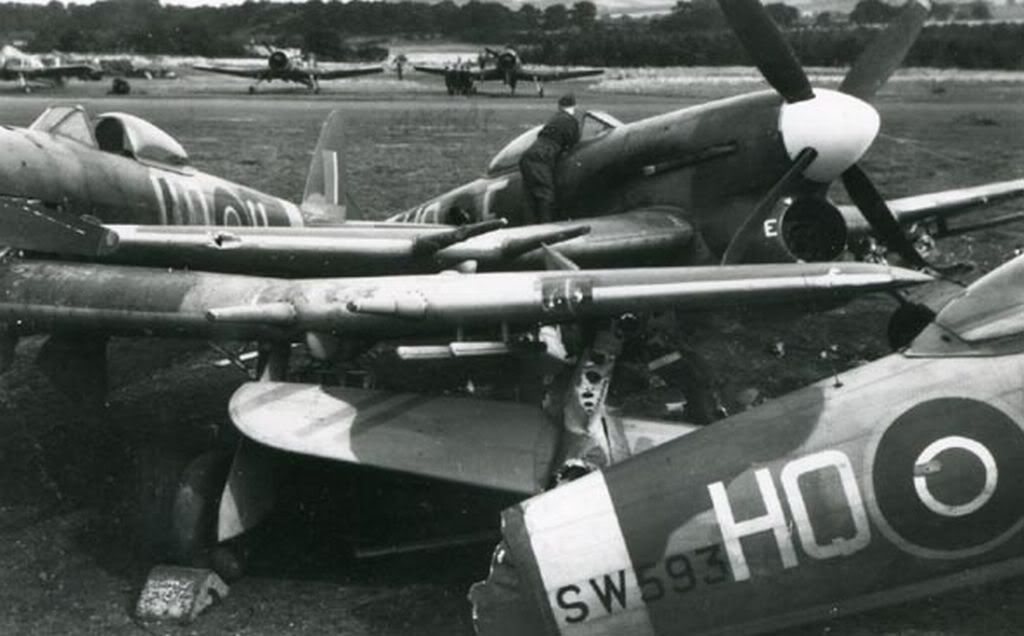


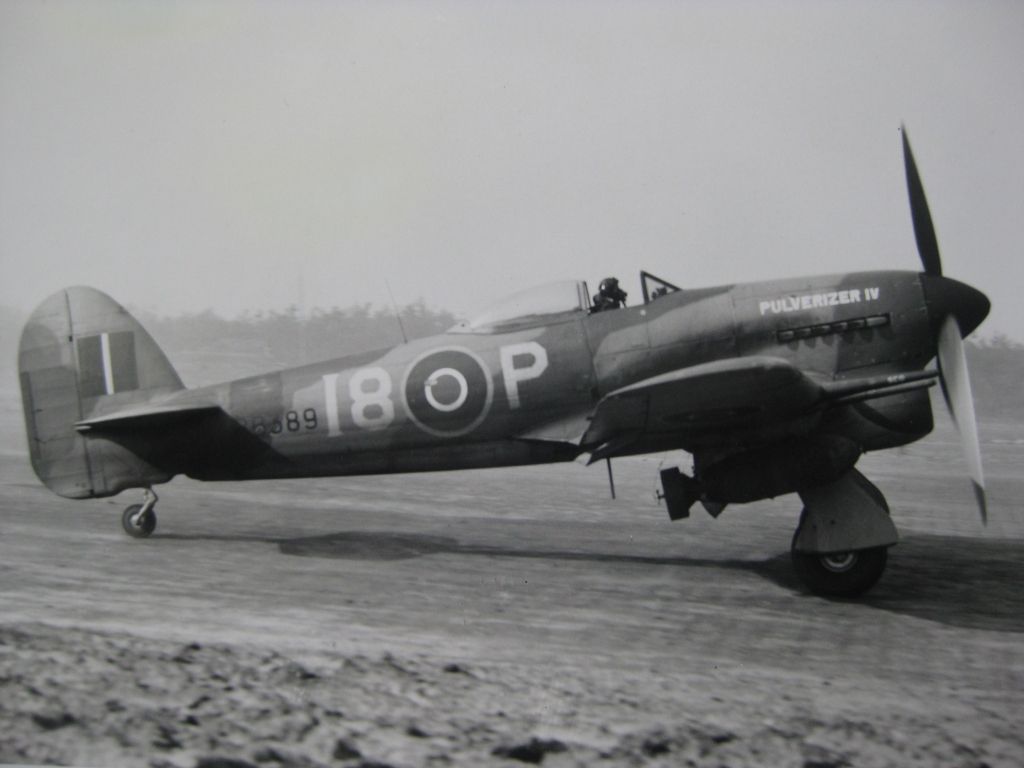
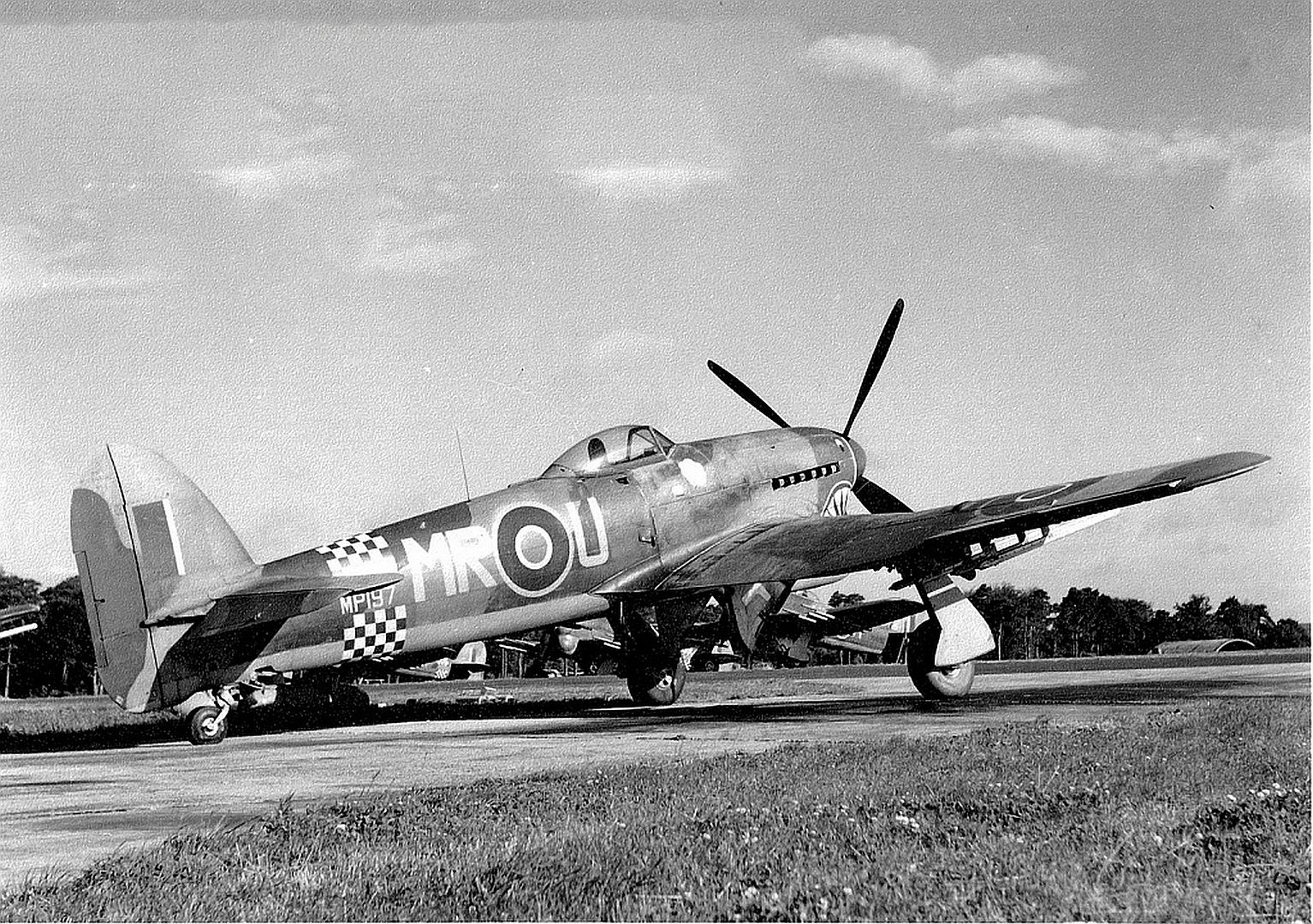
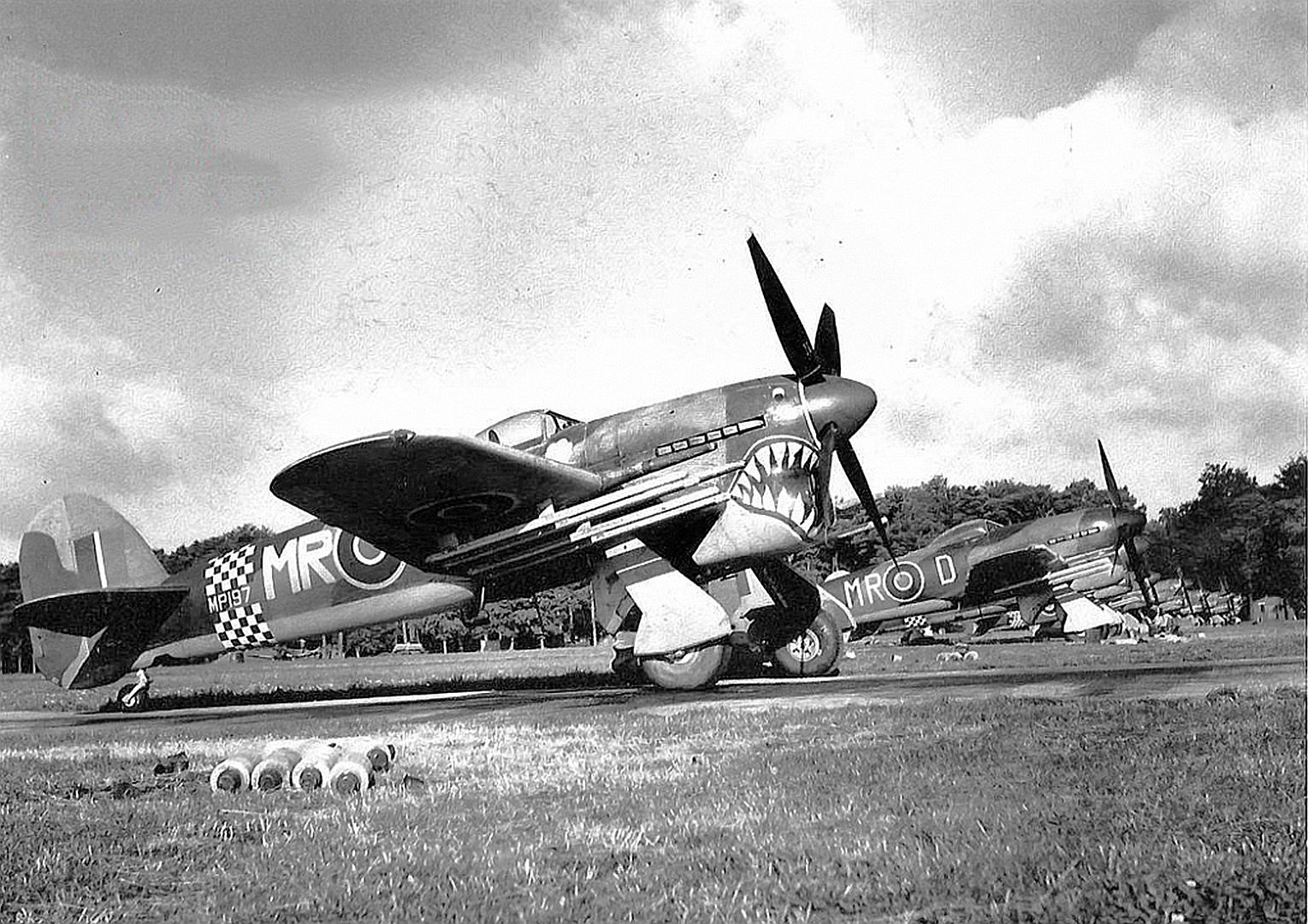
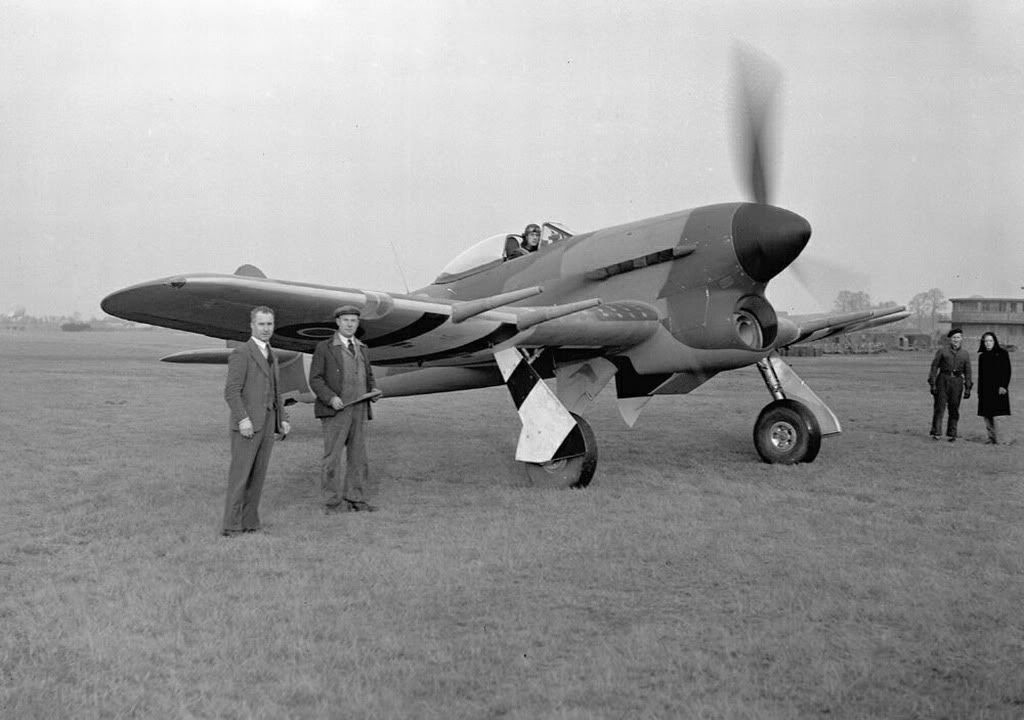


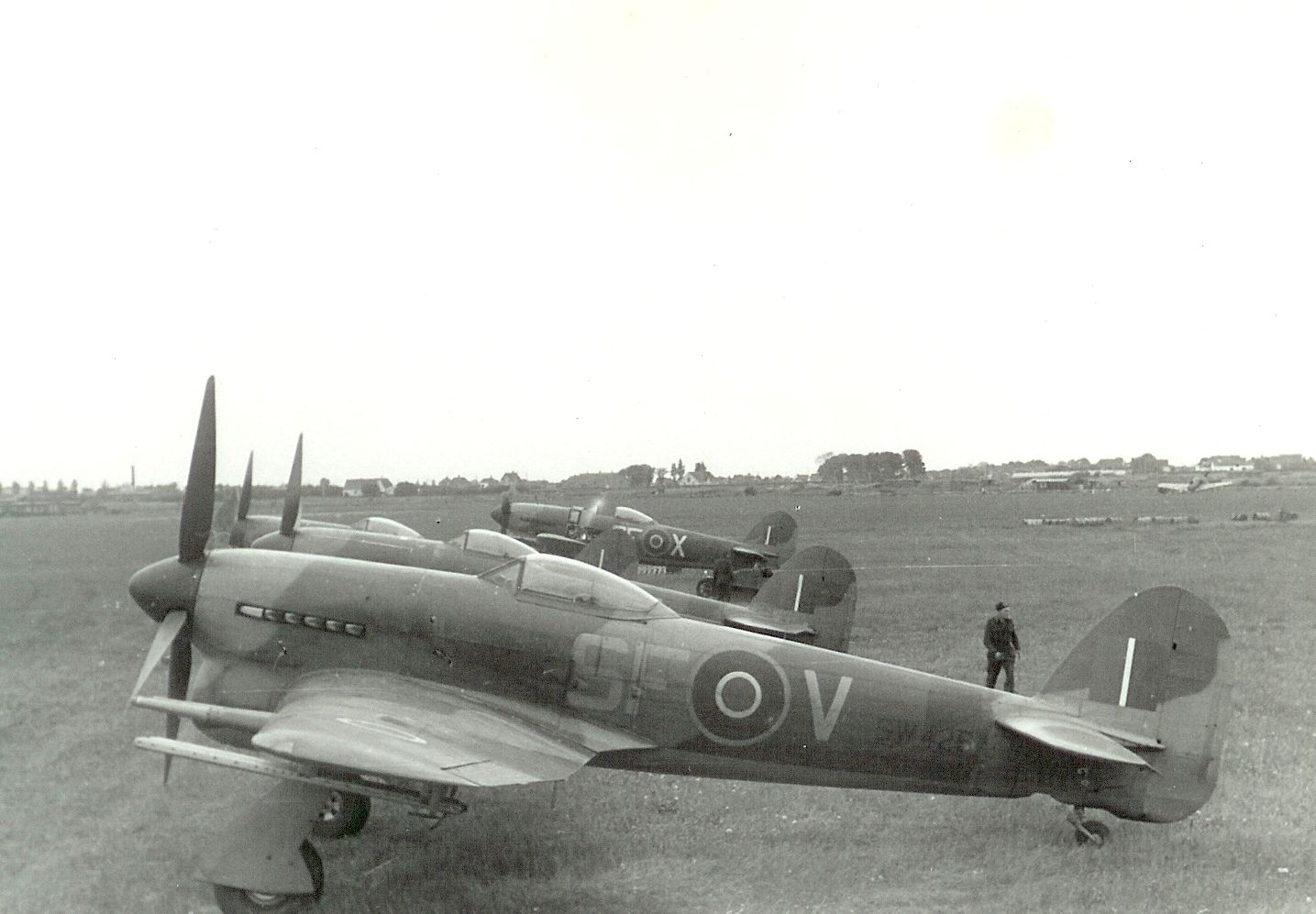
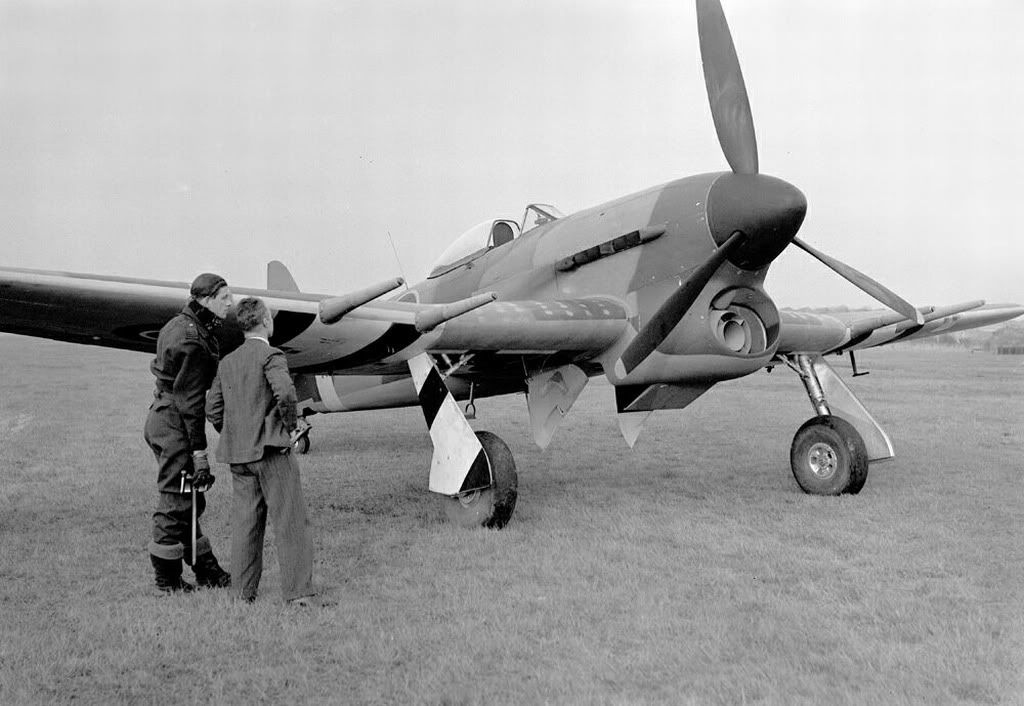
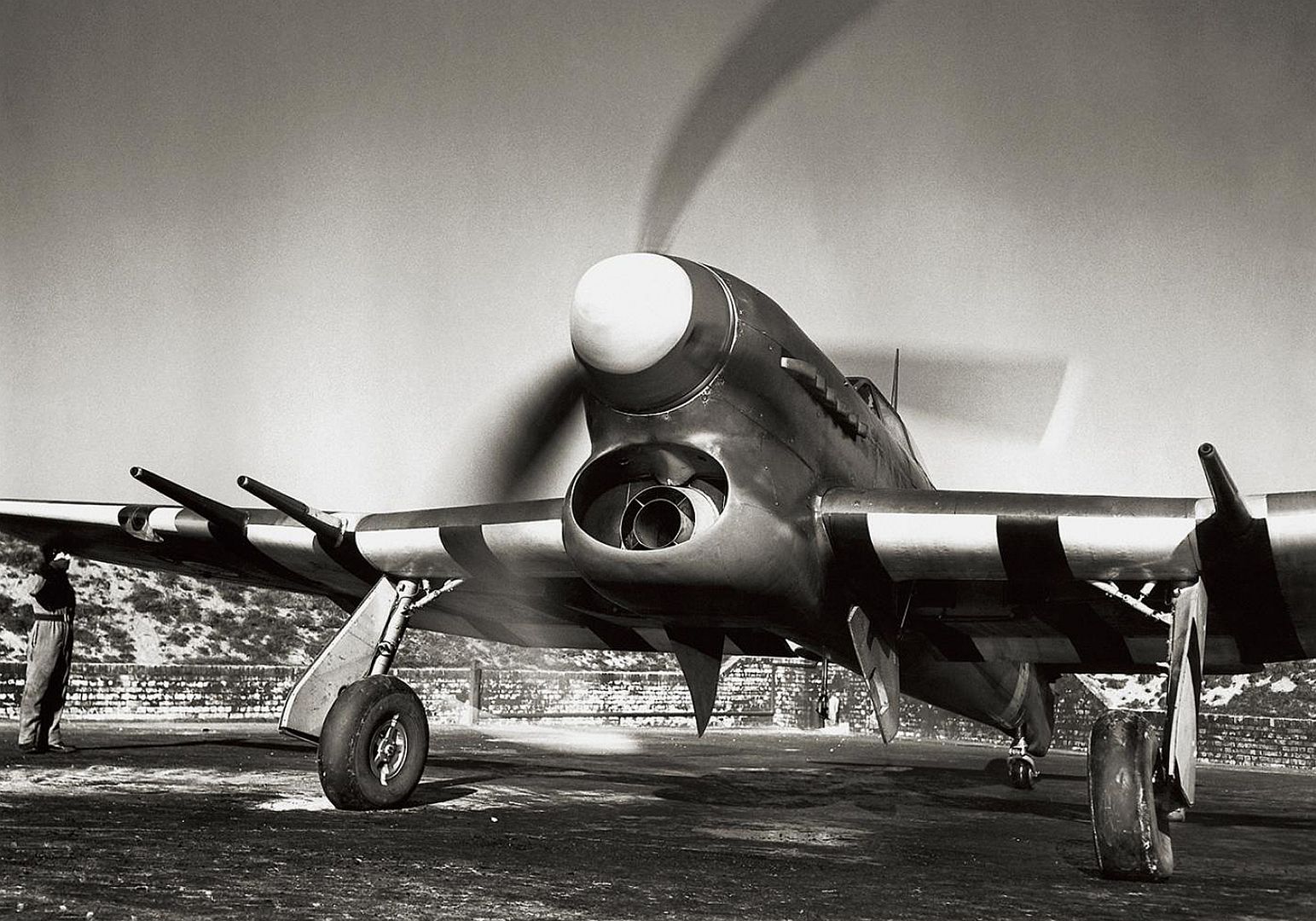
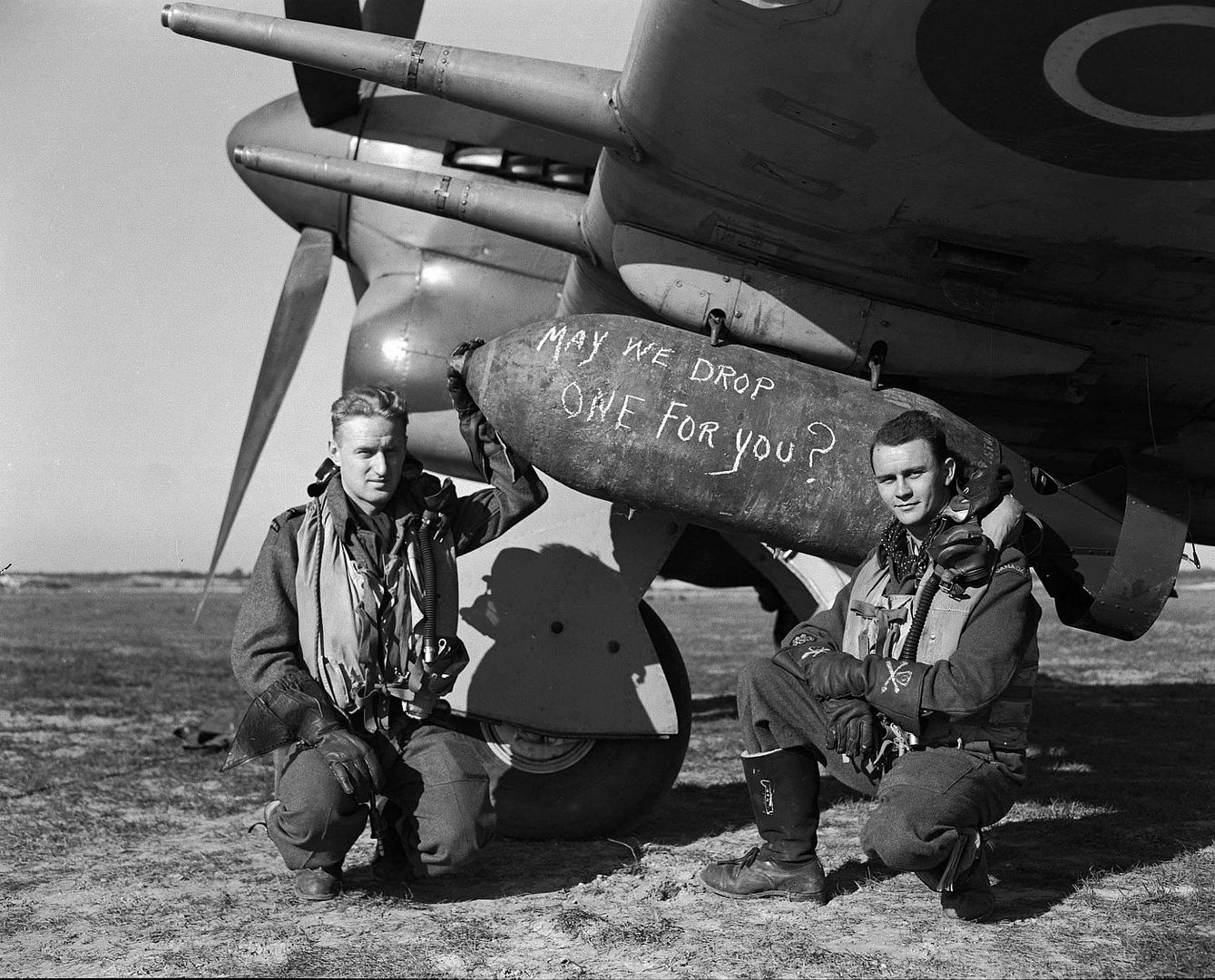
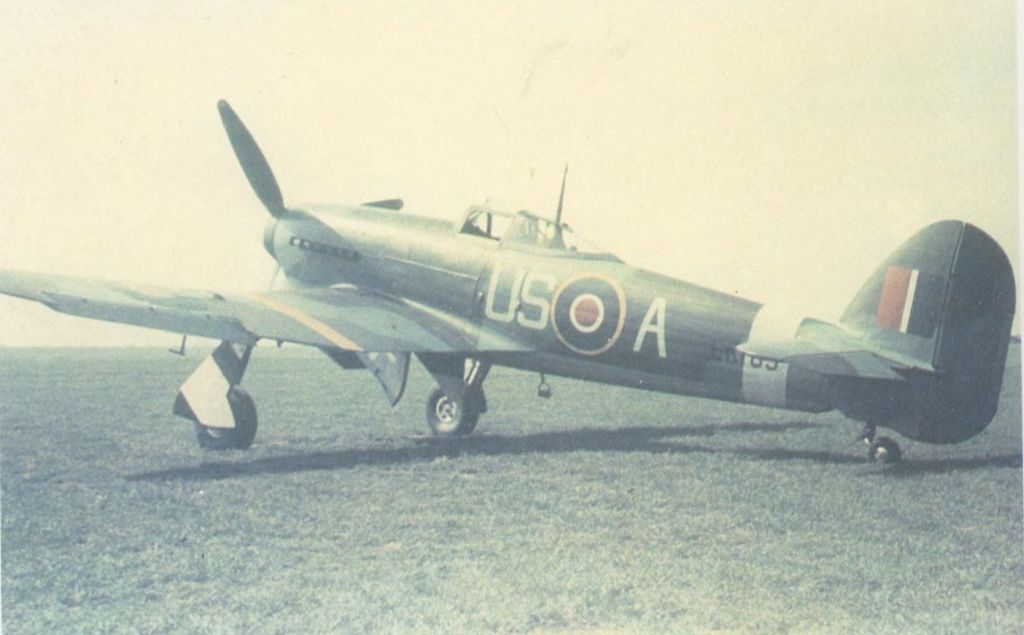

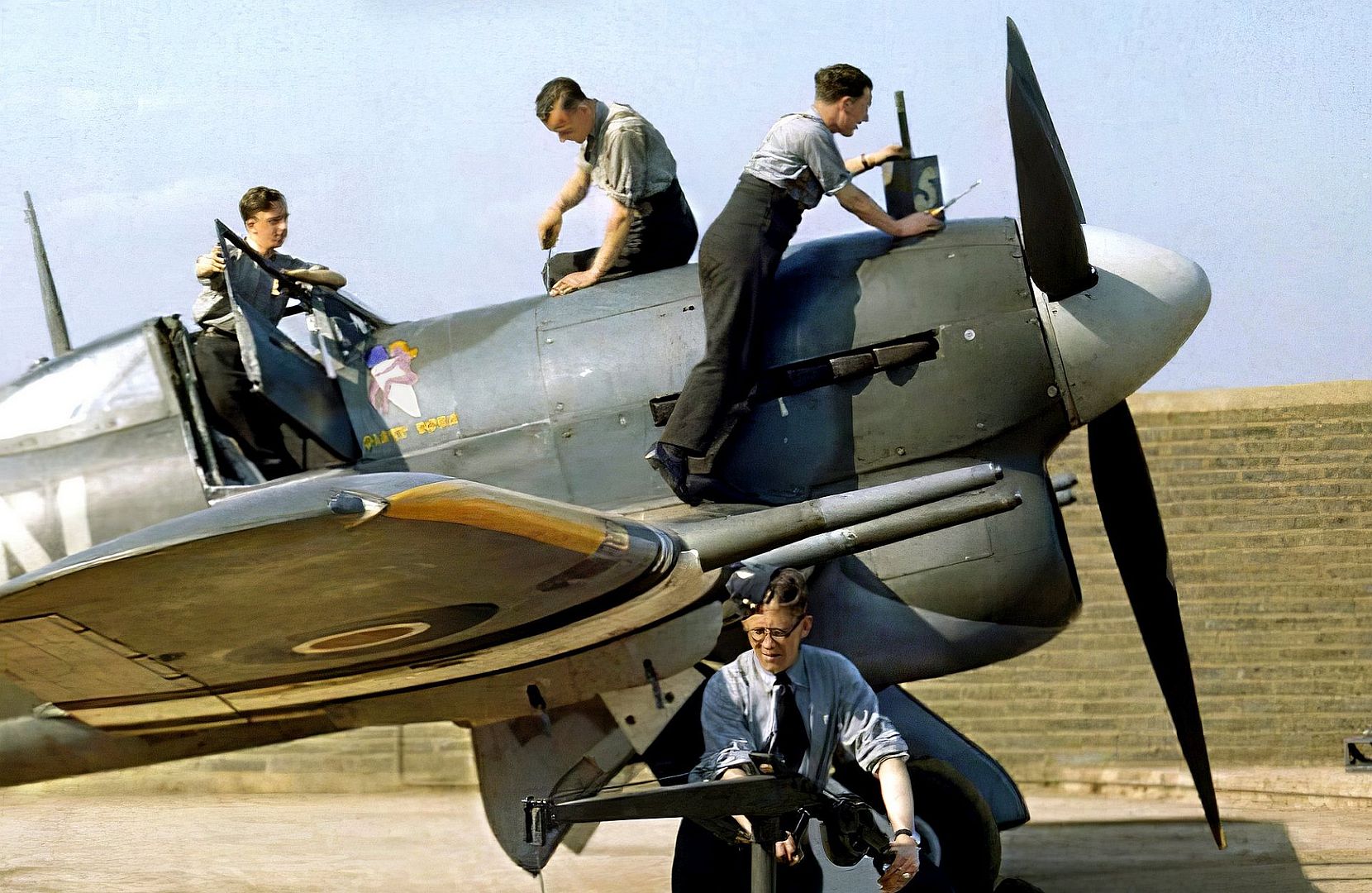
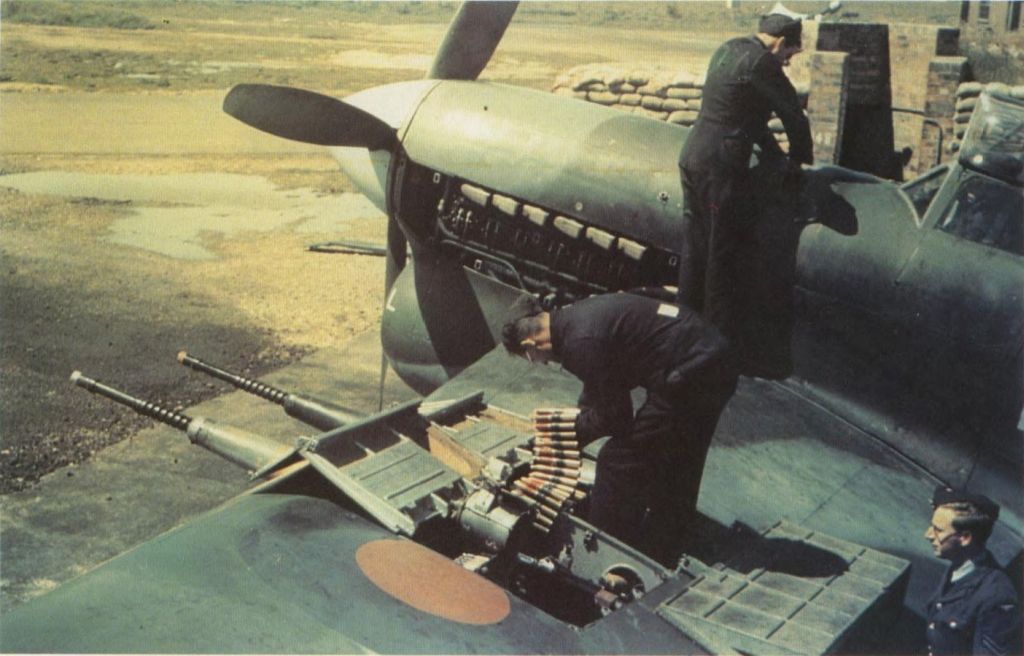
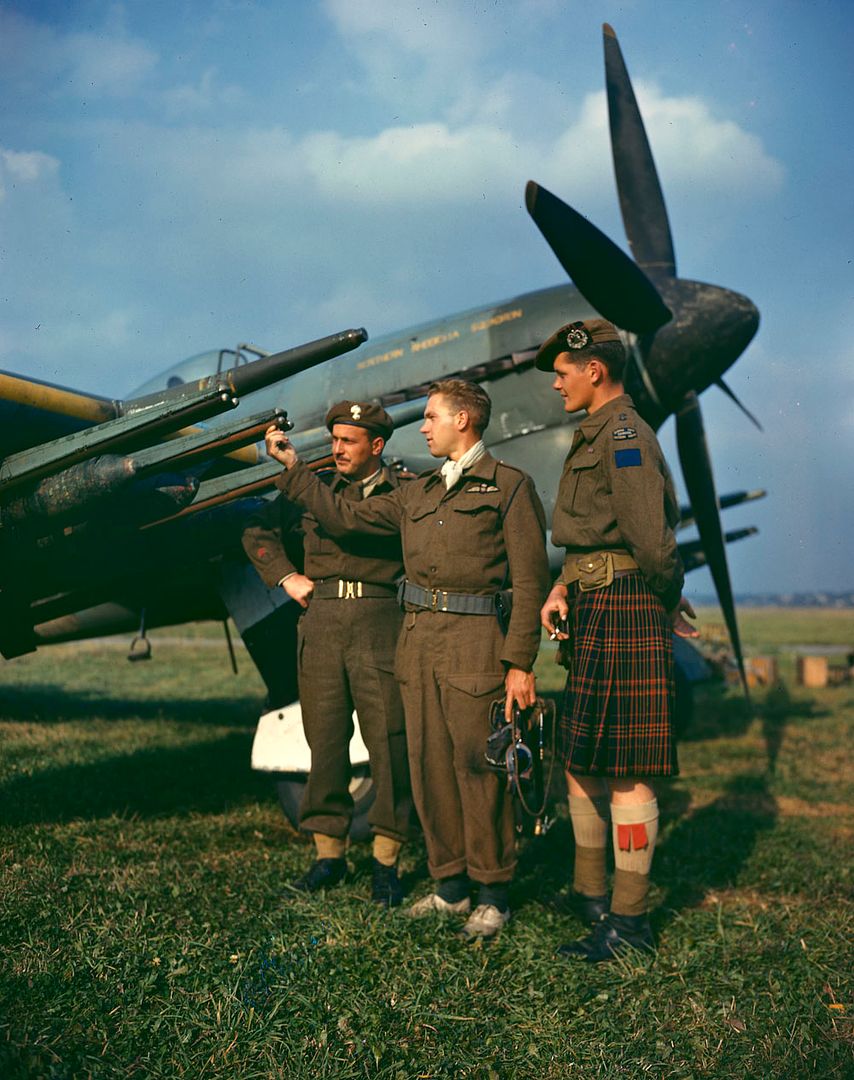
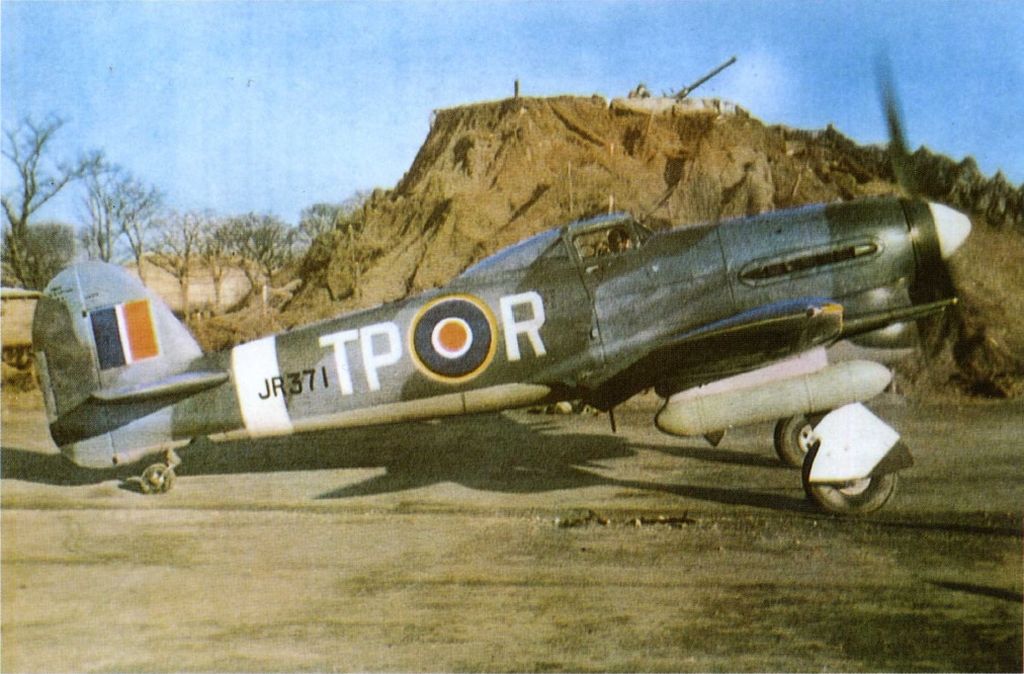

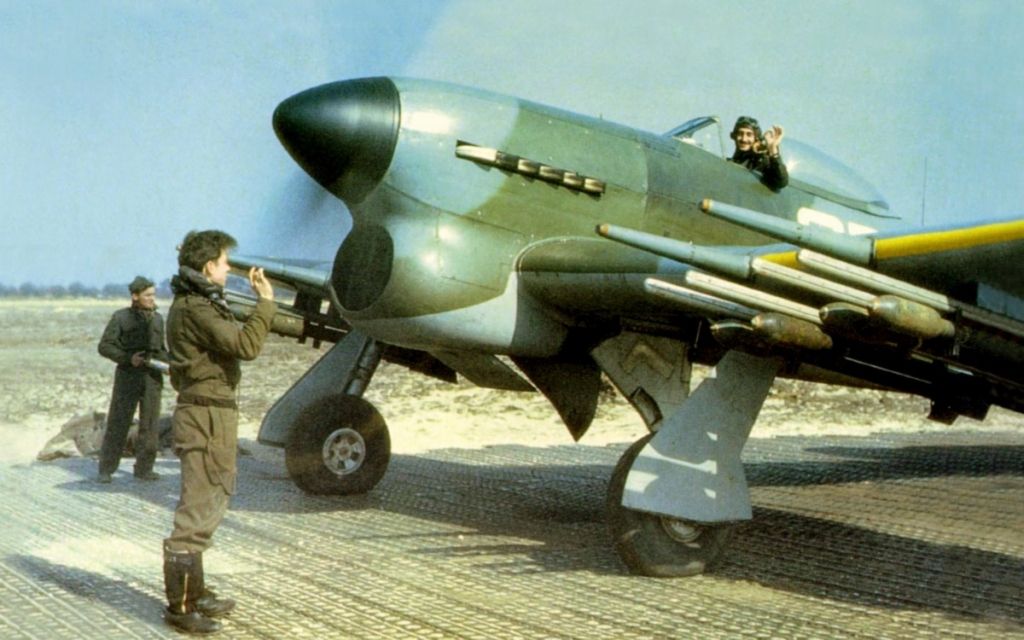
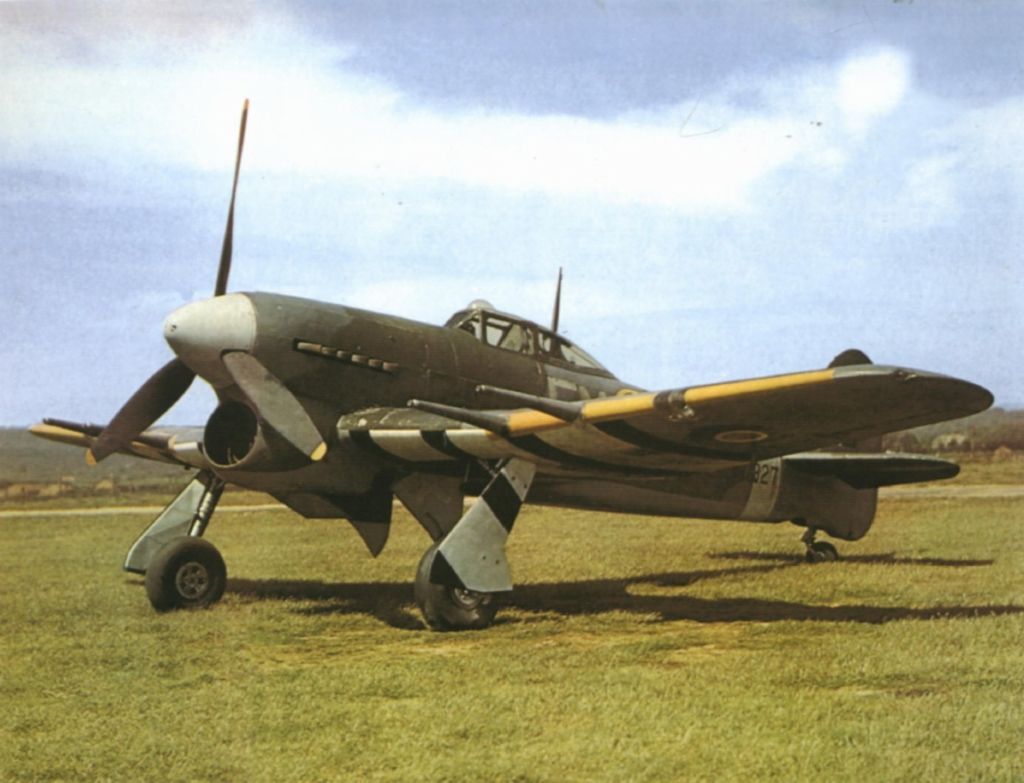

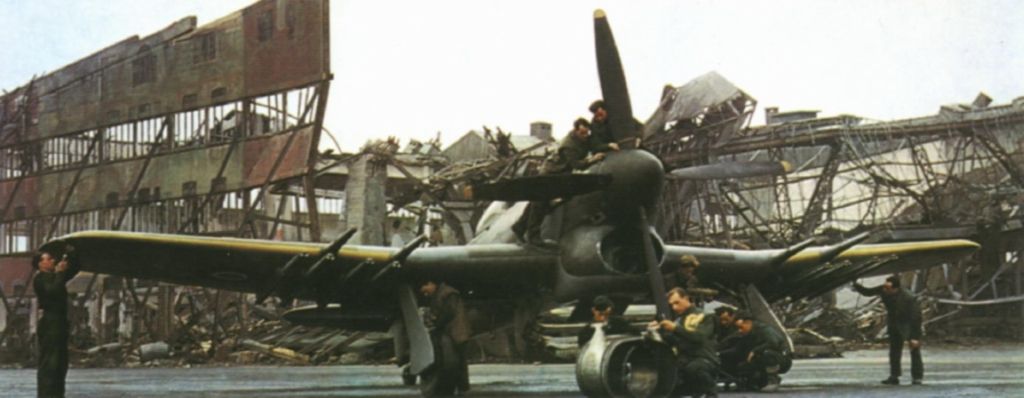
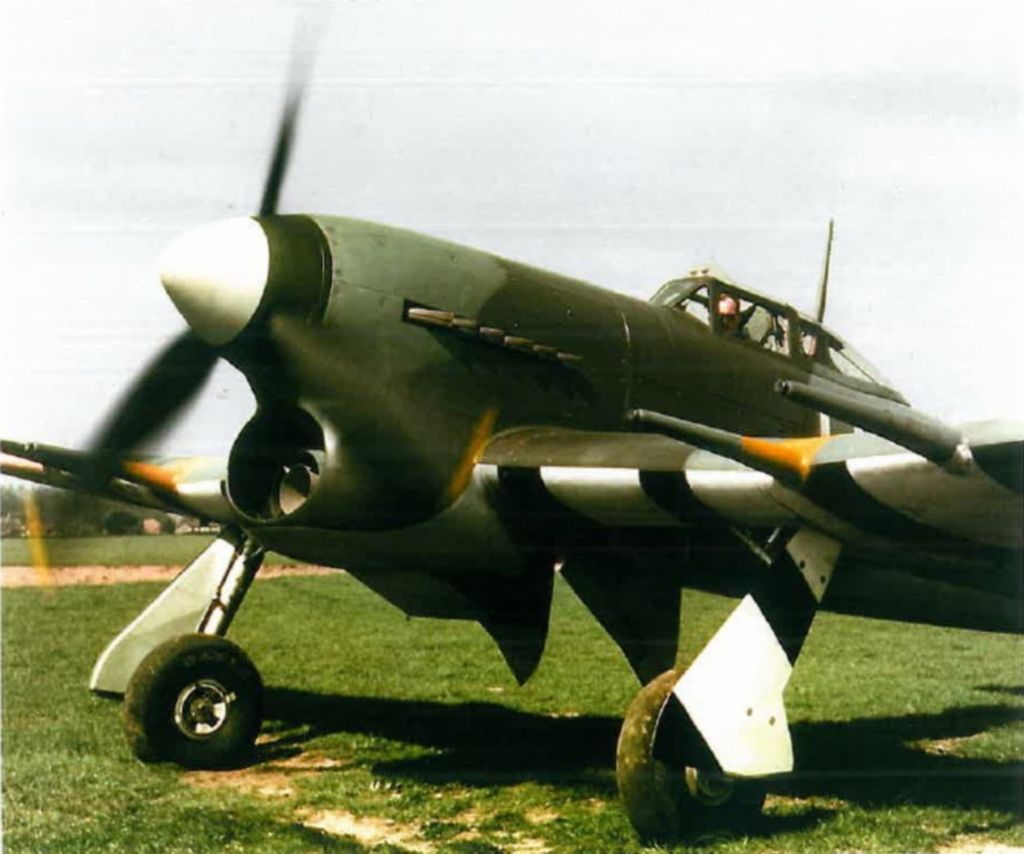
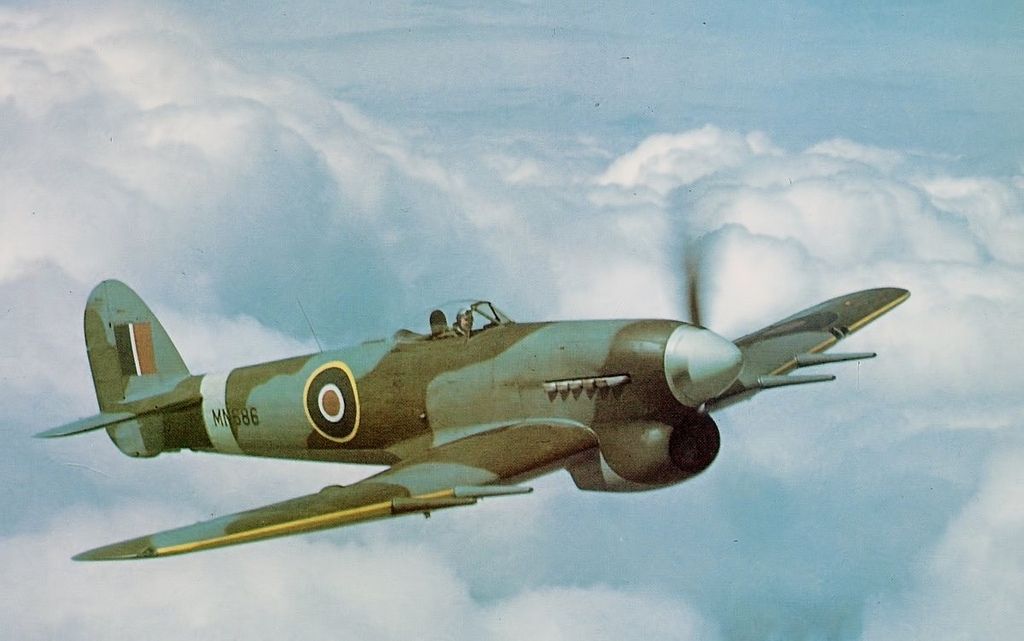
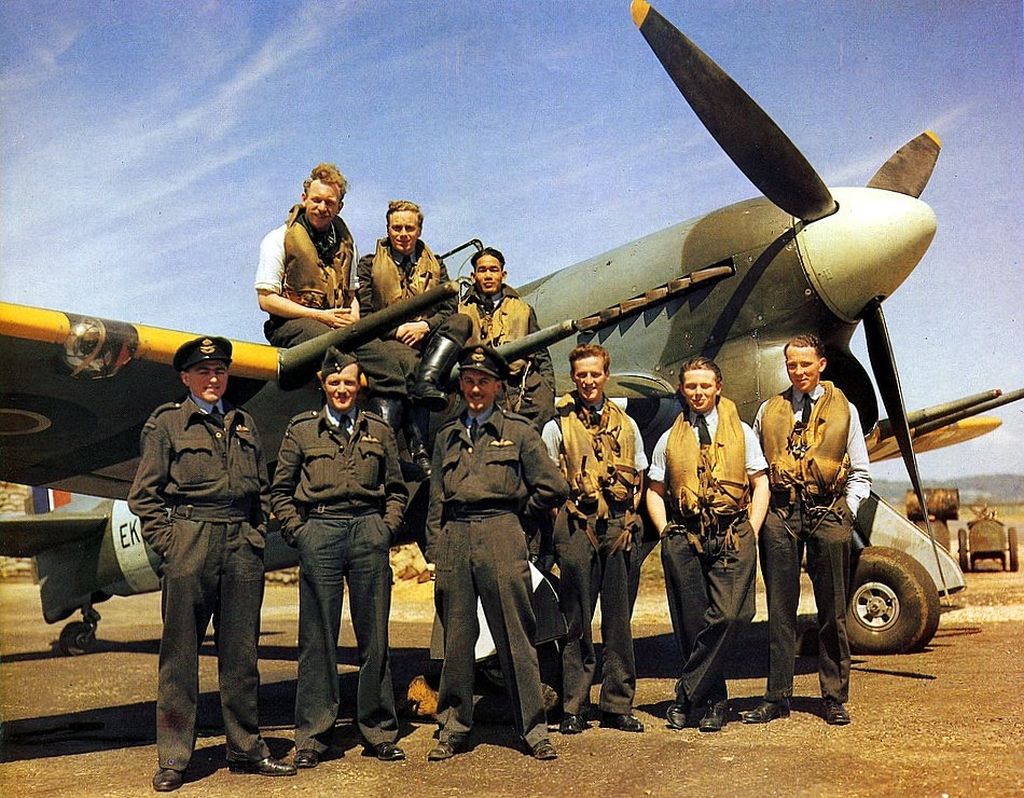
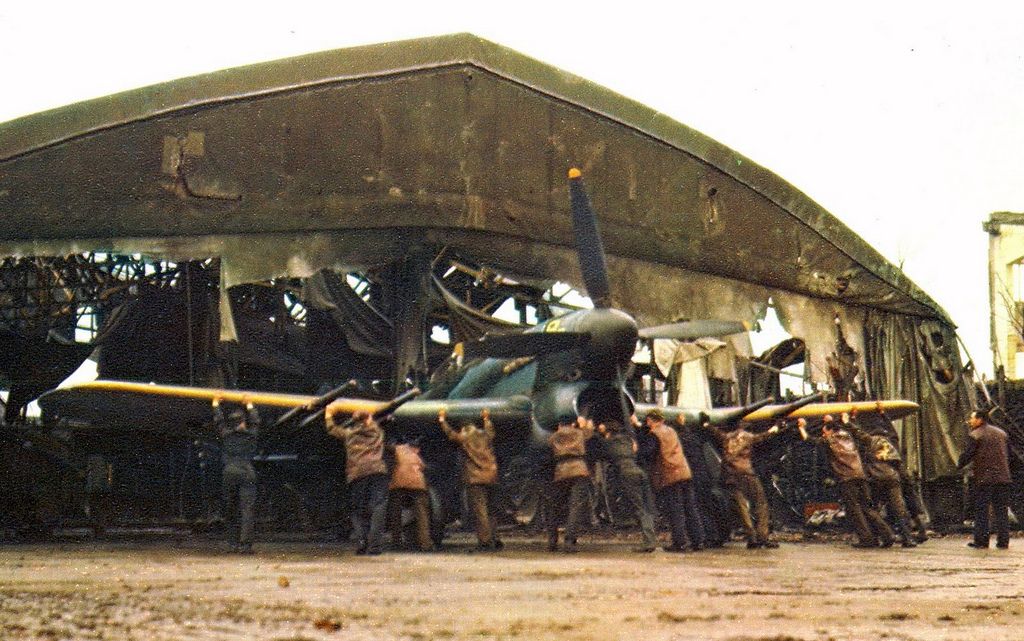
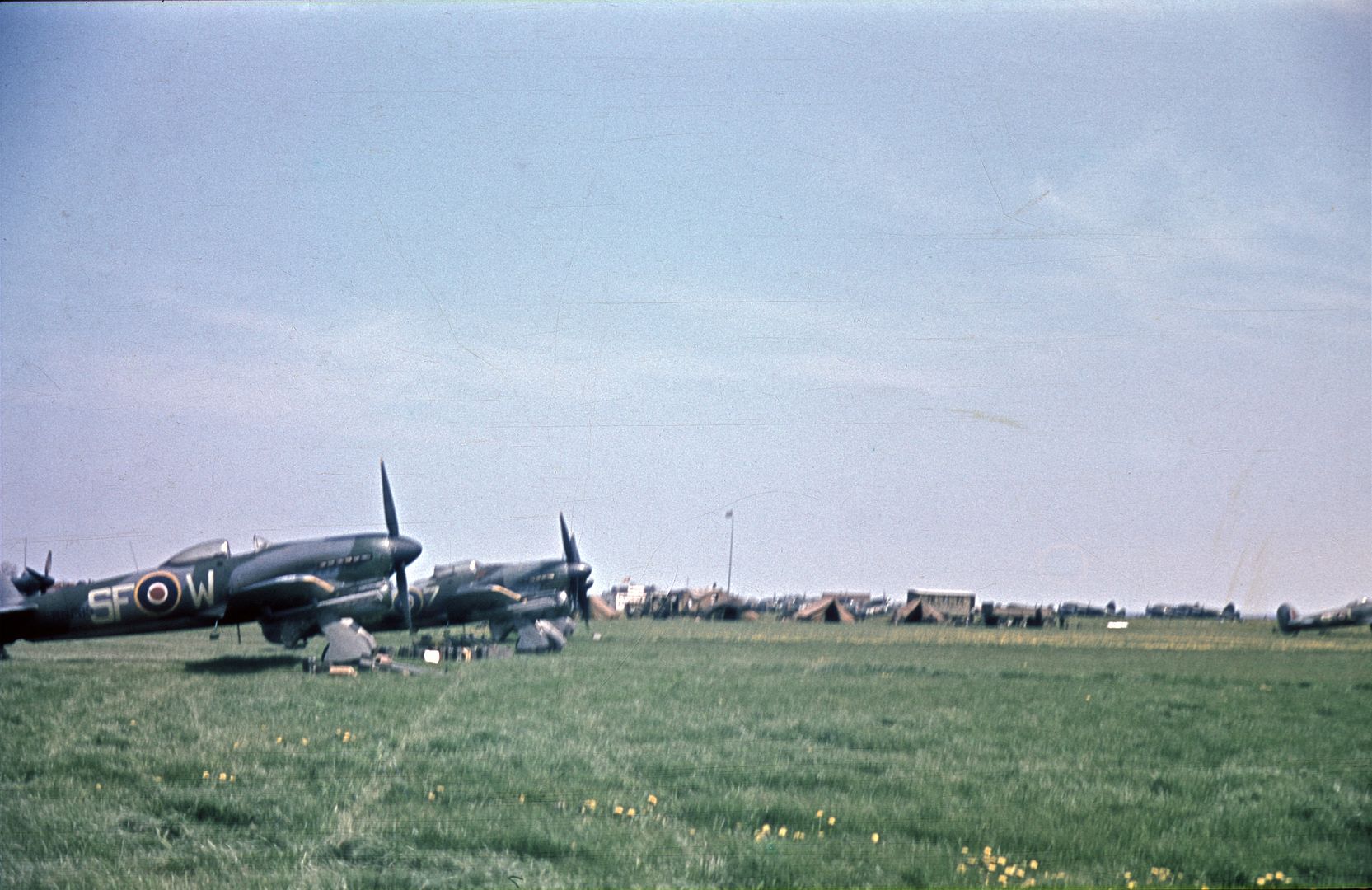

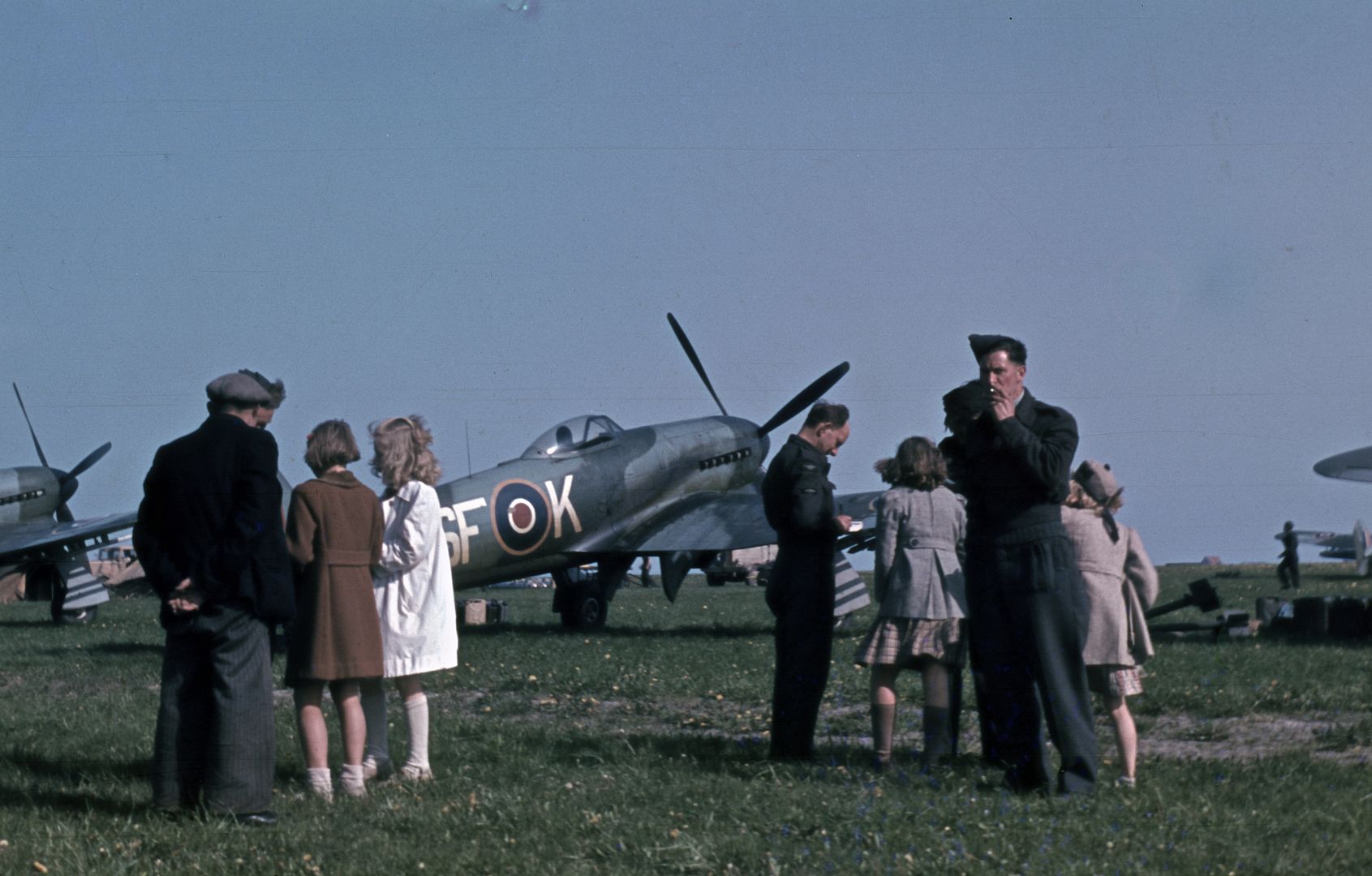
Below Cutaway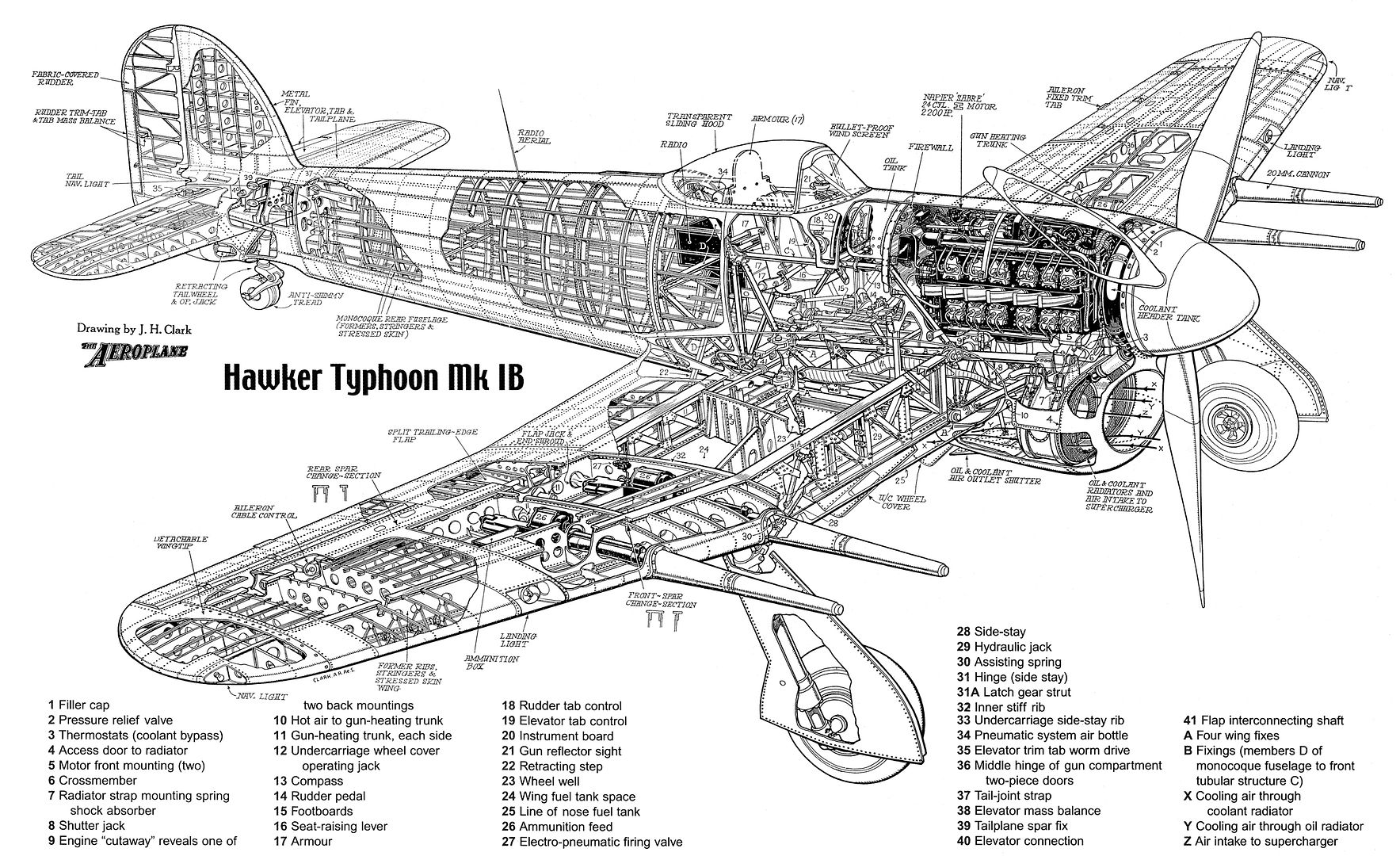
As usual right click.
Regards Duggy
-
 Level 7Top notch article! Fabulous pictures & reference. Thank you very much
Level 7Top notch article! Fabulous pictures & reference. Thank you very much

-
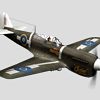 Admin
Admin
+1, Great stuff as always Duggy
Emel
Top notch article! Fabulous pictures & reference. Thank you very much


-
12 years agoSat Aug 09 2025, 01:24pmDuggy
 Main AdminThanks guys.
Main AdminThanks guys.
Some interesting reading.
Typhoon Modifications
February 5, 1944
3. With regard to (b)*, I am completely at a loss to understand the statement about the TYPHOON on page 5 of the Report. I can only assume that the defects referred to are the troubles experienced with the tail unit of the aircraft and with the Sabre engine. Both these troubles were, however, experienced much earlier (May or June, 1943) and have been overcome. I cannot believe that work on either the TYPHOON or the Sabre engine at this time was allowed to suffer by the transfer of the draughtsmen to help in the development of post-war civil aircraft. I have been unable to obtain any confirmation of this in the M.A.P. (Ministry of Aircraft Production) and both D/C.R.D. and I doubt the accuracy of this statement.
Sgd. Air Vice Marshall J.D. Breakey, DFC. A.C.A.S. (T.R.) Air Ministry
* refers to a previous minute that wasn't available.
March 25, 1944 SECRETARY OF STATE.
When I said in Minute 4 that the TYPHOON troubles had been overcome I referred, of course, to the major problems of the tail structure and the Sabre engine, and it was these problems to which, I believe, Prof. Appleton was referring. The difficulty due to oil leaks from the 4-bladed propeller is a very more recent trouble.
2. Perhaps it will be as well if I give you a brief history of the TYPHOON difficulties. The original aircraft fitted with a three bladed propeller presented two problems; the first was a serious vibration which was very difficult to eradicate, and the second was a failure in the air of a few aircraft, the cause of which could not be attributed to any particular defect. It was apparently due to the sum of several causes of which the vibration may have been one. Individually none of the defects would have caused failure. The failures were few in proportion to the total hours flown and, as the various possible causes were eliminated, the risk of failure became sufficiently remote to be an acceptable risk. Nevertheless, it is our endeavor to eradicate completely from British aircraft any weakness of this nature, however slight risk, and to this end the four bladed propeller and the TEMPEST tail were introduced.
3. When the four bladed propeller came into use it was found to leak oil (from the propeller and not from the engine) to an extent which may be unacceptable for operational use. We have, therefore. Been compelled to revert to the three bladed propeller until such time as we find a satisfactory remedy for the oil leak.
4. In reverting to the three bladed propeller it is necessary also to introduce a modification to the TEMPEST type tail plane in order to prevent recurrence of the vibration trouble. This involves fitting 10-lb., weights in the tail plane tips. There are some 70 TYPHOONS in Maintenance Units with TEMPEST type tail planes which must be modified before the are issued to the Service, and it may be modified before they are issued to the Service, and it may be the hiatus that this will cause which gave rise to the report that the serviceability and operational strength of the TYPHOON Squadrons is seriously low. Special arrangements have been made to modify these aircraft; they are being done at the rate of ten a day and all seventy should be completed by the end of this week. The situation is, therefore, not serious.
5. With regard to curing the leaking oil trouble, the Americans experienced the same thing with their MUSTANG aircraft which have four bladed Hamilton propellers very similar to the four bladed De Havilland propellers on our TYPHOONS. The Americans found a satisfactory cure by fitting a special seal and we were able to obtain from them a small number of these seals, which we are now trying out for our four bladed TYPHOON propellers. It seems likely that they will be successful, but we are unable to obtain from the Americans in this country more than the small number required for trials, as they have only sufficient to meet their own needs. Arrangements have, therefore, been made to obtain a supply from America, but these will not be available in the country before May. Other arrangements have, therefore, been made to manufacture similar seals in the country and sufficient of these should be coming available in tow or three weeks' time to meet requirements of the De Havilland propeller assembly line. I have been unable to obtain any confirmation of the report that seals have been lost in transit.
6. The TYPHOON with the TEMPEST tail and four bladed propeller has been thoroughly tested and will be satisfactory when we have overcome the leaking oil trouble. We believe that the American pattern seal will cure this trouble and trials are in progress, but they have not yet done sufficient flying time for any more definite statement than this.
Sgd. Air Vice Marshall J.D. Breakey, DFC. A.C.A.S. (T.R.) Air Ministry
March 26, 1944
A.C.A.S. (T.R.)
Please let me know, when the trials of the four bladed propeller with the seals have been completed, wether it is satisfactory. At the same time, I should be grateful if you would confirm that the 70 Typhoons in Maintenance Units have been modified and delivered to the Command. I should also be grateful if you would tell me at the same time whether there is any, and if so what, difference between the performance of the Typhoon with the four bladed propeller and the Tempest tail and that of the old Typhoon with the three bladed propeller.
April 10, 1944
SECRETARY OF STATE.
The trials of the four bladed propeller with the seals have now been satisfactorily completed, but we shall not be completely satisfied until they have done intensive flying in the Service. The four bladed propellers fitted with the seals have already been despatched for fitting to aircraft on the Hawker production line and modified propellers will be sent for the Gloster production line early next week. The expected delivery of the modified propellers is 50 per week. Retrospective fitting to aircraft already produced will be arranged as soon as supplies of the propellers become surplus to production line commitments.
2. The number of Typhoon aircraft with Tempest tail plane and three bladed propellers which had been modified in Maintenance Units with the 10 lb., weight in the tail plane tips was 85 up to Saturday, 1st April 1944, and later arrivals are being modified at the rate of 7 a day. Modified aircraft are being delivered to the Command as required.
3. The only important difference in performance between the Typhoon with the four bladed propeller and the Tempest tail plane, and the old type with the three bladed propeller is that the four bladed propeller had improved take-off by reduction of some 150-200ft.
Sgd. Air Vice Marshall J.D. Breakey, DFC. A.C.A.S. (T.R.) Air Ministry
Regards Duggy
Lieutenant Harvey Mace and Lieutenant Konstantin Vogel of the 357th Fighter Group with a Typhoon (SA-L) of No 486 Squadron, RAF_of_No_486_Squadron_RAF..jpg?width=1920&height=1080&fit=bounds)
_of_No_486_Squadron_RAF-1..jpg?width=1920&height=1080&fit=bounds)


-
12 years ago
 AdminTop $ Duggy
AdminTop $ Duggy
Post a reply
- Go to Previous topic
- Go to Next topic
- Go to Welcome
- Go to Introduce Yourself
- Go to General Discussion
- Go to Screenshots, Images and Videos
- Go to Off topic
- Go to Works in Progress
- Go to Skinning Tips / Tutorials
- Go to Skin Requests
- Go to IJAAF Library
- Go to Luftwaffe Library
- Go to RAF Library
- Go to USAAF / USN Library
- Go to Misc Library
- Go to The Ops Room
- Go to Made in Germany
- Go to Campaigns and Missions
- Go to Works in Progress
- Go to Juri's Air-Raid Shelter
- Go to Campaigns and Missions
- Go to Works in Progress
- Go to Skinpacks
- Go to External Projects Discussion
- Go to Books & Resources
